- Inshore Fishing
- Offshore Fishing

- Download ALL AT SEA
- Subscribe to All At Sea
- Advertising – All At Sea – Caribbean


So You Want to Work on a Yacht in the Caribbean
You know you want it...
Mocka Jumbies and Rum...

Maybe you live in a cold climate and dream of a career on warm tropical seas. Or, perhaps the Caribbean is home, but you’re stuck behind a desk and yearn to work on one of the yachts that cruise by your office window. Either way, you’re in luck. There are many opportunities to work on yachts in the region. What is key is to be prepared.
Positions Aplenty
“There are two types of jobs on yachts: at sea and shore-based,” explains John Duffy, president of the Antigua-based Caribbean Marine Association (CMA) . “Those at sea will include captains, first mates, engineers, stewards and stewardesses, deck hands, chefs/cooks, and even nurses and masseurs, all largely dependent on the size of the yacht.
For crewed charter yachts, “we seek couples, or a better word would be ‘teams’ – a captain and a chef/mate We need folks that are already comfortable working together in close quarters,” explains Dick Schoonover, manager of CharterPort BVI , in Tortola. “For a chef, a week-long sample menu is important to see. This shows that someone can plan for a week, and (theoretically) translate their menu plan into a shopping list.”

Chartering 101: Newbie Tips on WHERE to Charter a Yacht
In the sport fishing profession, “jobs here are mostly for deckhands. Very occasionally, and usually temporarily, a captain may be required,” says Gary Clifford, captain and owner of True Blue Sportfishing charters, based in St. George’s, Grenada.

Shore-based jobs are typically in the maintenance and supply industries, according to CMA’s Duffy. “These range from painting, carpentry and engine maintenance to electronic repairs plus the supply of goods and provisions.”
Sean Devaux, general manager of IGY’s Rodney Bay Marina , in St. Lucia, agrees and adds: “Boatyard jobs include technical work such as welding, woodwork, sail repairs, hydraulic and engine repairs, air conditioning repairs and all other basic repairs.”
Boat Repair and Storage: Caribbean Boatyard Updates

Landside positions on the charter side are for charter brokers and central agents, according to Ann McHorney, founder and director of Select Yachts , a Fort Lauderdale, Florida-based yacht charter, management and sales company. “These positions require a good knowledge of yachts, logistics, maritime regulations and, of course, computer skills.”
Avoiding the Boatyard Blues
Qualifications are Key
There are ‘must have’ qualifications needed in every marine-based position, as well as ‘extra’ skills that can mean the difference between landing the job or not.
“Captains must possess the requisite level of certification necessary for captaining a large vessel with guests on board,” says Ian Pedersen, marketing manager for the Americas for The Moorings , in Clearwater, Florida. “Past experience is a huge positive, as perhaps no other industry can properly prepare you for hosting guests from all over the world aboard the close-quarters of a yacht for extended periods of time. Finally, and perhaps most importantly, the individual’s personality is key, as they are ultimately the ambassador not only of the company, but of the destination the guests are visiting as well. It is our hope that our skippers make our guests’ vacation memorable for all the right reasons. Being able to properly welcome guests into the entire yachting experience and lifestyle, rather than simply getting the boat from A to B, is our aim.”
Finding the Right Boatyard

Charter yacht crew applicants must have their STCW Basic Safety Training International Certificate of Competency , says Select Yacht’s McHorney. “Additionally, prospective crew should present applicable skills in their CV. Any watersports, computer, technology and mechanical skills, travel experience, personal training and fitness, massage therapy, restaurant work, family cruising, childcare; so many things are applicable if they present it in a positive light. Employer references or previous captain references are a plus.”

In charter fishing and day tours, “we prefer experience, however many of our most successful staff members came in with no experience,” says Chris Hackshaw, owner of Hackshaw’s Boat Charters , in St. Lucia. “We look for people who are willing to learn, have good social skills, able to work flexible hours, and having a love of the ocean does not hurt! Once someone meets this, we see how they work and what line of work best suites them. Some may be better suited on the sport fishing boats, while others on the whale watching boats.”
For a boatyard position, “reliability, experience and qualifications” are most important, according to IGY Rodney Bay Marina’s Devaux.
Keep Your Day Job
Advice from Insiders
Patience is key, says The Moorings Pedersen. “There is a delicate balance between being the captain responsible for the safety and maintenance of the vessel and everyone on board, and recognizing that the guests on board are there to have fun and experience a special vacation.”

Yet, crews need to keep the word ‘work’ in mind. “Owners spend heavily on their investment. Therefore, crew need to be fair in providing the work for which they are paid. Creating a good mix of work combined with personal time is the best way to go,” recommends Select Yacht’s McHorney.
For those who don’t call the Caribbean home, there are often employment restrictions regarding non-nationals.
“Don’t come here to work unless you have a job lined up in advance,” says the CMA’s Duffy. “You are not permitted to seek work when you are on a holiday entry visa. If you do work ashore without a work permit you will be deported. If you wish to work either on a yacht or ashore, check the internet. There are plenty of jobs available and there are legal ways of getting employment.”
Don't Miss a Beat!
Stay in the loop with the Caribbean
- Caribbean Marine Association (CMA)
- CharterPort BVI
- Hackshaw’s Boat Charters
- Rodney Bay Marina
- Select Yachts
- The Moorings
- True Blue Sportfishing
I am qualifying for my Yachtmaster Offshore in April with Commercial Endorsement. I how been sailing in the Ionian for the last 3 years on my SO39ds. Full sailing experience 9 years. Lymington UK Nice/Toulon France. West Coast of Italy and Sicily. I hold STCW95 PPR ICC VHF Previous employment Fire Officer In Essex I would be interested to hear from you with regards possible skipper positions, l think that my partner would be interested in Hostess. I will be at the boat show 10th Jan if you have a stand there Kind regards David Whittel
hi i am intetested in doin carpentry work if u hav any availible .I hav 5 yrs xperience at robertson and caine
Hi there how do I applying for a job as a finisher in the yacht building industry I’m currently working at Robertson & Caine as a fairer/sander I can finish off small moulds big moulds that needs to buffed I can do spray painting as well with gel coat I can do repairs on finished moulds as well would appreciate if you can get back to me here’s my contact details ( cell number : +27719997828) (email: [email protected] )
We are looking for fully qualified crew couples (captain and chef with cooking course certificate) for a busy charter company in the British Virgin Islands. Do you have a professional resume/CV you can send me? Please also note we are interviewing fully vaccinated crew only. Please send enquiry to [email protected] Kind regards Jo-Ann Downing (Company Director)
LEAVE A REPLY Cancel reply
Save my name, email, and website in this browser for the next time I comment.
Notify me of follow-up comments by email.
Notify me of new posts by email.
This site uses Akismet to reduce spam. Learn how your comment data is processed .
Sunsail Commemorates its 50th Anniversary with BVI Flotilla in 2024
Luxury awaits at the virgin islands boating expo: yacht shop, wine & dine, stay & play, land or water flitescooter takes e-foiling to new heights (and makes it easy), so caribbean you can almost taste the rum....

Recent Posts
The life and times of a caribbean one design fleet – st. maarten’s jeanneau 20’s, st. lucia unveils new ally for superyachts: blanchard yacht services, recent comments, subscribe to all at sea.
Don't worry... We ain't getting hitched...
EDITOR PICKS
Talkative posts, the seven words you can’t put in a boat name, saying “no”, program for financing older boats – tips and suggestions, popular category.
- Cruise 1741
- St. Thomas, US Virgin Islands 513
- Tortola, British Virgin Islands 432
- Caribbean 424

Get Onboard
Superyacht Training
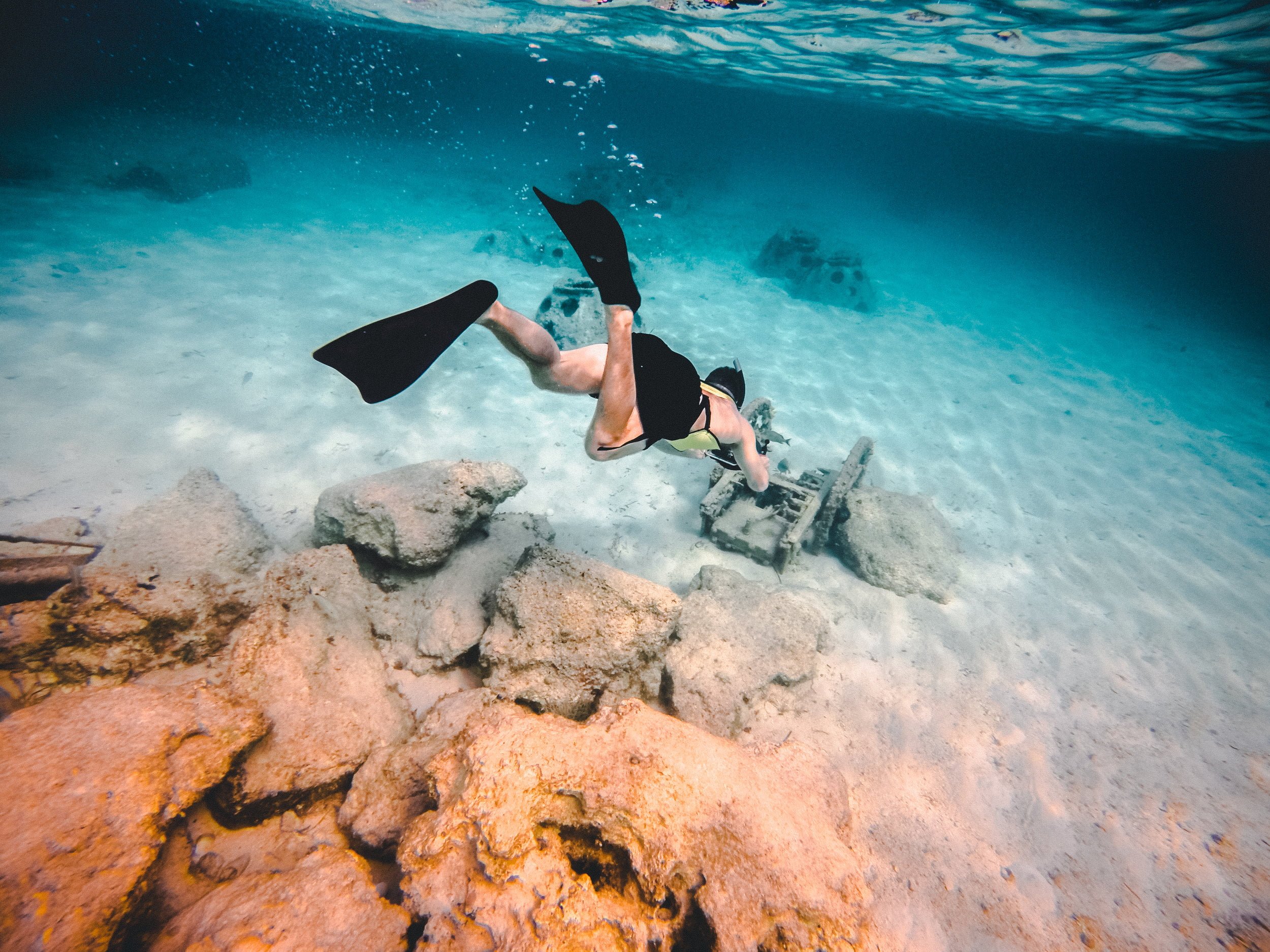
Get a Yacht Job in the Caribbean and Bahama Islands
Yacht jobs in the Caribbean have a lot of variety on offer. There many types of vessels sailing this area, and quite understandably so – it is right up there as one of our top 10 picture-perfect places to work. The islands are home to vibrant and healthy marine and coral life, making it popular for scuba diving and snorkelling. Pristine waters, beautiful beaches, tropical forests, volcanic mountains, rustic beach bars and island vibes are just a few of the jewels of the Caribbean.
The Caribbean and Bahamas are very popular for superyachts, especially during the Northern Hemisphere winter months: December – May. Keep reading if you are interested in sailing one of the most beautiful charters in the world!
What Qualifications Do You Need?
The bare necessities to qualify for work onboard a yacht include:
- STCW Basic Safety Training course
- An ENG1 crew medical certificate
Due to the popularity of the Caribbean route, however, we recommend that you seek opportunities to grow your skills and experience, so that you are not a total novice when applying. Besides your Interior Crew Training Course (if you are interested in becoming a steward or stewardess), why not consider additional courses that speak to the activities available in the Caribbean and Bahamas? Think about scuba diving or taking part in a course to learn about the diverse coral and marine life. This will also give you more talking points with guests!
Where to go and When
Vessels generally tend to crew up for the Caribbean season in October and November. Most vessels will base themselves in South Florida, making Fort Lauderdale and West Palm Beach the most common places for crew to find work. Yachts may hire crew again before crossing to their next seasonal destination, the most popular of which is the Mediterranean in March and April. Keep this in mind, because if you impress on your Caribbean charter, you may get rehired for the Mediterranean trip!
Visa & Legal Requirements
To work on a boat cruising the Caribbean it is advisable to have both a Schengen and B1B2 visa as some of the Islands still fall under European and US dependency. It is also important to have many spare pages in your passport for a Caribbean season, as there is immigration control which requires an entry and exit stamp in your passport for every Island. Speak to us if you’d like to discuss possible courses that could benefit you . Our partner academy is fully ITY & MCA internationally accredited.
If you’d just like to get an idea whether a yacht job is really for you, consider downloading our ultimate yacht crew handbook that will give you the ins and outs of yacht crew life, with additional tips to help you get that job on a private yacht.
Needing more?
Error: Contact form not found.
RYA/MCA Online
1. what are the basic requirements you need to be eligible to work in the yachting industry, 2. what is the stcw and why do i need it, 3. what is the eng1 medical certificate, 4. what land based experience will help me find a super yacht job, 5. what are the different departments onboard, 6. what crew training is required for me to work as a junior deckhand.
- Yachtmaster/Coastal Skipper Theory
- Yachtmaster/Coastal Practical
- Specialist Super Yacht Training Course (Deck Hand Training Course)
- RYA Power Boat Level II
- RYA Personal Watercraft Course
- RYA Competent Crew Certificate
- RYA Day Skipper Theory and Practical Certificates
- VHF Radio Operator’s License
7. What crew training is required for me to work as a junior stewardess?
- Stewardess Course
- Proficiency in Designated Security Duties (PDSD)
- MCA Food Safety Level 2
- RYA Powerboat Level 2
8. How do I book my training courses?
9. how do i get my first job on a yacht, 10. are these courses worth it, or am i just wasting my money, 11. will i get hired for my first job from south africa, 12. what is daywork, 13. what are the best locations to get a yacht job, 14. how much can a motor yacht stewardess or deckhand earn, 15. what are the negatives of working on a yacht, 16. what are the positives of working on a yacht, 17. is working on a super yacht for everyone, 18. what is the minimum age to work on a yacht, 19. is accommodation provided when i am completing my yacht training in cape town.

Living On A Sailboat In The Caribbean
In my years of sailing, I’ve had the opportunity to live on a sailboat in some of the most beautiful places on earth – including the Caribbean.
There’s something special about living on a boat in this part of the world. Maybe it’s the turquoise waters, the white sand beaches, or the friendly locals. Whatever it is, I can’t get enough of it!
If you’re thinking about making the jump to liveaboard life in the Caribbean, here’s what you need to know…
How Much Does It Cost To Live On A Sailboat In The Caribbean?
What does it cost to live on a sailboat in the Caribbean? It’s a question I get asked a lot, and it’s not an easy one to answer. There are so many variables, from the size and type of boat you live on, to the location you choose, to the lifestyle you lead.
That said, I can give you some ballpark figures based on my own experience living on a sailboat in the Caribbean for over 10 years. Keep in mind that these are just estimates, and your own costs may be higher or lower depending on your situation.
The biggest variable in the cost of living on a sailboat is the boat itself. If you own a boat, you’ll have to factor in the cost of maintaining and repairing it. If you’re chartering, you’ll need to budget for the cost of the charter itself.
Assuming you have a boat and are living on it full-time, your other major costs will be food and fuel. Food costs will vary depending on how much you eat out, and whether you buy fresh or canned goods. Fuel costs will depend on how much you use your engine, and whether you use propane or diesel.
Other costs to consider include insurance, docking fees, and repairs.
Insurance is a must if you’re living on a sailboat in the Caribbean. Docking fees will vary depending on the marina you choose, and repairs can be expensive if you’re not handy with a wrench.
All told, you can expect to spend around $2000 per month if you’re living on a sailboat in the Caribbean. This is just a rough estimate, and your actual costs will vary depending on your situation.
Cost Of Living On A Sailboat In The Caribbean
Sailboats are often associated with luxury and a carefree lifestyle. But what is the cost of living on a sailboat in the Caribbean really like?
I spoke with Gary Jobson, world-renowned sailor and sailing analyst, about the cost of living on a sailboat in the Caribbean. Here’s what he had to say:
“The cost of living on a sailboat in the Caribbean can vary greatly depending on the size of the boat and the lifestyle you want to live. A small boat with a few creature comforts will cost less than a larger boat with all the bells and whistles. And, of course, your lifestyle will also dictate your costs.
“If you want to live a simple life, you can do so quite cheaply. But if you want to live a more luxurious lifestyle, it will cost more. It really all comes down to your personal preferences.”
So, there you have it! The cost of living on a sailboat in the Caribbean can vary greatly depending on your lifestyle and the size of your boat. But no matter what your budget is, you can find a way to enjoy the sailing lifestyle in the Caribbean.
Maintaining Your Boat
Assuming you have the boat in the water, you now have to maintain it. This includes painting the bottom, varnishing the bright work, replacing the zincs on the hull, and caring for the sails and canvas. You also have to keep the boat clean and free of mildew.
In the tropics, this is a full-time job. You have to wash the boat every day with fresh water to keep the salt from eating into the paint and gelcoat. You also have to make sure the bilges are dry and free of any stagnant water.
Marina or Mooring Costs
The cost of living on a sailboat in the Caribbean can be quite expensive, especially when it comes to Marina or Mooring fees. In some cases, these fees can be as high as $600 per month!
However, there are a few ways to help offset these costs. One way is to live aboard your boat at a marina that offers discounts for live-aboards. Another way is to join a sailing club which often have their own moorings or docks.
Of course, the best way to offset these costs is to simply sail your boat to a less expensive location. In many cases, you can find moorings for as little as $100 per month in the Caribbean.
So, if you’re looking to save money on your sailing lifestyle, be sure to keep an eye on your Marina or Mooring fees. With a little planning, you can easily offset these costs and keep your budget in check.
Food And Supplies
What does it cost to live on a sailboat in the Caribbean? It’s cheaper than you might think!
Here are some tips on food and supplies:
- Shop around for the best prices on food and supplies.
- Buy in bulk when possible.
- Use coupons and discounts.
- Shop at local markets for fresh produce.
- Plan your meals ahead of time to save money.
With a little planning and effort, you can save money on food and supplies and enjoy a great lifestyle in the Caribbean!
What are the little luxuries that make living on a sailboat in the Caribbean so enjoyable? It could be the sound of the waves lapping against the hull of your boat at night, or the warmth of the sun on your face during the day.
Maybe it’s the feeling of being surrounded by natural beauty, or the sense of freedom that comes with being on the open sea.
Whatever it is that makes living on a sailboat in the Caribbean special, there’s no doubt that it comes at a cost. But for those who are willing to trade in the comforts of land for the adventure of a lifetime, the cost is well worth it.
Gas And Water
The cost of living on a sailboat in the Caribbean can be expensive, but it doesn’t have to be. One of the biggest expenses is gas and water.
Here are a few tips to help you save money on gas and water:
- Use a water maker. A water maker will save you money on water by turning seawater into fresh water.
- Use a holding tank. A holding tank will save you money on water by storing water that you don’t use right away.
- Use a gas saver. A gas saver will save you money on gas by reducing the amount of fuel you use.
- Use a wind generator. A wind generator will save you money on gas by generating electricity from the wind.
- Use a solar panel. A solar panel will save you money on gas by generating electricity from the sun.
Can You Live On A Sailboat?
Sure, you can live on a sailboat in the Caribbean. But is it really living? I mean, you’re constantly having to worry about the weather, you’re always fixing something on the boat, and you’re never really sure where you’re going to be from one day to the next.

Don’t get me wrong, I love sailing. It’s one of the most freeing and exhilarating experiences you can have. But it’s not for everyone. Some people just can’t handle the constant uncertainty and the lack of creature comforts.
So, if you’re thinking about living on a sailboat in the Caribbean, ask yourself this: can you handle being constantly on the move, always having to be prepared for the worst, and never really knowing what’s going to happen next? If you can, then go for it. It’s an experience you’ll never forget.
You May Learn To Sleep Lightly
You may learn to sleep lightly on a sailboat. The gentle rocking of the boat can lull you to sleep and the fresh air can help you to sleep soundly.
However, you may also find yourself wakeful in the middle of the night, listening to the creaking of the boat and the sound of the waves.
If you are wakeful, you may want to take a look around the boat to make sure everything is secure, or simply enjoy the peacefulness of the night.
How Do You Feel About The Heat?
The heat can be intense when sailing in the tropics. I once sailed from Antigua to St. Lucia in the middle of August. The temperature was in the low 90s with high humidity.
I was constantly wet from sweating and the boat was like an oven. I don’t mind the heat, but I know some sailors who do. They prefer to sail in cooler weather.
How Much Space Do You Need?
You might be surprised how little space you actually need to live on a sailboat. Of course, it depends on the size of the boat and how many people are living on it. But even a small sailboat can comfortably accommodate two people.
Of course, you won’t have the same amount of space as you would in a house or apartment. But that doesn’t mean you can’t live a comfortable life on a sailboat. There are plenty of people who do it successfully.
So, how much space do you need? It really depends on your lifestyle and what you’re used to. If you’re used to living in a small space, then you’ll probably be just fine living on a sailboat. But if you’re used to a more spacious lifestyle, then you might find it a bit more challenging.
Ultimately, it’s up to you to decide how much space you need. But don’t let the size of the boat deter you from living your dream. There are plenty of people who have done it successfully.
Why would you want to live on a sailboat?
Sailing is one of the most freeing and exhilarating experiences you can have. And what could be more freeing and exhilarating than living on a sailboat?
Sailboats are relatively inexpensive to maintain and operate. They offer a level of freedom and flexibility that other types of boats simply cannot match.
Plus, living on a sailboat in the Caribbean is about as close to paradise as you can get. The weather is perfect, the scenery is beautiful, and the people are friendly. What more could you ask for?
Why would you want to live in the Caribbean?
The Caribbean is a great place to live for a number of reasons. First, the weather is amazing. You can expect sunny skies and warm temperatures year-round.
Second, the Caribbean is a great place to relax and enjoy life. There are plenty of beaches to lounge on, and the laid-back lifestyle is perfect for those who want to escape the hustle and bustle of city life.
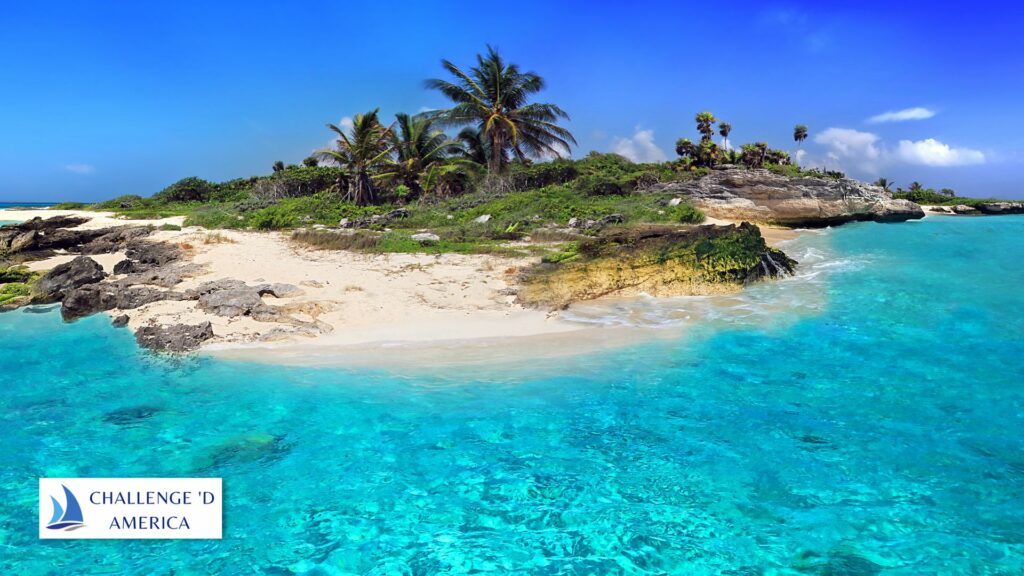
Third, the Caribbean is a great place to sail. The trade winds make for perfect sailing conditions, and there are plenty of islands to explore.
And fourth, the people in the Caribbean are some of the friendliest you will ever meet. They are always ready to help out and make you feel welcome.
So, if you are looking for a place to call home, the Caribbean is a great option. It has everything you need to live a happy and healthy life.
What Are Some Things You Should Know About Sailing In The Caribbean?
- The Caribbean is a great place to sail, with warm weather and beautiful scenery.
- There are many different islands to explore, each with its own culture and attractions.
- The sailing conditions can be challenging, with strong winds and currents.
- There are also hurricanes and tropical storms to be aware of.
- But overall, sailing in the Caribbean is an unforgettable experience.
Tips For Sustaining Yourself While Living/Working In The Caribbean
1. Find a balance between work and play: It’s easy to get caught up in the non-stop party atmosphere of the Caribbean, but it’s important to find a balance between work and play. Make sure to schedule some time each day to relax and enjoy the beautiful surroundings.
2. Get involved in the local community: One of the best ways to sustain yourself while living in the Caribbean is to get involved in the local community. There are many ways to do this, whether it’s volunteering, joining a local sports team, or simply getting to know your neighbors.
3. Be prepared for the unexpected: The Caribbean is known for its laid-back lifestyle, but that doesn’t mean that everything will always go according to plan. Be prepared for the occasional power outage or unexpected delay.
4. Learn to relax: One of the most important things to remember while living in the Caribbean is to relax. This is a different way of life, and it’s important to go with the flow. Don’t sweat the small stuff and enjoy the simple pleasures of life.
Is Living On A Sailboat Worth It?
Yes, living on a sailboat can be an incredibly rewarding experience. It allows you to live a lifestyle that is far removed from the hustle and bustle of everyday life on land.
You get to experience the beauty of the Caribbean islands and their people firsthand. And, of course, sailing is an amazing way to see the world.
Of course, there are also some challenges that come with living on a sailboat. It can be difficult to find safe anchorages and good weather can be hard to come by at times. But, overall, I think the pros outweigh the cons and living on a sailboat is definitely worth it.
How big of a sailboat do I need to live on?
Assuming you have no experience living on a boat, you’ll need a minimum of a 35-40 footer. This size will give you some room to move around and store things. If you plan to live on your boat long-term, you might want to consider a larger boat.
Do You Pay Taxes If You Live On A Boat?
The answer to this question depends on the country in which you reside. If you live in the United States, you are required to pay taxes on your income, regardless of whether it is earned on land or at sea.
However, if you live in a country with more relaxed tax laws, such as the Bahamas, you may not be required to pay taxes on your income from sailing.
What Are Disadvantages Of Sailing?
- Sailing can be dangerous.
- The weather can be unpredictable and severe storms can occur without warning.
- Sailing can be expensive, especially if you own your own boat.
- Sailing takes time and effort to learn how to do it properly.
- You need to be physically fit to sail, as it can be demanding on your body.
Is Sailing An Expensive Hobby?
No, sailing is not an expensive hobby. In fact, it can be quite affordable. There are many ways to sail without spending a lot of money.
You can sail on a smaller boat, or you can charter a boat for a week or two. You can also join a sailing club, which will give you access to boats at a fraction of the cost of owning one.
Conclusion On Living On A Sailboat In The Caribbean
Living on a sailboat in the Caribbean is an amazing experience that I would recommend to anyone. The scenery is breathtaking, the people are friendly, and the sailing is some of the best in the world.
There are, of course, some challenges to living on a boat, but overall it is an incredibly rewarding experience. I’m so grateful to have had the opportunity to live on a sailboat in the Caribbean and I hope to do it again someday soon.
Similar Posts
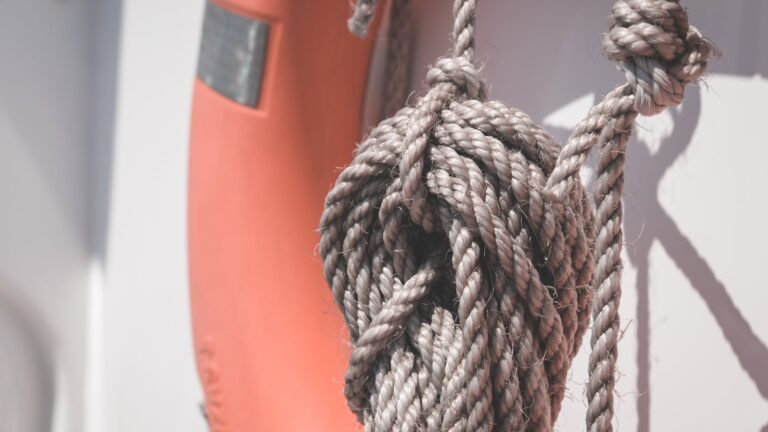
What Is The Safest Sailboat In The World?
Introduction: The World’s Safest Sailboat – The Kraken 50 In recent years, sailing enthusiasts have been abuzz with news about a revolutionary new sailboat: The Kraken 50, billed as “the safest blue water yacht in build today.” Unlike all her contemporaries, this craft has a unique feature known as “Zero Keel” construction–an all-in-one hull and…
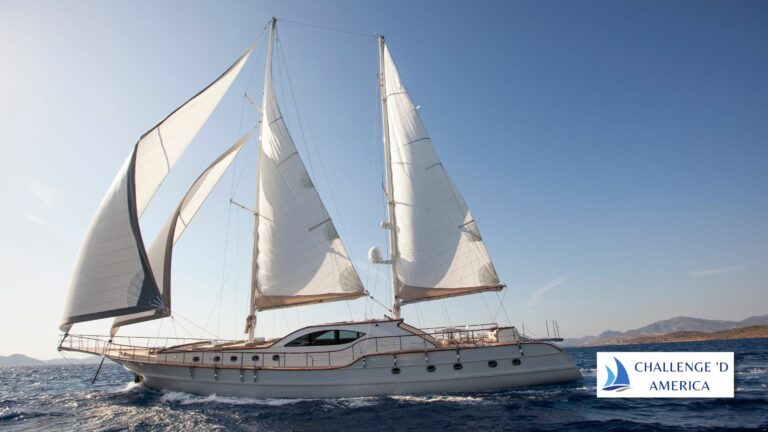
Facts About Sailboats
The sailboat is one of the most popular and enduring types of vessel ever created. Whether you’re an experienced sailor or you’ve never set foot on a boat in your life, there’s something about a sailboat that just inspires awe. In this article, we’re going to explore 10 amazing facts about sailboats that you may…
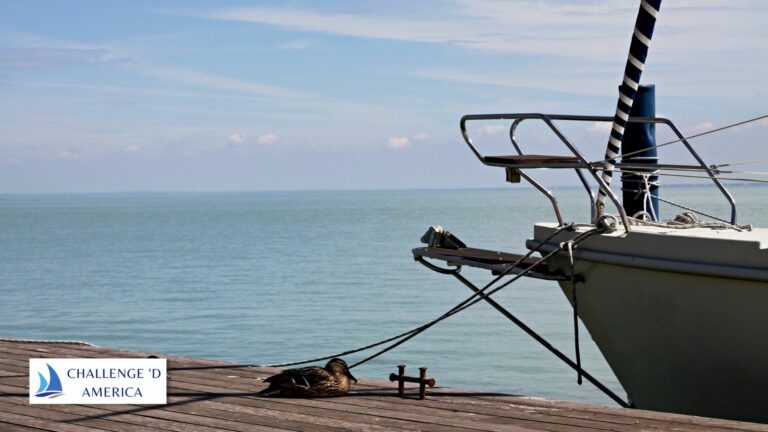
What Is Bow Of A Sailboat?
Hello sailing enthusiasts! I’m here to talk about one of the most important components of any sailboat: the bow. The bow of a sailboat is the front part of the boat, and it serves a variety of purposes. In this article, I’ll discuss what the bow is, the different parts of the bow, and the…

What Size Wave Can a Sailboat Handle?
Understanding Wave Size for Sailboats: Determining Your Boat’s Limit Sailing is an exhilarating experience that has been enjoyed by people around the world for centuries, but it also comes with its own unique set of risks, especially when dealing with large waves at sea. It’s important to understand both the height and length of waves…
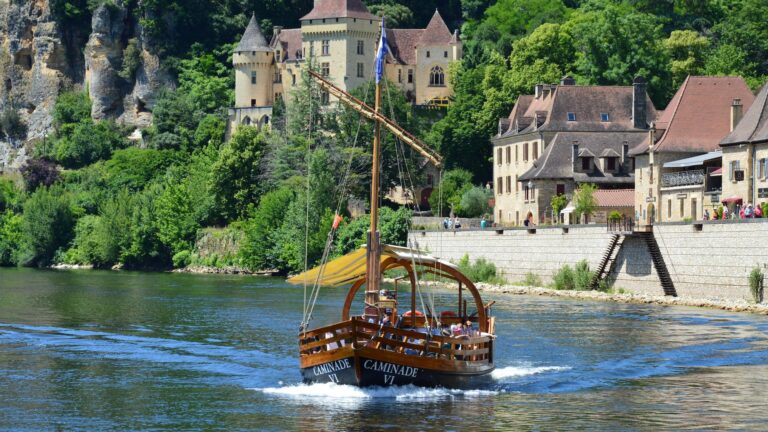
Is It Practical To Live On a Sailboat?
Living on a sailboat can be an incredibly rewarding experience, but it is important to approach it with caution and come prepared for the unique lifestyle changes that come with this type of living arrangement. With the right boat, maintenance and utility management, income plan, and marina, living on a sailboat can be achieved in…
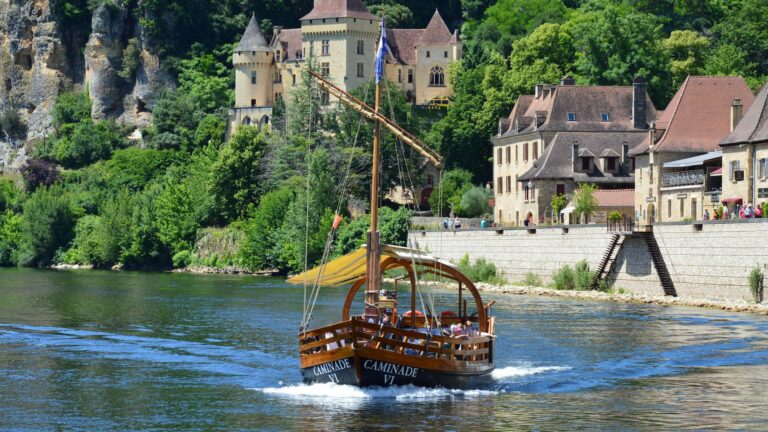
What Is a Forestay On a Sailboat?
Sailboats are complex pieces of marine engineering, and it takes an experienced sailor to understand the intricacies of operating one safely and efficiently. One critical element that helps make sailing possible is the forestay, which plays an essential role in keeping the mast upright and providing stability to the boat as it moves through the…
Available Opportunities
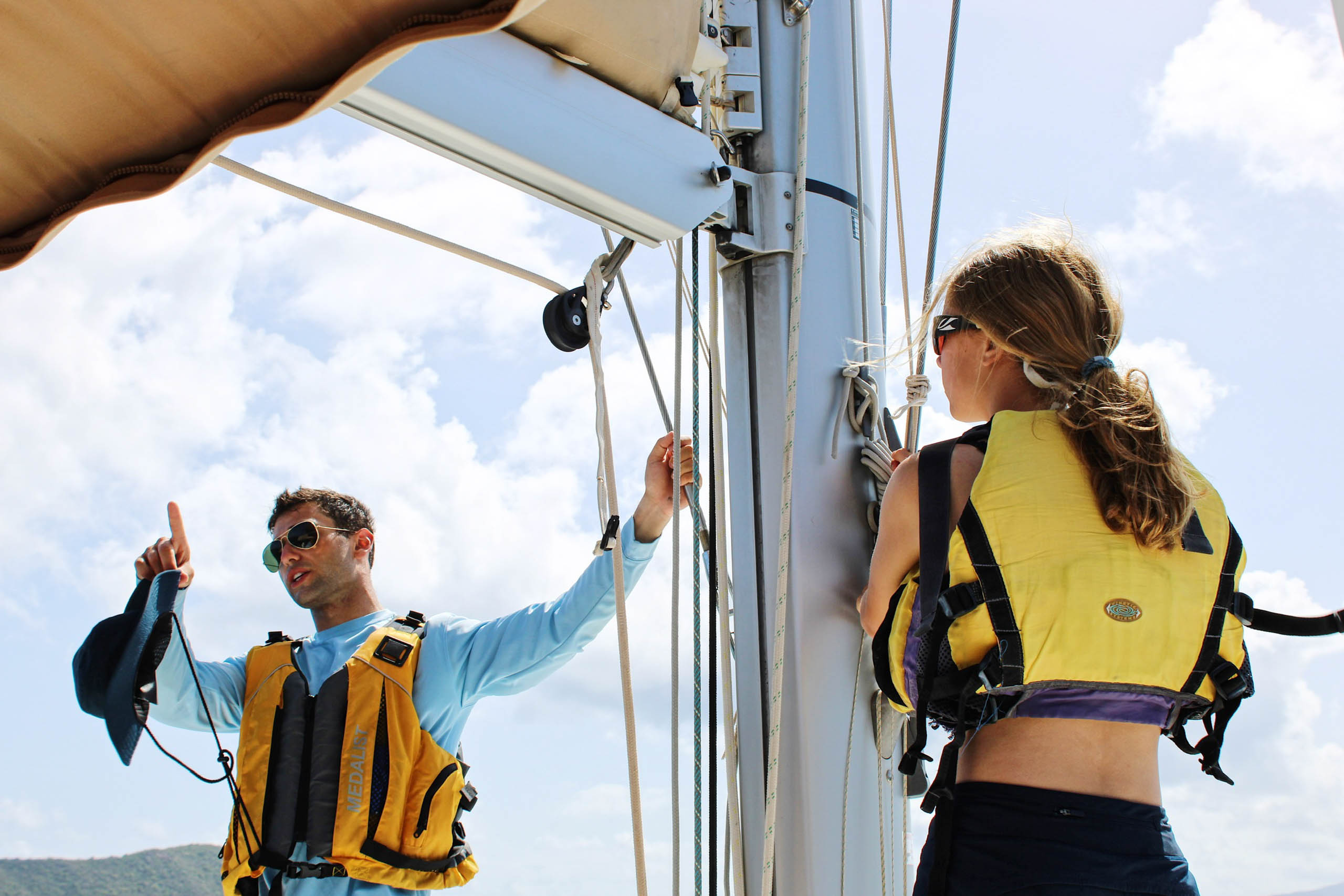
Captains at Sail Caribbean live and sail with teenagers aboard 50′ sloops or 43′ catamarans in the British Virgin and Leeward Islands. Along with the Mate onboard, Captains are responsible for leading their students through all aspects of the program including sailing, instruction of curriculum, shipboard life (meals, cleaning, etc.), land activities, time management, and group living. Life onboard is a part of the Sail Caribbean experience that can be the most meaningful for our students. This position is rigorous but very rewarding and requires a strong dedication to the students and the goals of the program. Captains are responsible for the facilitation of group dynamics onboard and planning activities that challenge students. Candidates must be very energetic and enthusiastic about working with teenagers and must have experience doing so. Instructing skills must be outstanding and should be approached with creativity. Large yacht seamanship and coastal cruising are very desirable skills. Captains are also responsible for managing all paperwork associated with the account of daily activities, boat maintenance and repairs, inventory, and student evaluations. It is based on these standards that the majority of Captains first serve as Mates so that we can ensure that only the most qualified professionals serve in this capacity.
Requirements:
- Passport valid for travel to British Virgin Islands
- Minimum 2 years college experience
- Expertise and experience in large yacht or small boat sailing, seamanship, sailing instruction, coastal cruising, navigation, helmsmanship, and safety at sea
- Substantial experience working with teenagers in an educational, athletic, or camp setting, with special consideration given to residential (sleep-away) experience
- Current Wilderness First Aid (WFA) and CPR certifications
- Excellent interpersonal, leadership, and mentoring skills
- Positive and enthusiastic attitude, team-oriented, and a strong work ethic
Other Considerations:
- ASA or US Sailing Basic Keelboat Instructor
- Wilderness First Responder (WFR) or EMT certification
- Outdoor Education experience
- Team-teaching experience
- Marine Biology experience
- Equipment/engine maintenance skills
- Racing experience
- Scuba certification
- Experience teaching watersports (water-skiing, wakeboarding, windsurfing, and kayaking)
Mates at Sail Caribbean sail on their home boat with teenagers aboard 50′ sloops or 43′ catamarans in the British Virgin and Leeward Islands. Mates assist the Captain in leading students through all aspects of the program including sailing, instruction of curriculum, shipboard life (meals, cleaning, etc.), land and water activities, time management, and group living. Group living is a part of the Sail Caribbean experience and can be the most meaningful for our students. Mates assist in the facilitation of group dynamics onboard and planning of activities that challenge students. Candidates must be very energetic and enthusiastic about working with teenagers and must have experience doing so. Instructing skills must be outstanding and should be approached with creativity. This position is rigorous but very rewarding and requires a strong dedication to our students and the goals of the program. To help ensure a varied learning experience, mates regularly rotate onto different boats in the fleet while still living on their home boat. It is our goal at Sail Caribbean to train our mates to become Captains.
- Experience in large yacht or small boat sailing, seamanship, sailing instruction, coastal cruising, navigation, helmsmanship, and safety at sea
- Wilderness First Responder (WFR) or EMT certification (see also Mate/Medical Officer)
- Divemaster (see also Mate/Divemaster)
- Marine Biology experience (see also Mate/Marine Biologist)
Mate/Dive Instructors live aboard their home boat with teenagers on 50′ sloops or 43′ catamarans in the British Virgin and Leeward Islands. Mates assist the Captain in leading students through all aspects of the program including sailing, instruction of curriculum, shipboard life (meals, cleaning, etc.), land and water activities, time management, and group living. In addition to all other responsibilities and requirements of the Mate position, Mate/Dive Instructors assist our year-round, land-based diving operation, Sail Caribbean Divers (SCD). This includes instruction, supervision, and surface support as needed while the teenagers are diving. Mate/Dive Instructors are also responsible for assisting students with skills and ensuring that students have everything they need before meeting the dive boat. Depending on the student/instructor ratios, you may or may not be needed to certify students during every program. In the event that you are not acting as the lead instructor for a group, you will be expected to provide support as needed by SCD. Proper facilitation of group dynamics is integral to the success of Sail Caribbean and therefore will carry over into the scuba experience as well. This position is rigorous but very rewarding and requires a strong dedication to the students and the goals of the program.
- Expertise and experience in diving instruction
- Minimum 25 PADI certifications
- MSDT and experience teaching or assisting with specialties
- Current/renewed teaching status PADI Instructor
- Positive and enthusiastic attitude, team oriented, and a strong work ethic
- Experience in large or small boat sailing, seamanship, sailing instruction, coastal cruising, navigation, helmsmanship, and safety at sea
Mate/Divemasters live aboard their home boat with teenagers on 50′ sloops or 43′ catamarans in the British Virgin and Leeward Islands. Mates assist the Captain in leading students through all aspects of the program including sailing, instruction of curriculum, shipboard life (meals, cleaning, etc.), land and water activities, time management, and group living. In addition to all other responsibilities and requirements of the Mate position, Mate/Divemasters assist our year-round, land-based diving operation, Sail Caribbean Divers (SCD). This includes instruction, supervision, and surface support as needed while the teenagers are diving. Mate/Divemasters are also responsible for assisting students with skills and ensuring that students have everything they need before meeting the dive boat. Depending on the student/staff ratios each session, you may or may not be needed to lead or assist with every dive. Proper facilitation of group dynamics is integral to the success of Sail Caribbean and therefore will carry over into the scuba experience as well. This position is rigorous but very rewarding and requires a strong dedication to the students and the goals of the program.
- Current/renewed teaching status PADI Divemaster or Assistant Instructor
- Experience teaching scuba review courses, assisting with Discover Scuba, and assisting with specialties are a plus
In addition to all other responsibilities and requirements of the Mate position, Mate/Marine Biologists will be responsible for teaching the Sail Caribbean tropical marine science curriculum to large and small groups of students. The Mate/Marine Biologist will oversee all Marine Biology-related lessons, activities, projects, data management and equipment maintenance. Mate/Marine Biologists must have prior knowledge of tropical ecosystems (coral, mangrove, and seagrass) and the general natural history/biology of local marine life. The ability to identify Caribbean sea turtles, fish, and invertebrates is a major consideration. Candidates for Mate/Marine Biologist positions must be very energetic and enthusiastic about working with teenagers and have substantial experience doing so. Instructing skills must be outstanding and should be approached with creativity. This position is rigorous but very rewarding and requires a strong dedication to our students and the goals of the program.
- Marine Biology training in tropical ecosystems (ex: a degree, college-level courses, abroad program, etc.)
- Experience teaching marine biology topics to teenagers in an interactive setting
This position is vitally important to the overall success of our programs. The Provisions Manager (PM) is responsible for all food-related aspects of the program including menu planning, food provisioning, accommodation of food allergies or dietary needs, and management of food stock aboard all boats in the fleet. This does not include meal preparation, which is done by the students as part of their overall group experience. The PM is expected to plan nutritious and well-balanced meals of fresh fruits, vegetables, meats, etc. The PM is also responsible for organizing the meals for their respective program’s staff members in between programs. This position requires a self-driven, detail-oriented, highly organized individual who is dedicated to working with your staff and with young people. Although the responsibilities associated with this position are your first priority, the PM also fills the sailing responsibilities just like other Mates.
- Understanding of sailing concepts and some sailing experience
- Excellent organizational and communication skills
- Ability to plan ahead and delegate effectively
- Ability to take initiative and work independently
- Background in Nutrition, Cooking, or Food Management
- Experience in seamanship or sailing instruction
- Current Wilderness First Responder (WFR) or EMT certification
The land-based Operations team (OPS) is an integral part of our Sail Caribbean land-based staff. They assist the teen programs with equipment maintenance and repair, program gear delivery, student arrival/departure days, and watersports. OPS will also assist our year-round diving operation, Sail Caribbean Divers. Members of the OPS team must be self-driven, self-motivated, detail-oriented, highly organized individuals who are committed to getting the various jobs done in an effective and efficient manner. This position is rigorous but very rewarding and requires dedication to the students, their safety, and the goals of the program.
- Experience in equipment/engine maintenance, fiberglass repair, and general mechanic skills
- Experience working with teenagers in an educational, athletic, or camp setting
- Powerboat operation and handling skills
- Must be comfortable driving a standard pickup truck on island roads
- Excellent organization skills and ability to multi-task
The Office Manager (OM) has one of the most important jobs of the Sail Caribbean teen program. This job opportunity is for someone who can enjoy working in an office environment. As Office Manager, you will be responsible for the day-in, day-out running of our Tortola Office. You will be working behind the scenes to provide essential support to run a successful summer camp. The OM will work closely with Sail Caribbean’s Director, Sailing Director, and Program Directors. As a member of our land-based staff, the Office Manager is the main link between the New York Office, Tortola office, fleets, and parents. The OM performs all administrative duties including answering phones, accounting, mailings, filing, ordering supplies, compiling reports, and scheduling. Other responsibilities include coordinating student arrival and departure days and social events for each adventure. The Office Manager must be a self-driven, self-motivated, detail-oriented, highly organized individual who is dedicated to working with young people. This position is rigorous but very rewarding and requires a strong dedication to the goals of the program.
- Experience working in a leadership position in a fast-paced environment
- Excellent problem-solving skills
- Exceptional communication skills both written and oral
- Outstanding organizational and multi-tasking skills
- Proficient in Microsoft Office including Microsoft Excel and Word
- References from reputable sources
- Knowledge of Information System Technology and WordPress
- Familiarity of Social Media Platforms including Facebook and Twitter
- Experience publishing to websites
- Photo and Video editing skills
- Experience of working in a residential summer camp
In addition to all other responsibilities and requirements of the Mate position, Mate/Social Media Coordinator. Although there may be thousands of miles between parents and students, at Sail Caribbean we pride ourselves on keeping everyone connected. With the simple click of a mouse, parents, relatives and friends are kept informed, receiving daily updates and photos, detailing news from their son/daughter’s program and in turn learning about their experience with us. The ideal candidate will be excited about the opportunity to be our “correspondent in the field” that can contribute unique and relevant content to our social media efforts, and our off-season sales and marketing efforts. The position will be primarily water-based, with overnight visits to our home base office on Tortola for a quiet and calm work environment away from fleet from time to time.
Requirements: Interested candidates must submit work samples in addition to resume, cover letter and references
- At least 2 years of college
- Experience with various social media platforms including Facebook, Instagram, and Twitter
- Strong writing skills
- Familiarity with basic photo and video editing as it pertains to social media
- Strong communication skills
- Innovative and excited to collaborate, generate ideas, problem-solve, and seek professional and personal growth
- General knowledge of Microsoft Office including Excel and Word
- WordPress experience is a plus
- The ideal candidate also has an interest in outdoor and adventure education, sailing, marine science, ocean conservation, or teen leadership development
For college-age adventurers who are interested in working in the field of outdoor and experiential education, especially with our teen summer sailing and diving camp. You will have the opportunity to work with students aged 11-18 in a unique nautical environment. Learn more here.
- College-age adventurer
- Current WFA and CPR certifications
- Sail Caribbean Alumni encouraged to apply
- Strong interest in working at Sail Caribbean and in the field of outdoor and adventure education
- Some experience working with 11-17 year olds
- Sailing interest with some experience
- Interest in marine science and environmental conservation
Please see details for Charlie Pro 35-day here .
We accept applications from November through April
We use cookies to improve your browsing experience on our website. By closing this banner or interacting with our site, you acknowledge and agree to our privacy policy .

Working on a Superyacht in The Caribbean
The Caribbean, Bahamas and the United States are very popular regions for superyachts, especially in the winter months (Dec-May), or more specifically outside of the hurricane season.
The Caribbean Sea is a sea of the Atlantic Ocean in the tropics of the Western Hemisphere. It is made up of numerous islands commonly known as the West Indies. The Caribbean islands experience strong trade winds from the East and these islands are therefore regarded as windward and leeward islands. Yacht's Caribbean itineraries tend to include the leeward islands, as they are more protected from these trade winds.
The Bahamas consists of more than 700 islands, cays and islets in the Atlantic Ocean and is situated to the North West of the Caribbean and to the South East of Florida, USA.
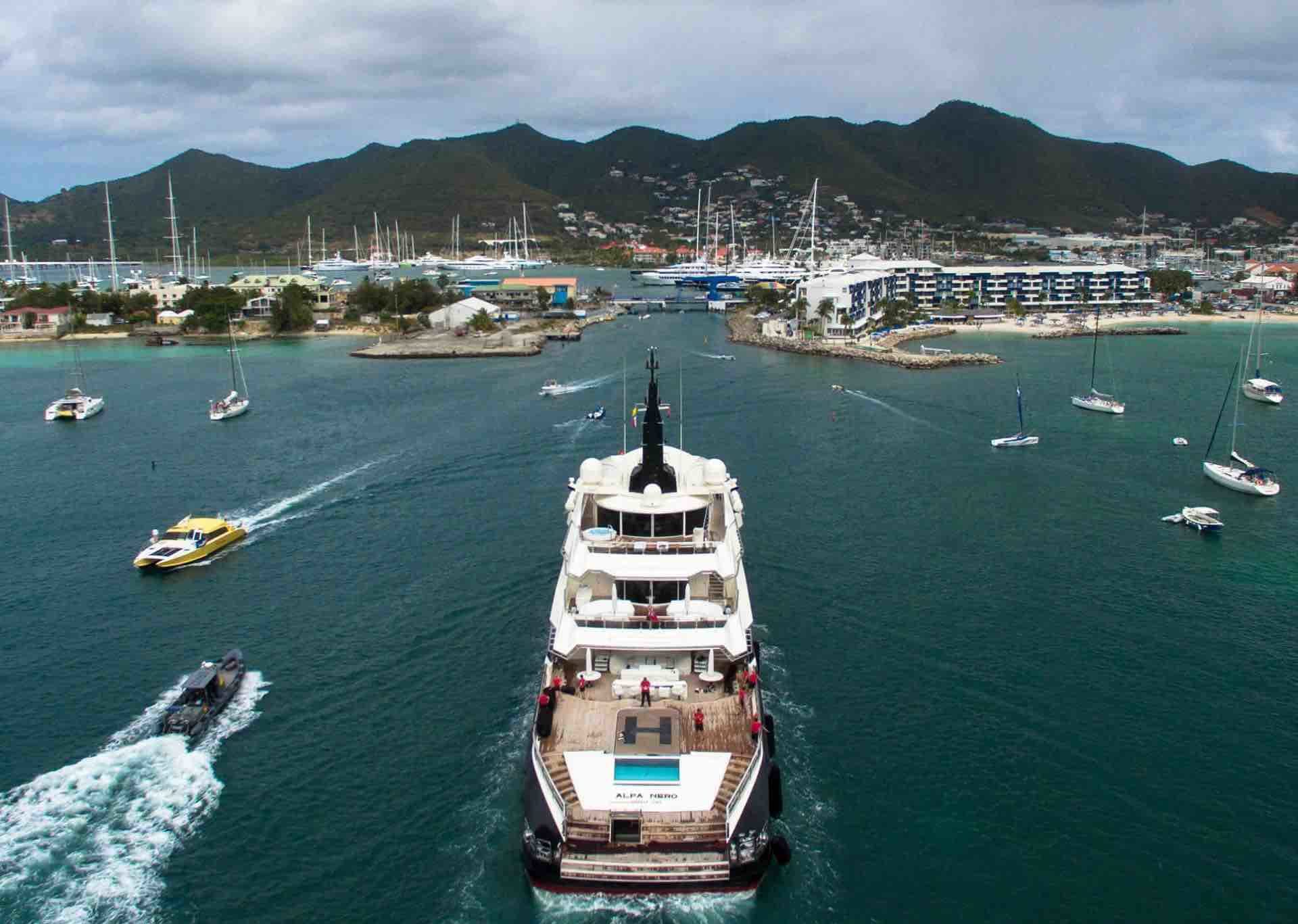
The United States of America is a major yachting hub and is synonymous with the marine industry. Like Europe, the USA has a vast marine infrastructure in place; shipyards, marinas and marine services are easy to find and are of a high quality. Florida is the most popular state for boats to be based due to the infrastructure in place with beautiful cays, beaches and waters as well as its proximity to the Bahamas and Caribbean. Fort Lauderdale, in particular, is a very popular place for yacht crew to base themselves and to find jobs. The West Coast of USA is also a popular yachting hub and base for yachts cruising the North Pacific.
Finding a Job in the Caribbean and USA:
The best time of the year to find a job is either side of the season, directly before or immediately after. Boats generally tend to crew up for the Caribbean season in October/November and they may then hire crew again before crossing to their next seasonal destination, the most popular of which is the Mediterranean which usually occurs in March/April. Most of the vessels will base themselves out of South Florida, making Fort Lauderdale and West Palm Beach the most common places for crew to find work. It is also important to note that many boats remain in Florida all year round and day/temporary work can be found at any stage during the year.
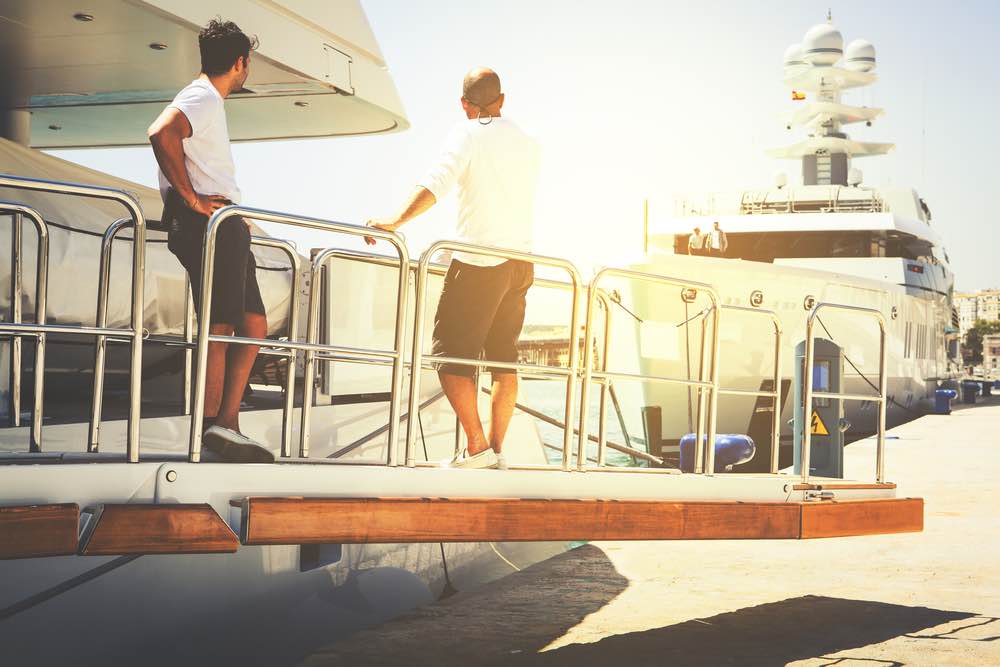
Cruising in the Caribbean and USA:
The Caribbean is an extremely popular cruising destination in the fall due to its temperate climate. The Caribbean is made up of numerous diverse and beautiful islands. The islands are home to vibrant and healthy marine and coral life, making it popular for scuba diving and snorkelling. Pristine waters, beautiful beaches, tropical forests, volcanic mountains, rustic beach bars and island vibes are just a few of the jewels in the Caribbean crown.
The Caribbean is at its busiest over the Christmas and New Year period. It is very common to book a two-week charter for this period and thousands of yachts will anchor off St. Bart's for New Years eve celebrations. The weather during this period is not great however, with intermittent rain, strong winds (Christmas winds) and rough seas.
Crew members tend to experience a little more time off in the Caribbean (depending on the owner’s preferences) as opposed to the Med. You are most likely to be based in St Maarten for your breaks between guest trips. The island has a lot to offer, but be careful not to fall by the wayside here like so many crew members do. Exploring the beaches, hiking, diving, snorkelling, water sports and beach bars, are just a few of the options available to you.
St Maarten has more marine infrastructure and services in place than other Caribbean islands and is therefore used as a base for most yachts to do their provisioning for trips and order equipment and parts.
As a crew member, the job varies slightly in the Caribbean and Bahamas compared to the Med. The days are shorter and guests tend to start their day earlier. It is common to spend many nights on anchor and cruising between islands. Many of the islands do not have destination marinas and guests prefer to be anchored in beautiful bays off white sand beaches. The environment in the Caribbean is more laid back and it tends to influence the guests. Water sports, beach runs, fishing, diving, hiking and beach bars are the popular activities here. There is often little to go ashore after dark (besides in St Barths) and guests remain on board in the evening. Due to the rougher seas and intermittent rain in the Caribbean, there tends to be more frequent rinsing down and cleaning for the exterior crew.
Cruising in US waters requires special permits and licenses and is more common for US-flagged vessels and boats that are based in the USA. South Florida is a very popular cruising area and popular options include anchoring off South Beach and on sandbars in Miami and cruising the Florida cays.
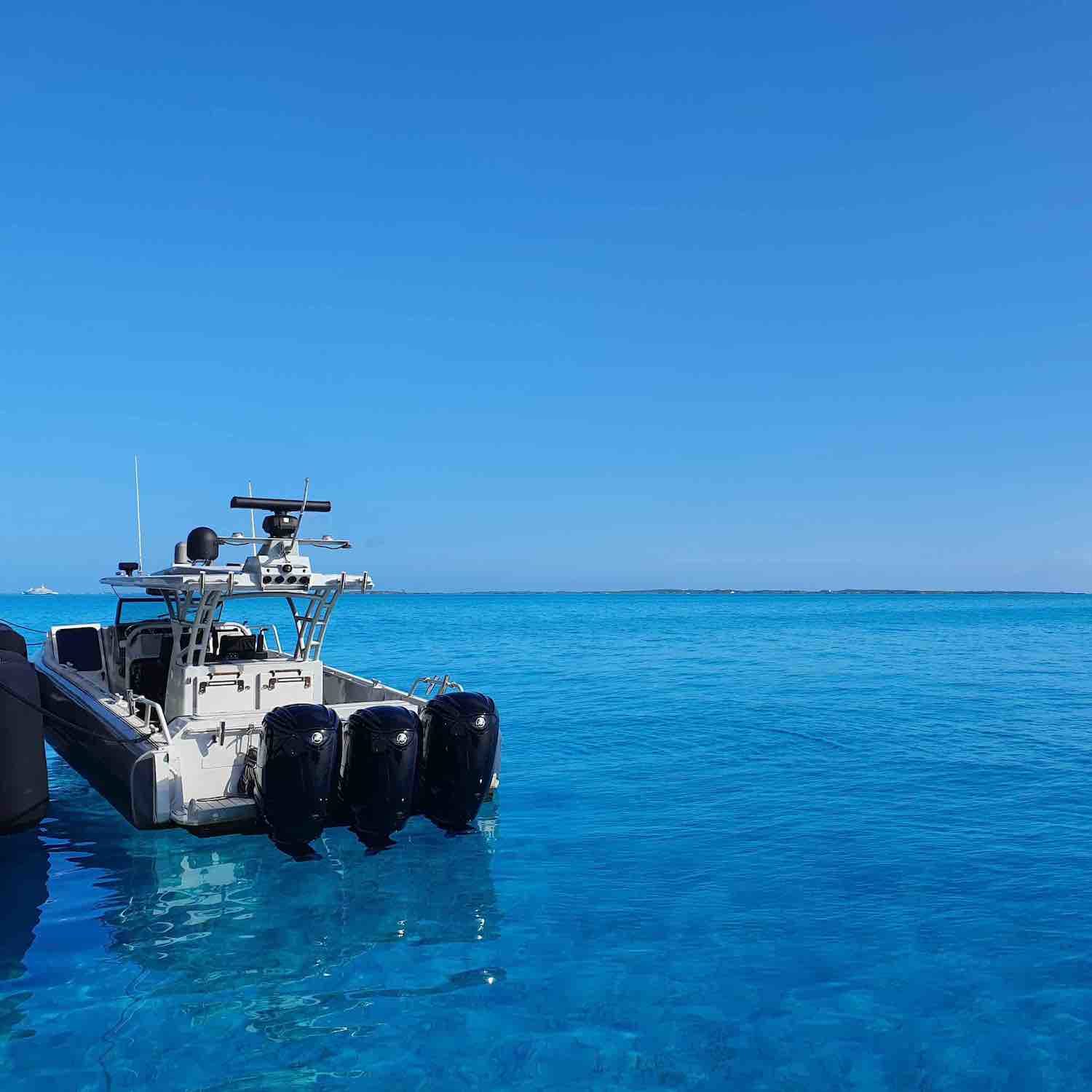
Off-Season in the United States:
The Caribbean and USA season begins to slow down in March. Many crews are hired on a seasonal basis and their employment contracts will come to an end. Others will prepare to take the vessel to its next seasonal destination and some may remain on board the yacht for a winter yard (maintenance) period. There is often crew turnover during this stage of the year and it is a very good time to find employment.
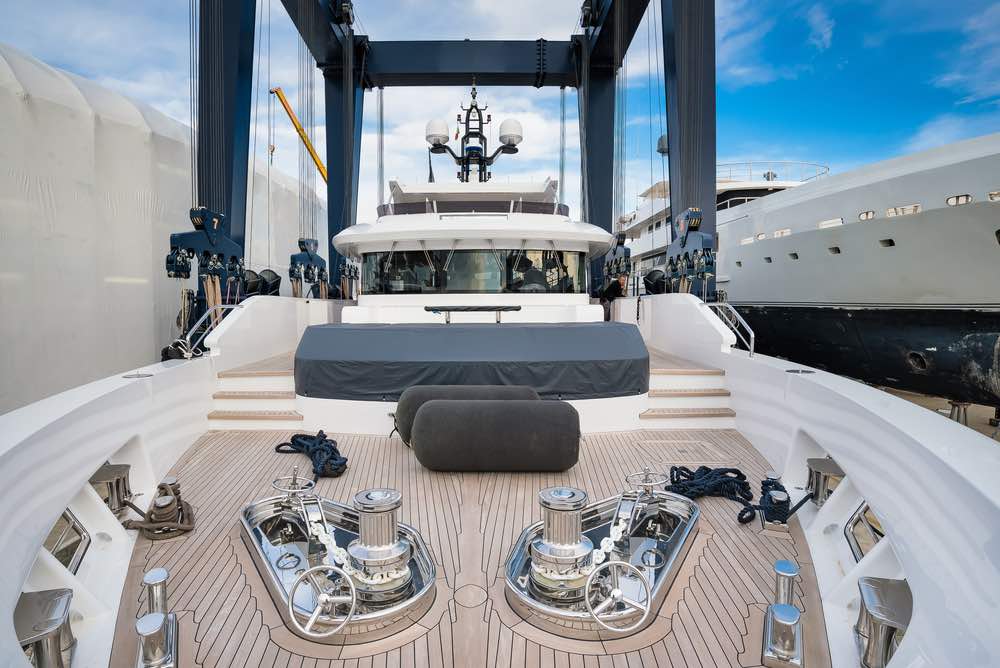
If you are employed full time on a yacht that remains in the US for the summer, your work will vary greatly from the winter months. There is a good chance the boat will be hauled out the water onto the dry dock at some stage as well, possibly for the whole period, depending on the scope of the work to be done. The yacht will be undergoing maintenance and alterations during this period. It is a very busy time for engineers who will focus on scheduled maintenance, attending to breakages and faults that may have occurred during the season and making improvements to onboard machinery and systems. The deck department will focus on maintenance, such as varnishing, polishing, painting, inventories and season orders. Whilst the interior will focus on inventories, stain treatments, ordering, polishing and deep cleaning.
The off-season is also a good time to train and rest crew. It is likely that hours will be 08h00 – 17h00 and that you will have weekends off, provided you are not on watch. The summer months in Florida can be a great experience for the crew (if you can handle the hot and humid weather) as there is a more relaxed atmosphere on board, ‘normal’ work hours are in place and there is generally more downtime. It will also provide deck and engine room crew members with invaluable yard experience which will stand them in good stead for their careers.
Visa and Legal Requirements:
Caribbean : To work on a boat cruising the Caribbean it is advisable to have both a Schengen and B1B2 visa as some of the Islands still fall under European and US dependency. It is also highly advisable to have a MAXI passport or many spare pages in your passport for a Caribbean season as there are immigration controls and entry and exit stamps on your passport for every Island.
US : All non-American crew must hold a B1B2 visa to work onboard a yacht entering US territory. If you are based in the US, you will need to leave and re-enter the US every 6 months (visa run).
It is essential to ensure that you consult with your captain/yacht agent or visa specialists to guarantee that you have the correct visas, are working legally and know your restrictions.
‘Superyachting’ is a seasonal industry and every owner has their preferences resulting in each yacht having a unique itinerary. The yachting industry is becoming more global and yachts have begun to explore new places, however, there are a few main yachting hubs and territories that are most popular, depending on the season.
Many yachts consider themselves dual season vessels and will cruise in different territories during different times of the year. Other yachts prefer a single season where they crew down and focus on maintenance in their off-season. Some vessels may embark on an around the world trip which may take anywhere up to 2 years.
Explore Other Superyachting Regions / View Remaining Steps on How to Get a Job on a Superyacht
Username or Email Address *
Remember me Lost your password?
Username or Email
Get New Password

Superyachts
Find a yacht job to work in caribbean.
- July 21, 2022
Find a Yacht job to work in Caribbean (September-March)
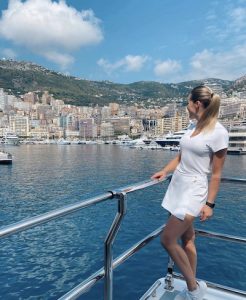
We will cover the most important aspects and 2 options to work as Yacht crew in 2022 in Caribbean. Either you start by finding a job after the summer season in the Mediterranean or you find your dream job right in Caribbean during the winter months (November-March). First let’s take a look at what you need to start.
1. Get Qualified with the right certificates for Yacht crew
The first thing you should be sure of is that you have your up-to-date Basic Safety Certificate , ENG1 Medical Certificate and other mandatory certificates for yacht crew such as ISPS Security Awareness and ISPS Personal Designated Security Duties. Since you will likely cross with the yacht over the Atlantic Ocean, you might also need some other certificates depending on the yacht size.
2. Have a great stand out CV to find a yacht job.
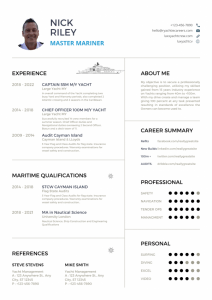
Once you have your certificates and qualifications. Make sure your CV looks better than the rest. Your CV is the most important part in securing a job and it needs to have a perfectly taken CV photo, a good CV design and the content has to be well written and perfectly structured by an Industry expert. This will make sure your CV gets read and selected each time for interviews by Captains and agents.
GET DECKHAND CV FOR YACHT JOBS IN CARIBBEAN
GET STEWARDESS CV FOR YACHT JOBS IN CARIBBEAN
3. Have the right visas (yacht crew)
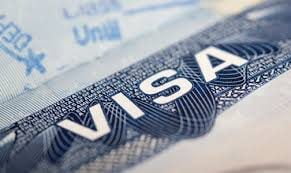
Most likely if you are aiming for a Caribbean season, unless you are American or Canadian you will need a B1/B2 visa. We can assist you with B1/B2 Visa applications , and you will need to submit the application to a US-embassy in Europe if you are looking for yacht that will do the crossing and to find a yacht job to work in the Caribbean.
4. Be in the right location to find a yacht job to work in Caribbean
To find a yacht job to work in Caribbean on a Yacht, you will need to be in the right location.
Find a Yacht Job in Europe (September-November)
If you are in Europe you should start looking for work on yachts that are crossing to Caribbean. A perfect time to start looking would be when the summer Season ends in the Med. Go to major yachting hubs in Europe starting September and you will have a great chance to find daywork for crew leaving their positions or going on leave. If you are lucky they will take you on as permanent crew and you will complete your first crossing over the Atlantic Ocean for the Caribbean season.
If you secure daywork this way the Yacht management will also be able to help you securing your B1/B2 Visa. You will also want to make sure that your Schengen validity enables you to stay in Europe during this time. The best locations to find Yacht that will cross and to find a yacht job to work in Caribbean would be:
- 4. Gibraltar
- 3. Antibes, South of France, Genoa
- 2. Barcelona, Tarragona, Valenica
- 1. Palma de Mallorca
Keep in mind that the yachts will start Crossing from early November, so if you start focusing your job search in early to mid September it will be perfect timing.
Find a Yacht job to work in Caribbean (November-March)

If you are starting to look for jobs, and want to find a yacht job to work in Caribbean in November-December than the better option would be in Caribbean or Florida, as the Yachts are already underway. The high season will start over the Christmas weeks and January and last until March-April when the yachts will start to cross back to Europe.
If you secure daywork this way the Yacht management will also be able to help you securing your B1/B2 Visa. You will also want to make sure that your Schengen validity enables you to stay in Europe during this time. The best locations to find a yacht job to work in Caribbean would be:
- 5. Fort Lauderdale & Florida
- 3. British Virgin Island (Great for Sailing Yachts)
- 1. St Maarten ( Best option for Motoryacht & Sailing Yachts)
For the best chance to find a yacht job to work in the Caribbean for the season 2022-2023 you can select Yachtiecareers all in one certification and job packages for Stewardesses and Deckhands. You can book all training for September and get accommodation included or simply start online with us to build your profile. The training packages that Yachtiecareers are world leading in the industry and will include the following. You will also be able to create a Yacht Crew Bank Account and get a solid yacht reference to use for your job search.
- Certification
- STCW Basic Safety
- Yacht Training
Start as Stewardess
Start as Deckhand
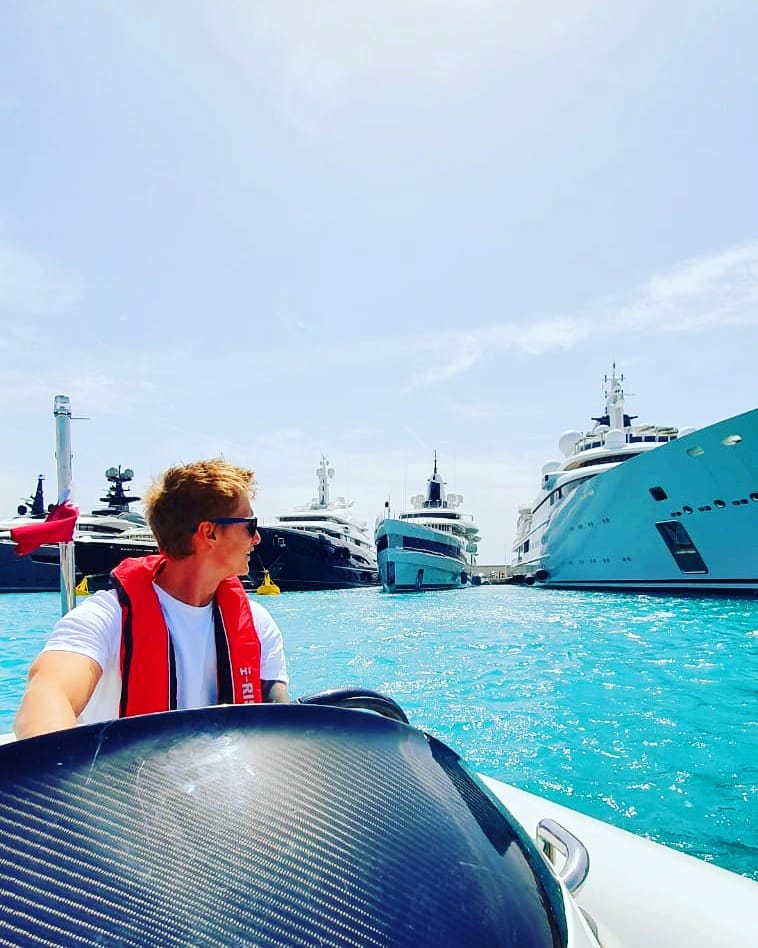
Yacht Deckhand Premium STCW
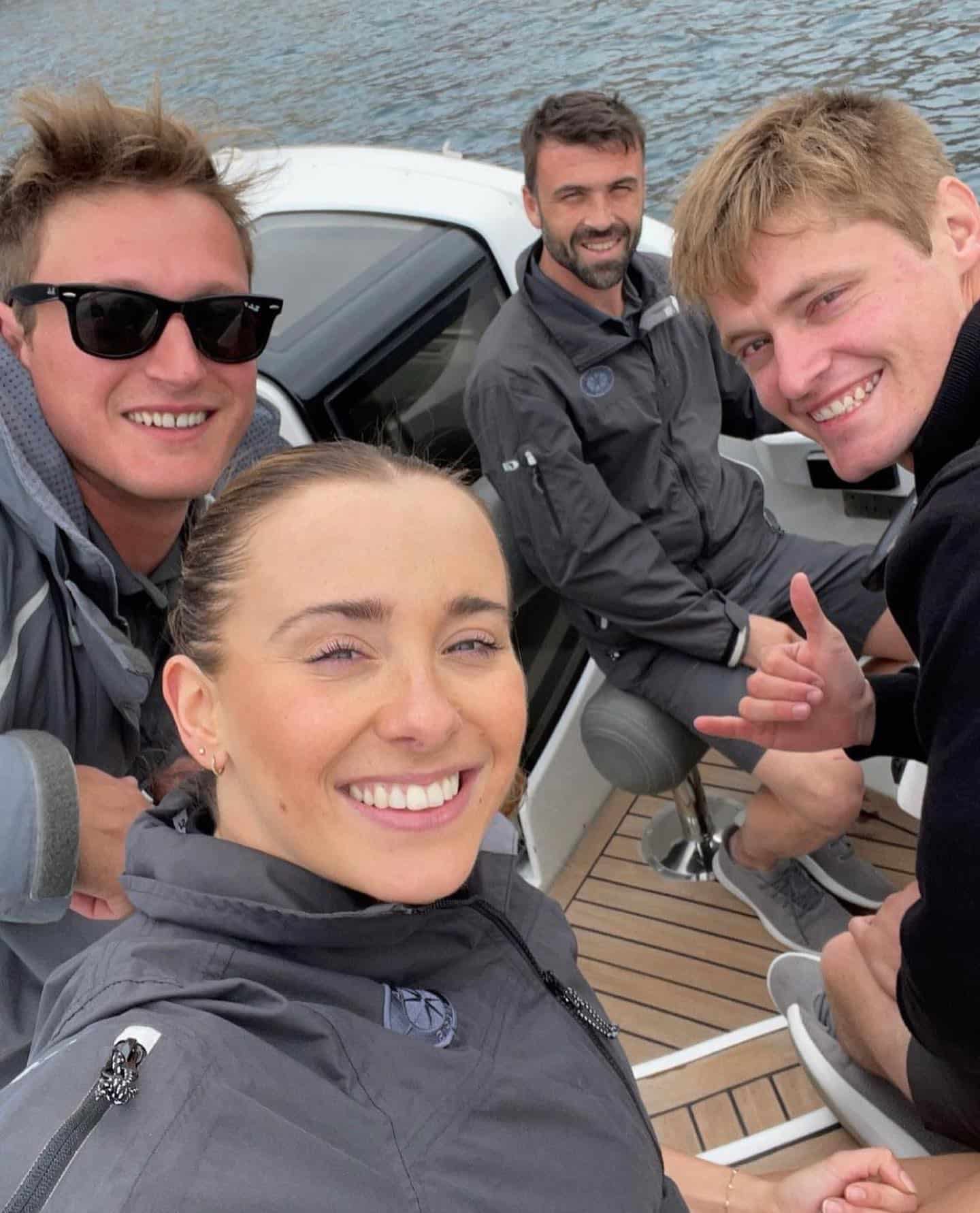
Yacht Stewardess Premium STCW
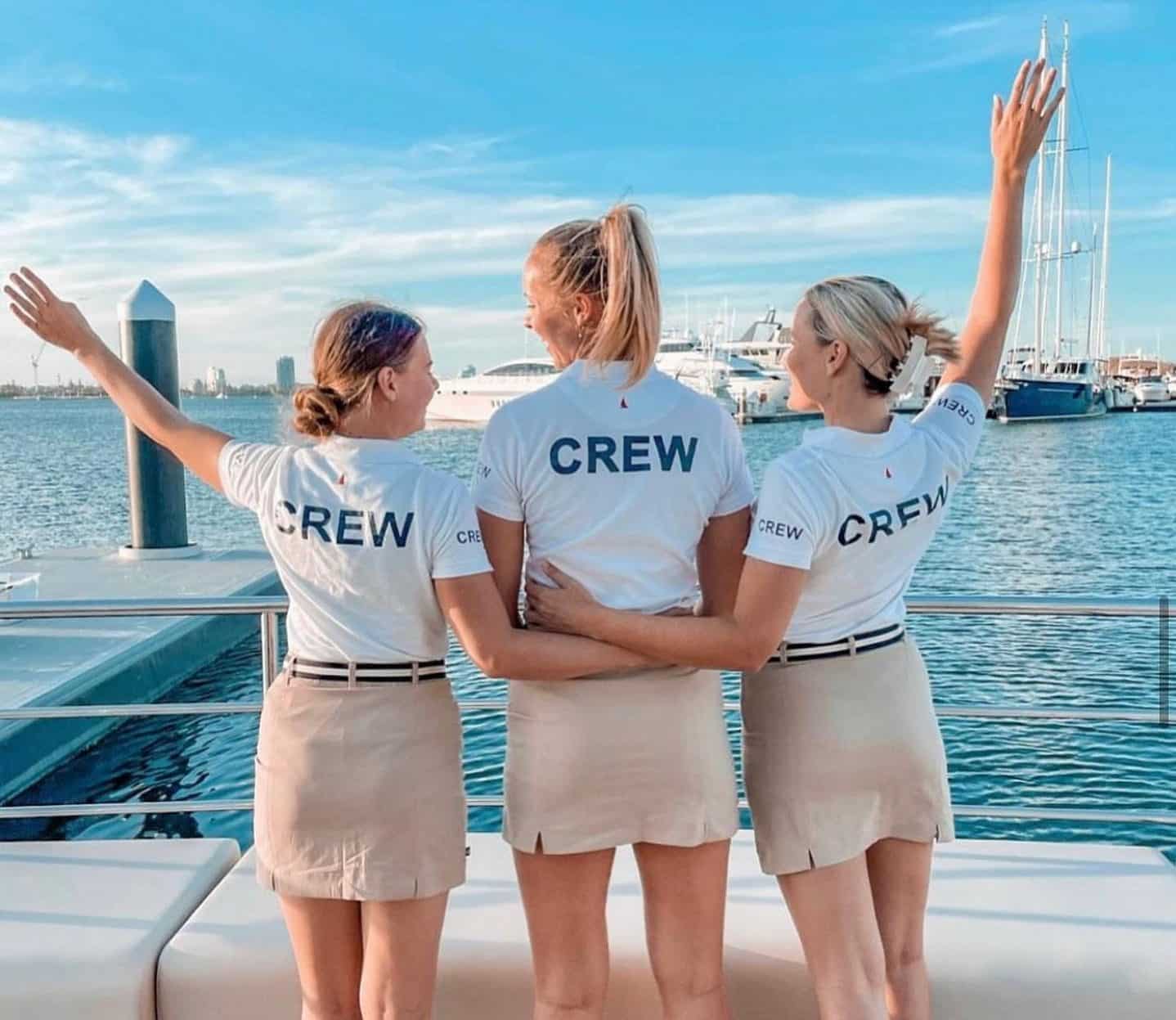
Yacht Stewardess Full STCW
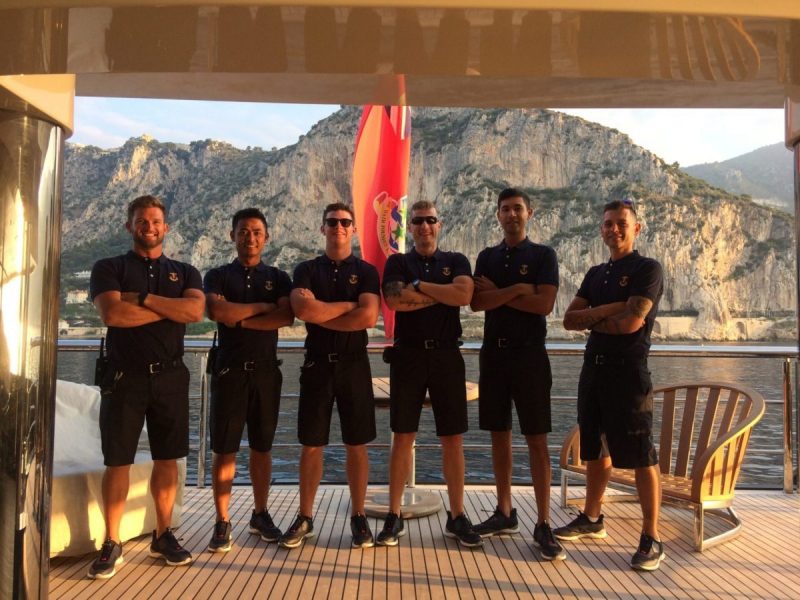
Superyacht Deckhand Full STCW

Top 10 best places to find a Yacht job in the Med 2024?

Yacht Crew Salary 2024
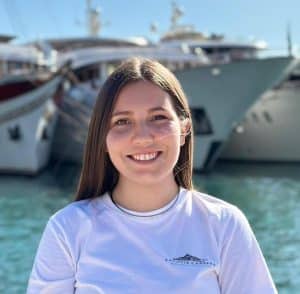
Yacht Stewardess Salary 2024

Yacht Deckhand Salary 2024
Best superyacht training in germany – yacht crew.
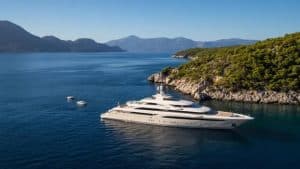
Top 5 Best things about working on Yachts
Superyacht crew training europe.
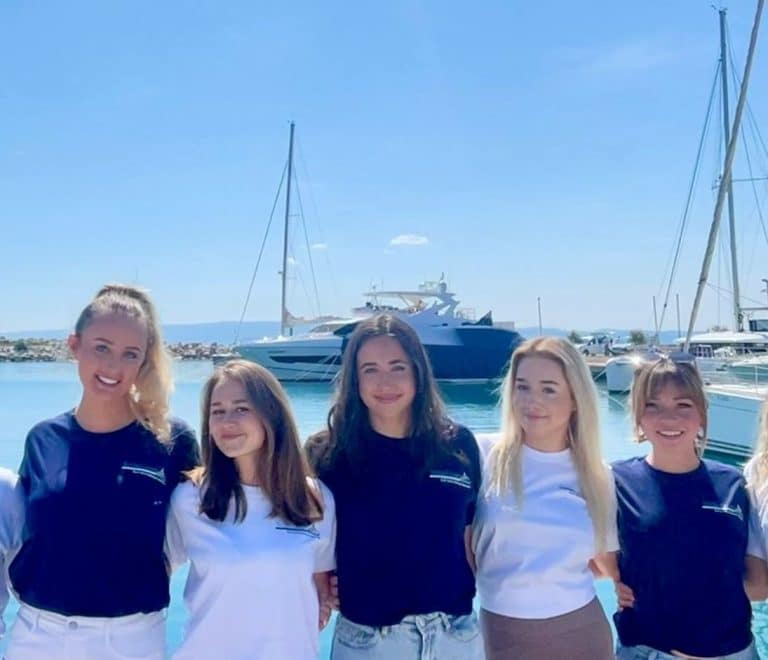
3 next bookings get 50€ free. Use free code “yachtie50” at checkout.
2 next bookings get 50€ free. Use free code “yachtie50” at checkout
Get free yacht cv and yacht job offers
How to Quit Your Job, Move on a Sailboat, and Work Remotely From Paradise

Roxy and Phil are two newlyweds in their early 30’s who decided to leave behind their life in Boulder, Colorado, for a life at sea aboard their 47-foot sailboat, Sonder.
Below, the pair details just how they prepped for their maritime remote-work lifestyle, what it takes to live on a sailboat, and a seven-day diary of their voyage from the british virgin islands to sint maarten and the nearly 400-mile passage to grenada. , the journey so far: .
We bought Sonder in the US Virgin Islands in November 2018, sold everything in Colorado and moved aboard in February of 2019. We sailed from the USVI up to Massachusetts where we got married in July 2019, after a sailing “honeymoon” in Maine we headed south again. We departed from NYC for the Caribbean in November 2019 and have been working our way through the island chain since then. We’ll return back to New England in May, with plans to cross the Atlantic to Ireland in August, fingers crossed!
Since we moved aboard in Feb 2019 we have sailed 5,120 miles at an average speed of about 7mph (more if we count all the small hops back and forth we make while exploring).

Work & Expenses:
In Boulder, Roxy worked as a software quality assurance analyst while Phil was a musician and music teacher. We’ve since taken an old side project—a pop-up greeting card company called PopLife—and turned it into our main gig to keep afloat (financially!). We also employ an awesome full-time virtual assistant, John, who helps us with photo editing, data entry, copywriting, email campaigns, graphics, and more.
Our expenses are roughly $3,500/month, including our $1,350 boat payment. We took out a loan, similar to a mini-mortgage, to buy our sailboat. It’s the first piece of “property” like this we’ve ever owned.
Weekly, we spend ~$500 for groceries, eating out, boat maintenance, laundry, fuel, customs/immigration fees, etc. This doesn’t include our annual costs like health insurance and boat insurance premiums. However, we know cruisers who get by on as little as $1000/month!
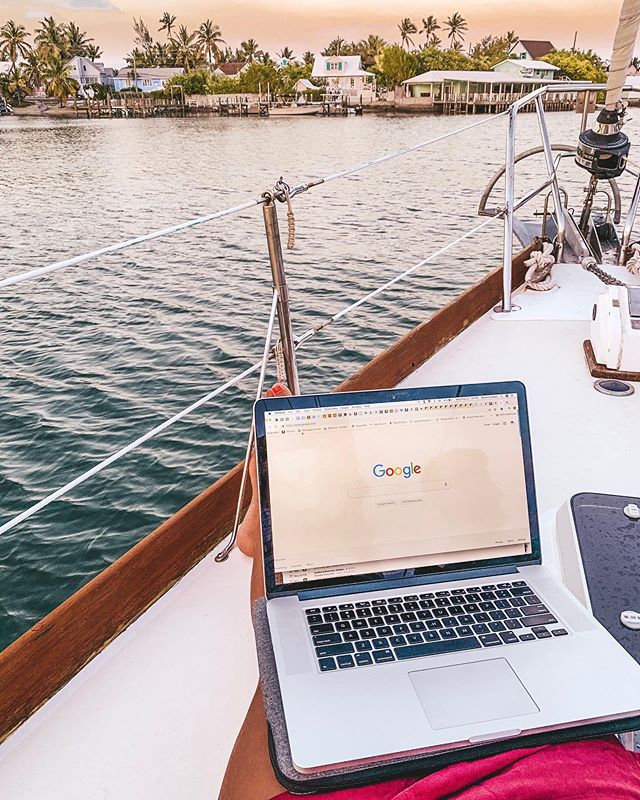
How We Prepared to Work Remotely and Sail the World:
We had already made the leap to working for ourselves about a year prior, but while on a short 2-week sailing trip in the Bahamas on our first boat (a much smaller boat named Impetuous ), we saw a big community of full-time cruisers living on their boats while traveling and the spark was lit for us. We started scheming a month later—outsourcing the location-based parts of our jobs, looking for the “right” boat online. We also stopped buying stuff for our apartment in Boulder.
Only a month or so of dreaming went by before we started taking small steps to see if it could be done. Within six months we were starting to seriously look at boats in-person and researching financing, etc. 14 months after the original idea sparked, we were flying down to the USVI from Colorado with five suitcases of stuff to our name!
We lived on Sonder for five weeks with non-stop work to get her ready to safely sail us back to the US. We were nervous wrecks. We also discovered a lot more problems than were obvious when we first purchased the boat, but this is typical when buying an older boat! Fun fact: Sonder was originally built in Hong Kong in 1986.

Diary of a Remote Worker: 7 Days on Sonder
9:45 a.m. – I wake up to a loud thump. It sounded like we got hit by something hard, but really it was just a larger-than-usual wave hitting the side of our sailboat. Phil has been up for a couple hours already, but I’m just rubbing the sleep from my eyes. I was up till 2 a.m. working yet again. The online business we run together is 100% remote so in theory I should be in control of my own hours, but most of the people I work with directly are in Asian time zones. I get up and grab a mango yogurt and iced coffee from the boat’s fridge for a quick breakfast.
11:10 a.m. – We’re reading the news on our phones, a typical slow start to our day. Phil is on to his 2nd or 3rd cup of meticulously hand ground aeropress coffee. We have ample battery power and space on our boat to keep an electric coffee grinder aboard… but that just wouldn’t be “Phil” enough, he’s got to work for it. We sit and discuss the day and decide we should go ashore and explore today because the weather will get rough later in the week. We jump in our inflatable dinghy and zip off towards shore. This little dinghy has taken the place and role that our cars had when we lived on land. It gives us the freedom to get around, explore, do errands, etc.
“‘Sonder’ means the realization that total strangers have a life just as complex as you do.”
12:00 p.m. – We dock the dinghy, and set off in the general direction of town. We’ve never been here before, and even though we have a guidebook somewhere, we’ll probably just wing it. Phil has packed our laptops and chargers in his backpack and if we find a good spot (shady tables, free wifi, and people that won’t mind us loitering for several hours) we’ll stop and work for a while. We do find a quiet cafe near the water and settle in to get some work done during the heat of the day.
3:15 p.m. – Well, the cafe did have Wi-Fi, but apparently it hasn’t worked in a week and they’re still waiting on the island IT guy to come fix it. Since we already bought $25 worth of coffee drinks and so-so looking pastries, we just use our phone’s hotspot to get connected. We use an international phone plan that has a 22gb high-speed data limit per month, so we’re very careful and task oriented when connected to it. I reply to some customer support inquiries while Phil sets up an ad campaign for one of our company’s newly released designs. I came up with the idea for this particular design during a night watch shift on our 6-day sailing passage from NYC to Bermuda. I guess being self-employed means our “work brain” never really turns off.
6:50 p.m – We walk around for a bit and then find our way up to the crumbling old fort atop the hill above town. There are some rusty old cannons lying about and a few signs posted on the stone walls with historical info. We notice the sun is about to set and hurry back down to get to our dinghy. We forgot to bring a flashlight (again), so I use my iPhone to light our way and make sure we’re visible to other boats nearby. When we’re back, Phil cooks dinner while I settle in to reply to some colleagues in Asia by WhatsApp and email. Sounds like they’ve run into some supply issues. It’s going to be another long night.

10:00 a.m. – Phil’s making bacon and eggs for breakfast. Using the oven always heats up the boat quickly and it’s already 85 degrees outside, so we go and eat out on the shady side of Sonder ’s cockpit. We start to talk about work, but I get annoyed when our meals feel too “meeting-like,” so we settle on talking about what to do in the afternoon. Phil has some overdue boat projects he wants to tackle and I want to swim and clean the bottom of the boat. Yes, mostly just an excuse to swim.
11:45 a.m. – While I’m cleaning growth from the bottom of the boat with a scrub pad, I spot a sea turtle munching on grass at the sandy bottom about 25 feet below our boat. I think about calling out to Phil to come see, but we’ve already seen about 15 turtles this week, so I leave him to his project. I dive down to get a closer look, but the turtle pays me no mind. I hover above him for a bit before shooting back up for air. I can only hold my breath for 40 seconds or so, something I’m trying to work on.
“I spot a sea turtle munching on grass at the sandy bottom about 25 feet below our boat.”
2:10 p.m. – We head into town on the dinghy to find a grocery store. Caribbean grocery stores are not for the faint of heart. They simultaneously make Whole Foods look dirt-cheap and Trader Joe’s feel like a paradise. In the store I find they just got their produce in from the weekly “food” boat from the mainland… there are avocados and mixed greens! Phil finds imported Cuban white rum for $9 a bottle. This is turning out to be a damn good day. We pack up our backpacks and hurry for the dinghy. The tropical sun and heat is brutal on perishable food, we have to get everything back to our refrigerator ASAP.
4:50 p.m. – I’ve been dreaming about a hot shower all day. I go to turn the hot water heater on, but our lithium boat batteries are too low. It must have been too cloudy the last few days, and our solar panels haven’t quite been keeping up. Phil goes to turn on our diesel generator but discovers a problem. It’s always something with a boat. There are many more systems than a typical house, from making fresh water out of salt water, to making our own electricity, to storing our waste. It’s a lot to keep up with. Phil does fix the problem eventually and I take a glorious shower, careful not to use more than about 2-4 gallons of our precious water supply.
7:00 p.m. – Dinner is jerk chicken and a big leafy salad from the day’s grocery haul. We plan to finish watching the last couple episodes of the Witcher on Netflix over dinner (which we expertly downloaded with my parents’ Wi-Fi while home for Christmas), but we get to talking about business again and suddenly it’s too late.
11:15 p.m. – Phil is in bed reading a book while I’m still staring at my laptop out in the salon (the main living area of the boat). I’m having a burst of late night inspiration and have been mocking up some brand new designs, while also fielding emails from our production managers about the crisis du jour. We’re in for some rough weather tonight and I’m dreading the poor sleep we’re bound to get.

3:27 a.m. – I’m startled awake for about the 10th time by a sudden gust of wind hitting the boat and tossing us around like a toy. It’s dark, but the moon is shining directly down through the hatch above our bed, casting a perfect square of light on our bed. Our bed is actually a big triangle because it’s up in the very front of the boat (the “bow” in boat-speak).
I listen to the grinding sound of our anchor chain as it tenses up, straining against the wind and waves. It’s moments like this that we pat ourselves on the back for having invested in the bigger anchor. 105lbs of pure galvanized steel dug into the sandy bottom 27 feet below us. “We’re okay, we’re okay, we’re okay,” I repeat silently in my head. Phil snores loudly. I miss my square bed back in Boulder.
“I’m startled awake for about the 10th time by a sudden gust of wind hitting the boat and tossing us around like a toy.”
10:25 a.m. – I wake up to the hot sun shining on my face. The wind finally calmed around sunrise and welcome sleep had washed over me. Phil smiles amusedly as I get up, “Sleeping in again, are we?” I grimace. He’s reading the New York Times on the iPad and catching up on some marketing tasks. We get some more work done and talk about our next sail. We’ve already spent about four nights in this anchorage and a couple days exploring town. We could easily spend more time here, but there are so many places to go and things to see… and hurricane season is approaching.
2:00 p.m. – After a quick clean up and stowing session, the boat is ready to move. I stand on the bow, directing Phil with hand signals which way to turn the boat as we trace our chain and hoist up the anchor. We’re on our way. The next island we’re headed to, Sint Maarten, is only about seven miles away and we should be there in an hour or so. We hoist our sails and kill the engine, enjoying the quiet sounds of Sonder slicing through the water. We are physically moving our home with only the power of the wind to a new place we’ve never even been. The novelty of it all hasn’t ceased to amaze me.
4:30 p.m. – We’ve arrived. Phil is applying sunscreen… liberally. It’s all white and not rubbed in inside his ears, but I’ve given up pointing it out. I just smile and thumb casually through the guidebook at all the places this new island has to offer, knowing we will probably only scratch the surface of it. It’s hard to juggle exploring a new place while also keeping our business running, doing normal chores, and boat maintenance. Add a little personal time and staying in touch with friends and family back home and the days practically fly by with hardly a moment to ever be “bored.” I think I miss being bored—just a little.
8:00 p.m. – We have an easy dinner of frozen gnocchi and pesto sauce. Phil has disappeared to set up his keyboards and mobile music studio in the spare bedroom on Sonder . He was a working musician back in Boulder, and moving onto a sailboat has been a big transition for him. He was used to practicing on his piano for several hours a day, now he’s lucky if he gets to play at all some weeks. I sit in the salon catching up on text messages with friends and family, listening to Phil play as rain starts to fall on the fiberglass roof.

8:45 a.m. Today is laundry and Wi-Fi day, and both are needed badly. We haven’t done laundry since three islands back (3-4 weeks) and, yes, you can tell. We have a quick breakfast and head into town, dinghy piled high with fat laundry sacks. We find a laundromat near the docks, but the machines cost $10 per wash and $10 per dry cycle. We exchange our $20 bills for a plastic solo cup full to the brim with quarters and get started. We find a coffee shop nearby and take turns dashing back and forth to switch around laundry loads while taking advantage of its mediocre Wi-Fi. Just another day in paradise!
12:00 p.m. – We’re done with laundry and head back towards Sonder . It’s hot and we’re adequately sweaty by now. The best way to get cool is to just jump in the water, so we do. We find the water clarity around the boat is actually amazing right now and grab our dive masks and fins. We keep going and snorkel and freedive out around the rocks at the edge of the bay. We see turtles, stingrays, countless fish, and some colorful coral. These are the impromptu moments we live this lifestyle for.
“These are the impromptu moments we live this lifestyle for.”
I glide weightlessly underwater, following an electric blue fish through an outcropping of rocks. Two years ago, at this very moment on a weekday afternoon, I would probably be sitting at my desk stressed about the string of back-to-back meetings ahead of me. What a difference a couple of years make.
6:10 p.m. – We watch the sun slowly set from the deck of Sonder, Cuban rum cocktails in hand courtesy of bartender Phil. This is how we’d like to spend every day at sunset, but in reality it’s a treat when we actually make a proper sundowner happen. It’s easy to take for granted these moments of beauty, so we pause to toast our good fortune and hard work. “Well, this doesn’t suck.” I remark casually. We’ve been saying this a lot since moving on Sonder .
10:00 p.m. – It’s a Saturday night, Sunday in Asia, so all is quiet on the business front. Finally. We take the opportunity to settle in with a movie on our little TV in the salon, tonight we’re watching Pirates of the Caribbean . Yes, a little trite, we know. Normal moments like this, curled up on the couch, feel like we could be back home in Boulder, living solidly on land. A sudden tropical rainstorm hits and then we’re running around frantically closing all our hatches and windows, breaking the illusion in an instant.

9:15 a.m. – I get out of bed and see I have an email from my brother—he’s just been laid off from his job. He was also working remotely full-time while traveling, but for a medium-sized SaaS (software as a service) company in the US. I feel the pit of my stomach drop. The feeling is mostly empathy for what my brother must be feeling right now. We always knew choosing an alternative lifestyle had some inherent risk, but moments like this hit on just how fragile it can be.
12:40 p.m. – We inflate our stand up paddleboards (SUP) and paddle in to the beach. There’s a trendy beach club here with a coffee shop and fancy rum bar sprawled along it. We stow our SUPs under some palm trees and head for the coffee shop. We buy a couple iced lattes and casually ask for the Wi-Fi password (eternally trying to make it seem like it’s not the only reason we’re patronizing a place). I sit down in the shade and immediately FaceTime my brother to see how he’s doing.
2:00 p.m. – We’re on our second round of overpriced coffee now. Phil and I find ourselves talking about where we’re “at” right now. We talk about fall-back plans. What if our sales plummet, or our business fails tomorrow—what would we do? We do this sometimes, get stressed out and worked up wondering if we’re making the right choices.
“We talk about fall-back plans. What if our sales plummet, or our business fails tomorrow—what would we do?
3:10 p.m. – On our way back to the SUPs we run into an older retired couple who also live on their boat. We get to talking and just before we part ways they tell us, “We just so wish we’d started doing this at your age!” They say goodbye and walk away, having no idea the impact that statement left on us. It can be easy to forget sometimes just how fortunate we are to be here. Maybe we’re on the “right” path, maybe not. One thing’s for sure: We are exactly where we want to be right now, regardless of the risk.
7:30 p.m. – Over dinner we slowly download the latest weather forecast from our satellite phone. To our surprise, there’s a change of wind direction coming in a couple days. This is probably our best opportunity to make it further south. Our next island destination, Grenada, is 390 miles away. At an average sailing speed of 6.5mph, it should take us a little less than three full days to get there. This means sailing nonstop through the night, taking alternate shifts to keep watch and navigate. We decide to do it and start making plans. Time to get to bed—tomorrow is going to be busy.

7:30 a.m. – We wake to an alarm and get busy packing up the cabin. Anything that can possibly fall, break, or leak has to be put away or secured. While sailing, the boat can rock, buck, and lean heavily to either side… it’s kind of like preparing for an earthquake.
Early on in living on Sonder we made the mistake of underestimating the importance of this step. After a few especially bad experiences (such as taking a wave through an unlatched window and completely soaking our bed in saltwater, or a metal rack flying from the oven and taking out a big chunk of the interior woodwork) we now take this task very seriously.
12:00 p.m. – After stowing as much as possible, we sit down to figure out what we need to do in order to be offline for the next 3 days while we are on passage. The word “offline” gives me a bit of a skin-crawling feeling. Not because we’ll be away from Instagram, Netflix, and the daily news cycle—that’s often a bit of a relief, actually. I’m just dreading the inevitable time-sensitive business tasks we’re going to have to figure out.
“It’s kind of like preparing for an earthquake.”
3:45 p.m. – I set up an out-of-office message on all our email accounts and laugh to myself—if only people knew just how out-of-office we really are. While at sea we’ll have a satellite phone that will allow us to slowly download tiny weather forecast files, which are only about 10kb on average. We can also send and receive short text messages, but it can be somewhat unreliable. Generally, my mom monitors our email accounts while we’re on passage and then texts me if she sees anything urgent come through. If she does have to respond to an email on our behalf, she’ll tell people she’s our company’s “office manager.” Moms are just the best, aren’t they?
7:30 p.m. – We’re tired and decide to eat out for dinner so we can avoid having to deal with dirty dishes and more cleaning tonight. We find a decent looking place on TripAdvisor and head over in the dinghy. I remembered the flashlight this time and use it to guide us through the dark maze of boats, mooring balls, and bouys in the harbor. Dinner is at a Thai place and we talk over our curries about what to expect from the passage and anything we have left to do. We need to leave at first light tomorrow, so we head back to the boat and go straight to bed. This will be our last full night of sleep for a few days.

6:00 a.m. – Another alarm. Time to go. We check our emails one final time before sliding out of bed to face the day. We raise the anchor and start slowly motoring out of the harbor. When we’re a little way out we point into the wind and hoist our sails. As we point south, towards our destination, the sails fill with wind and become taut and smooth. Sonder is eager to go. The auto-pilot is turned on and starts steering the boat to our compass course (the auto-pilot is honestly our MVP). I make some toast, but the rocking of the boat keeps me from making much more for breakfast.
10:30 a.m. – The winds are stronger than predicted so far. It’s a wet ride as we fly over and through the waves. Constant sea spray makes our lips taste salty. I just realised I forgot to download any audio books on Audible. Guess I’ll be hunting through Phil’s books on board for something to read. He teases me about preferring audio books, but I like hearing stories in a voice other than my own. My favorite narrator, Imogen Church, could read me the dictionary for all I care. There’s not much to do for now but trim the sails and hang on.
2:10 p.m. – The winds have calmed considerably now, it feels more like sailing and less like riding a mechanical bull. We make an easy lunch of sandwiches and sit in the cockpit. Land is still in sight in the distance behind us, but barely. I repeatedly resist the urge to check my phone, we haven’t had any service since about 8 a.m. anyway. The first and last day on passage always seem the longest—land withdrawal and anticipation I think. Everything in the middle flies by.
“Falling overboard can mean being left behind—for good .”
5:50 p.m. – The sun is starting to set. We put on our life vest PFDs (personal floatation devices) and attach our tether to it. Tethers are like dog leashes, but for humans, and keep you attached to the boat for safety. Falling overboard can mean being left behind—for good if you’re not found quickly. It’s my #1 fear out here, but I try not to dwell on it. The sun just dipped below the horizon to the west, in 12 hours it’ll appear again on the opposite horizon—one thing, at least, we can always count on out here.
8:15 p.m. – We decide to make pasta for dinner. Phil leans over the side and scoops seawater into a pot to boil it in, no need to add salt this way. We both sit in the dark cockpit while we eat. I usually hate eating in total darkness, but looking up at the incredible stars splayed above us more than makes up for it. We also see sparkles of bioluminescence in the water as Sonder slices through the waves and disrupts whatever must live there. I turn on the satellite phone and check for texts, but none come through. Guess things are going OK out there on land.
11:55 p.m. – We started our night shifts at 10 p.m. Probably should have started earlier, but neither of us felt like sleeping yet. I’m on watch now—night shifts usually last around 3-4 hours. I planned to sit and read, but can’t get motivated to go below to search for a book. I sit quietly in the dark, and my mind wanders to the future. It might sound far-fetched now, but in a few years we’ll likely have access to high-speed satellite Wi-Fi out here in the ocean (courtesy of Elon Musk of course— Google it ). We could be out here doing our normal jobs, hundreds of miles from land. Our lifestyle probably won’t be so niche anymore, in this “connected-everywhere” future I’m imagining. With more affordable, reliable connectivity everywhere on the planet, more office-based workers could choose to live nomadic lives like ours. No commute to consider when buying a home, no reason to live somewhere you don’t love. I don’t know, maybe this is all just an exhaustion-fueled futuristic dream—but, we’re living it now.
We were heaved to in the middle of the Atlantic, the sails of the 40-foot sloop set in such a way that the boat drifted slowly through the water, riding gently upon the heaving ocean swell that rose and fell with cosmic regularity. The puffy trade wind clouds marched across the sky in the perpetual easterly breeze. The sea itself was an indescribable shade of deep blue that exists only in deep waters far offshore, a color for which we have no word.
I was on the lee deck, wedged between the coach roof and the lifelines, bracing myself against the swell, gripping an old plastic sextant and practicing my sun sights. Engaging in a method of navigation used for centuries is to truly become one with the universe, a sensation long lost among the lives of those on shore. After plotting my line of position that I obtained by calculating the angle of the sun on the horizon, I figured we were around 26 degrees North latitude, 65 degrees West longitude, just about halfway between Charleston, SC, and our landfall in the Virgin Islands. We were seven days off the East Coast, another seven or so more to sail. We had finally adjusted to life at sea, the simple life of living in tune with the universe.
Traveling and Working as a Volunteer Crew Member
Amazingly, I was along for this trip of a lifetime as a volunteer crew member. The owner had paid my way, provided the food onboard, and would pay for a return ticket from Tortola upon our successful delivery of his yacht to the islands, where he planned to use it over the winter months. The 40-foot, French-built sloop boat was incredibly comfortable for the four of us onboard—my father, another 20-something young woman, and the volunteer French captain. We had a nicely-sized galley with working refrigeration, ample sleeping space, and plenty of food (and coffee) for two weeks at sea.
Traveling the world by sailboat is a dream shared by many but experienced by few—more often than not, thrown to the wind and destroyed by careers, commitments, and shore side attachments. But life is gratifying for those who commit to the sea—simple in its routines yet profoundly natural.
As a lifelong sailor and professional captain, I have traveled the world by every means imaginable, yet I have found that the best way to travel is under sail. For those looking for a unique way to see the world and experience life, becoming volunteer crew doing yacht deliveries is an exciting, unique, and reasonably affordable way to get around.
How to Find the Right Boat to Work On
Yacht deliveries can range from taking a neglected 32-footer built in the 1960s from Bermuda to Nova Scotia in the dead of winter (which I have unfortunately experienced) to sailing a sparkling new 70-footer in the warm Trade Winds of the Caribbean, island hopping your way around some of the most beautiful sailing grounds in the world. So it pays to do some research before signing up for any trip that is out there.
Walk to Docks to Find a Boat: Ironically, the best way to get a job as a delivery crew member is to arrive in a new port on a sailboat and walk the docks looking for work. Unfortunately, the age-old catch-22 situation rears its ugly head—you need experience to be crew, yet need to crew to gain experience. Suppose you are lucky enough to live in a sailing city—such as Annapolis, MD, Ft Lauderdale, FL, or any coastal town in the Caribbean or Mediterranean. In that case, walking the docks and talking to people is your best bet for finding a boat. The girl on my last trip found our boat precisely that way. She was a local from Charleston, SC, simply looking for sailing experience and a ride to the islands where she wanted to pursue her kite surfing passion. Since we were only three then, we welcomed her extra help, even though she had never been on a sailboat before.
Use the Internet: If you are like me, come from a rural inland town, or are otherwise far removed from the ocean, the Internet is helpful and provides another way to find a boat. Several websites are dedicated to finding crew, particularly for deliveries, and they often allow you free access. Professional delivery skippers often post ads looking for volunteer crew people, and it is usually just a matter of sending your resume, a photo, and a short email about why you want to crew that will get you on a boat. Frequently these skippers are willing to take inexperienced crew as a third or fourth member and are usually very amenable to teaching.
Take Part in “Cruising Rallies”: Increasing numbers of retired businessmen and women are buying boats with big dreams of crossing big oceans without the knowledge, skill, or confidence to do so alone. Several career sailors have recognized this problem, and "Cruising Rallies" are becoming increasingly popular in all the world's oceans. They are organized by experienced sailors with thousands of ocean miles, and together with up to 50 other boats, inexperienced sailors (primarily retirees) can cross the ocean of their dreams in the relative safety of the group with experienced leadership. Once in port, these newfound ocean sailors have the added benefit of organized parties and events to share the joys of their first ocean passage with others.
You can be a part of the increasing popularity of cruising rallies, and many of the organizations behind the logistics maintain websites and crew registers. The Carib 1500, for example, is perhaps the most popular cruising rally on this side of the Atlantic, with nearly 50 boats, all over 40 feet (and many much bigger), sailing non-stop from Norfolk, VA, to Tortola in the British Virgin Islands. The rally occurs after hurricane season and before the onset of winter, in early November. They also organize a return rally in May from Tortola to Bermuda. From there, the boats split up and headed east to Europe or back to the U.S.
What About Experience?
Many captains, including myself, require at least one if not two, professional or very seasoned sailors to join them on a major ocean crossing. However, like me, many are more than willing to take a few extra inexperienced sailors or intrepid adventurers along for the ride and are often willing to instruct them along the way.
The key to finding a boat to sail on is to present yourself as a trustworthy person eager to join the trip. Ulterior motives are often very apparent, and no captain is willing to take along someone just looking for a free ride.
Working Aboard the Sailing Boat
The work aboard an ocean sailing boat is difficult, tiring, and unending. A passage of even ten days sounds short, yet when you're on a watch schedule of four hours on and eight hours off, one day seems like two, and you must adapt to an utterly different way of life than the one you are accustomed to ashore. Everyone shares in all the duties involved in running the boat, from standing watch in the rain at 2 a.m. to cooking breakfast and making coffee. Then you must clean up upon arrival when the boat is in shambles, and you have not had a freshwater shower in two weeks.
Life at sea is incredibly raw and incredibly basic. Your world shrinks to the three miles or so you can see in every direction before the horizon curves out of view. A passing freighter is often the most exciting thing on a given day. The intense discomfort of being salty and sticky for two weeks is offset by the rewards of a cloudless night watch under a new moon. The sky is so dark you can scarcely see your hand in front of your face, yet the stars fill the night sky like an enormous diamond exploding in the center of the universe, sending fragments to every corner of space. You will see more shooting stars on one night watch than you would in a lifetime ashore; at sea, the lights of civilization do not pollute the sky.
Ocean Sailing Makes the World Feel Big Again
In our age of instant communication and light-speed travel, crossing even a short distance in a sailboat reminds us that despite our attempts to shrink the world with technology, our planet remains one enormous place. After two weeks at sea, watching a distant island grow on the horizon provides an indescribable feeling of accomplishment. The first beer ashore never tasted better, and a freshwater shower after weeks of bathing in the salty ocean is a blessing from Heaven.
If you plan accordingly and have ample time, traveling the globe by "hitchhiking" on sailing yachts is a unique and rewarding way to see the world. After the first trip, you still gain experience, and finding and sailing on additional boats becomes progressively easier. You will save thousands on airfare and gain a greater appreciation for the distances we travel so quickly through the sky. But most importantly, you will return to nature, experience life with a stronger sense of connection to the universe, and return with unforgettable stories. You will change.
Andy Schell is a professional captain and freelance writer who lives aboard his sailboat Arcturus in Annapolis, MD, and travels extensively.
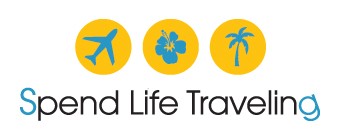
Sailing in the Caribbean – The Best Destinations & Things to Know
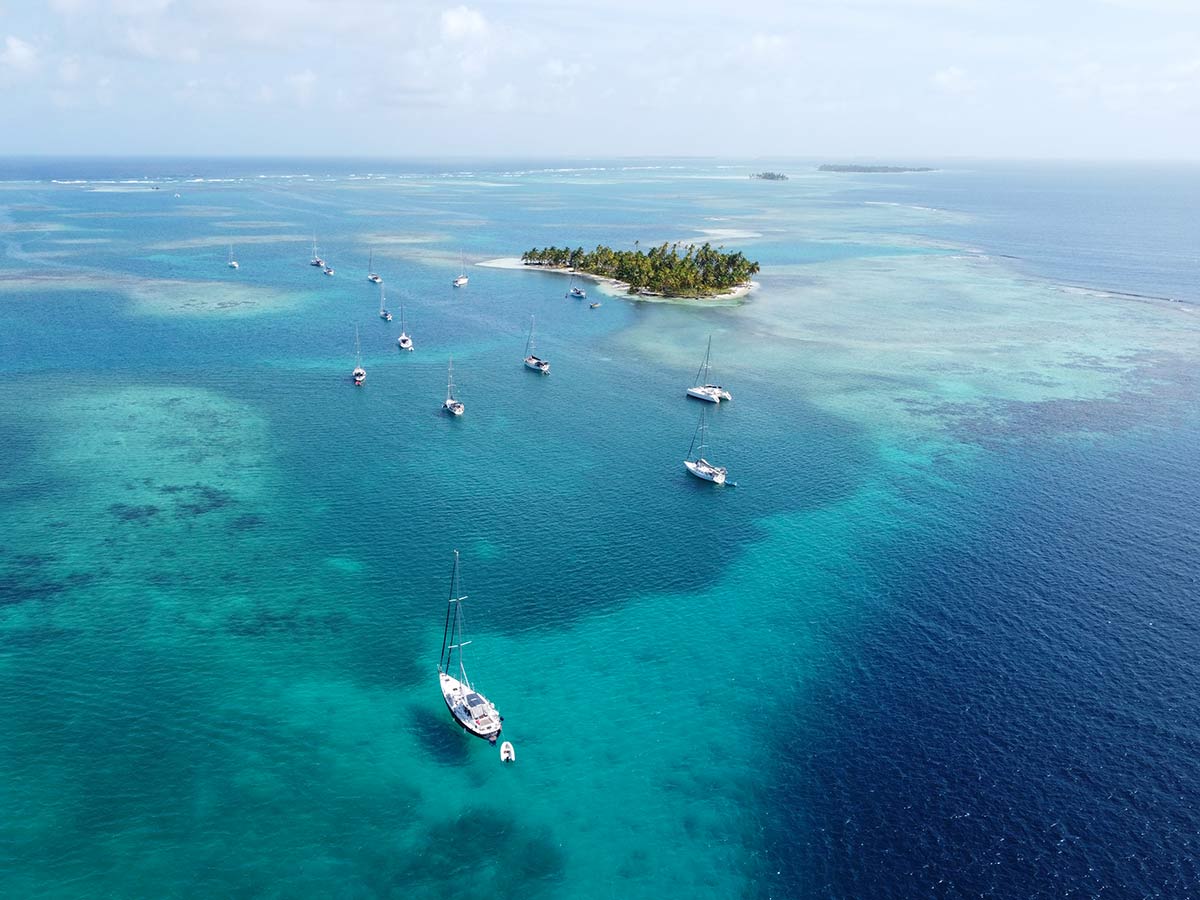
I’ve spent the past two years sailing in the Caribbean. And my partner, a sailor by profession, has been sailing around Caribbean islands since he was a teenager.
Whether you want to charter a yacht in the Caribbean or are planning to sail on your own boat, I hope this article will give you all the information you need to make it into a great trip!
The Best Places to Sail in the Caribbean
What the best sailing destinations in the Caribbean are depends on what you are looking for. And, it even depends a little bit on where you are coming from.
For example, many North Americans will name the Bahamas as their favorite cruising destination, often followed by the USVI.
British sailors will probably tell you about sailing in the Caribbean islands of Saint Vincent & the Grenadines, the BVI, or Grenada .
And French sailors will almost always include Martinique in their list of best destinations for yachting in the Caribbean.
In this article I’m sharing six of the most popular Caribbean sailing destinations , and I will explain what makes them great and which islands and countries are best for which type of sailor.
1. The Bahamas

The Bahamas are probably the most popular sailing destination in the Caribbean for Americans .
And yes, that’s partially because of its proximity to the USA (it’s only 48 nautical miles from Miami to Bimini) but the Bahamas also has a lot to offer as a sailing destination.
Its crystal clear, turquoise waters are some of the most incredible waters I’ve seen anywhere in the Caribbean.
From a natural point of view, the Bahamas is quite spectacular.
You have hundreds of islands and anchorages to choose from. You could find yourself anchored in front of an island with a great hiking trail today, taking your dinghy through a mangrove tunnel tomorrow, and swim with nurse sharks at yet another anchorage on day three.
There is a large variety of things to see and do in the Bahamas that are only accessible if you have a boat . And that makes the Bahamas one of the best sailing destinations in the Caribbean.
The Exumas are the favorite part of the Bahamas for many sailors with famous anchorages such as Norman’s Cay and Pigs Beach, but also many more serene and remote anchorages.
One major downside to sailing in the Bahamas is just how expensive everything here is. From groceries and restaurants to cruising permits and marina fees. Almost everything in the Bahamas will cost you more than on many other Caribbean islands.
But, if you stock up before you sail to the Bahamas and anchor instead of using marinas, you can have an incredible time even if you are sailing on a budget.
Some other things to note about the Bahamas as a sailing destination is that winds are more variable since you are not in the tradewinds here. Plus many anchorages and approaches to anchorages are shallow . If your boat has a draft of more than six feet (1.8 meters) certain anchorages become very tricky and you wouldn’t be the first boat to run aground around here.
But, don’t let any of this put you off. If you want to sail in the Caribbean, the Bahamas should definitely be high on your list because it is just absolutely beautiful around here!
The Bahamas is also one of the most popular places to charter a yacht in the Caribbean and you can find a wide range of boats to rent .
Tip: I recommend getting a cruising guide for every Caribbean sailing destination you plan to visit, but especially for the Bahamas. With its many shallow areas and some tricky anchorages a cruising guide provides valuable information in addition to your chart plotter.
The most popular cruising guides in the Bahamas are the Explorer Chartbooks. There is one for the near Bahamas and one for the Exumas & Ragged Islands .
2. The British Virgin Islands (BVI)

The BVI consists of four larger islands and 32 smaller islands and islets .
Like the Bahamas, the BVI is a country best explored by boat, and that’s just one of the reasons why the BVI is such a great sailing destination.
The islands here are located close together which makes it very easy to sail from island to island, and there are plenty of sheltered anchorages to choose from.
Almost all of the popular bays offer mooring buoys. So if you are nervous about anchoring, that’s a great feature not many other Caribbean sailing destinations can offer.
With its beautiful beaches, some great snorkeling and scuba diving, and many lively anchorages, the BVI is very popular as a sailing vacation destination, with many yacht charter options .
Also Read: Where to Go for the Best Diving in the Caribbean
The Baths at Virgin Gorda are one of the highlights to visit while sailing here. And most likely you’ve already heard about the famous floating bar Willy T’s and the Soggy Dollar Bar. Yes, the BVI is a lively sailing destination!
A downside to sailing in the BVI is that its popularity does make it crowded and its reputation as an easy sailing destination attracts a lot of novice sailors, which is something to be aware of. At the same time, if you are a novice sailor, the BVI really is a great place to gain sailing experience .
The islands are beautiful and diverse, navigation is easy and there is plenty to do in the BVI!
The best cruising guide for sailing in the BVI: Simon Scott’s Cruising Guide to the Virgin Islands
3. Saint Vincent & the Grenadines (SVG)

Part of the Windward Islands, Saint Vincent and the Grenadines make for some of the most beautiful sailing in the Caribbean .
It’s all about the Grenadines really though, with Bequia and the Tobago Cays being some of the most popular sailing destinations here.
In total there are 32 islands and cays in SVG, of which only 9 are inhabited.
I’ve heard it being described as a ‘first taste of the South Pacific’. The natural beauty, the crystal clear waters and the marine life are incredible and remind many sailors of the beautiful unspoiled South Pacific.
With consistent winds, easy anchoring and generally good holding it’s a great sailing destination. Plus, it’s easier to find less crowded anchorages here than in some of the other popular Caribbean sailing destinations.
Don’t get me wrong though, the SVG is popular, so you definitely won’t be the only boat here!
One downside to sailing in the SVG is that unfortunately, crime rates have increased in recent years. Stolen dinghies and robberies from yachts have become more common.
It’s a truly beautiful part of the world though and for many who’ve sailed all around the Caribbean it’s one of their highlights.
The best cruising guide for sailing in SVG: Chris Doyle’s Sailors Guide to the Windward Islands

Grenada is one of those Caribbean sailing destinations where many sailors spend months or even years.
It has a great sailing community , friendly locals, and enough different things to explore to keep you entertained for a long time.
We’ve spent months sailing around Grenada and I actually created a more detailed article about sailing in Grenada in which I describe all the different anchorages and marinas, and share additional tips.
Grenada is one of those lush, green islands offering good hiking, waterfalls to visit and several chocolate estates that make for a great excursion inland.
Grenada consists of three main islands, Grenada, Carriacou, and Petite Martinique, plus several smaller islands.
Sandy Island is a beautiful anchorage not to miss, and Tyrell Bay and Woburn Bay are two main anchorages with the most lively cruising communities. But again, I describe all of that in my Sailing in Grenada Guide .
You’re in the tradewinds here and mostly sailing on the leeward side, making Grenada quite an easy sailing destination.
If you’re looking for a beautiful tropical island destination with friendly people, decent boating facilities and a large sailing community, Grenada is one of the best choices!
A good number of cruisers decide to stay here for most, or even all of hurricane season. And although Grenada isn’t completely outside of the Caribbean hurricane area, it does get hit less frequently than other islands.
Plus, Tyrell Bay has one of the best hurricane holes in the Caribbean.
The best cruising guide for sailing in Grenada: Chris Doyle’s Sailors Guide to the Windward Islands (the same as for sailing in SVG)
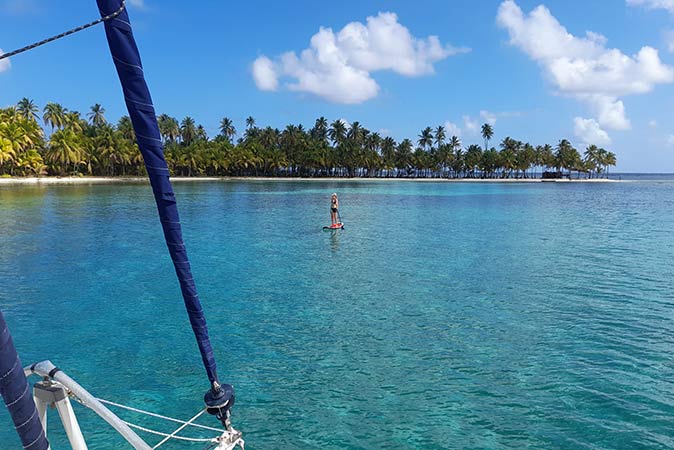
You might not have expected Panama to be included in a Caribbean sailing guide, but the Caribbean coast of Panama is actually a great sailing destination.
And Panama as a whole is a great, diverse country to visit.
From the remote San Blas islands to the modern capital of Panama City. From Bocas del Toro with its lively sailing community to hiking in El Valle de Anton or enjoying the cooler air in Boquete.
Panama gives you a whole country to explore.
Also Read: Interesting Facts About Panama
If you love the idea of combining sailing to diverse anchorages with exploring a country on land, Panama has a lot to offer!
Panama is slightly more expensive than other Central and South American countries, but it’s a lot cheaper than most Caribbean islands . Plus it’s relatively easy to get boat parts and any other supplies shipped from abroad, which is a great help if you need to do any work on your boat.
Marinas are relatively inexpensive making it easy to leave your boat for a while to explore more of Panama.
As for sailing, the beautiful, remote San Blas Islands can’t be missed! But I would also recommend sailing to Bocas del Toro. Explore at least a few of its many different islands and meet some other sailors around Bocas Town.
The one downside to sailing in Panama is that the cruising permit is more expensive than in most other Caribbean sailing destinations.
The best cruising guide for sailing in Panama: The Panama Cruising Guide by Eric Bauhaus – although a bit older, it’s still heavily relied on by sailors for navigating shallow waters and reefs.

If you love scuba diving, nature and a more laid-back sailing destination , then you’ll love Bonaire.
Bonaire is known for its great and easy scuba diving, attracting divers from all over the world.
Also Read: The Best Dive Sites in Bonaire
The island is small, not overly developed and the cruising community is great.
It’s really all about discovering the underwater world here though. If you don’t scuba dive yet, this is a great place to learn.
But even if diving is not your thing, snorkeling here is beautiful too and the island is popular among bird lovers as well.
Some people jokingly say there are more flamingoes than people in Bonaire!
Bonaire is not a sailing destination where you move from anchorage to anchorage. In fact, to protect the marine environment you aren’t allowed to anchor here . You can either take a mooring buoy or stay in the marina.
One downside to Bonaire as a sailing destination is that the mooring buoys do fill up so you might end up staying in a marina longer than you would have wanted to. Recently though the fees for using the mooring buoys have gone up substantially. This means that Bonaire isn’t the cheap sailing destination that it was anymore, but it does also mean that you are a lot more likely to find an available mooring buoy when you arrive.
Bonaire is, just about, outside of the hurricane belt which makes it a popular Caribbean sailing destination during hurricane season. I say ‘just about’ because Bonaire can get hit by a hurricane and has been in the past, it’s just very rare.
Because Bonaire isn’t a sailing destination where you go from anchorage to anchorage, a sailing guide isn’t really necessary. Your chart plotter or navigation app will suffice.
Tips for Sailing in the Caribbean
1. the best time to sail in the caribbean.

Most of the Caribbean falls inside the hurricane belt. Hurricane season officially runs from June 1st until November 30th.
Therefore the best time to sail in the Caribbean is between early December and the end of May.
December, especially the time around the holidays, is peak season for most of the Caribbean, making it crowded and prices for things like rental cars and hotels tend to go up.
Because historically most hurricanes have happened between late August and the end of September, you’ll find many sailors still sailing around the Caribbean in June and July, and again in early November.
There are also plenty of hurricane holes around the Caribbean where you could sail to in the event of a hurricane or storm warning, but my recommendation would be to use this time of year to visit parts of the Caribbean that are outside of the hurricane belt.
Bonaire and Curaçao are popular islands for sailors to spend hurricane season.
Panama is also outside of the hurricane belt but hurricane season coincides with rainy season, making it not the best time to sail in Panama.
2. Navigation While Sailing in the Caribbean
We’ve been using Navionics for the past two years and generally, that has been very accurate to sail around the Caribbean. But, I highly recommend buying a cruising guide for the country or island you plan to sail in.
They provide a lot of useful information about the quality of different anchorages, how to enter, what facilities you can find ashore, etc.
In the list of the best Caribbean sailing destinations I’ve added links to the most popular cruising guides for each destination.
3. Is it Safe to Sail the Caribbean?

Well, this is a difficult question to answer.
Of course during hurricane season it’s not entirely safe to sail in the Caribbean anywhere within the hurricane belt.
But, apart from hurricane season there is also crime . And although violent crimes involving sailors are thankfully very rare, dinghy theft is not. And, occasionally you’ll hear a story about someone’s boat getting broken into.
I’ve anchored in bays in Saint Lucia where I didn’t feel comfortable leaving the boat alone. And our neighbor had their dinghy stolen at night in the Honduran Bay Islands. So yes, things do happen and I’d lie if I’d say that I never worry about crime in the Caribbean.
That being said, the sailing destinations listed in this article are all considered safe to visit. And with the right preparations, you’ll have a great time.
4. Always Lock Your Dinghy!
Dinghies get stolen from dinghy docks, from beaches but also right off the boat. Lock your dinghy and, if you can, hoist it out of the water at night.
5. How Big of a Boat Do You Need to Sail the Caribbean?

I’ve been asked this several times. And to be honest, it really is all about what you are comfortable with.
I’ve met people sailing around the Caribbean full-time on a 26 foot monohull but I also met someone who thought her 48 foot catamaran was a bit small.
You can safely sail any of the Caribbean islands listed above in a small boat, and all these islands have marinas and anchorages suitable for big yachts as well.
Do keep in mind that many marinas in the Caribbean are not cheap and since you generally pay per foot, the bigger the boat, the more expensive it will be for you to use marinas.
And, catamarans often pay 1.5 times the rate of a monohull.
6. Chartering a Boat in the Caribbean
If you’re looking to charter a yacht in the Caribbean, I can highly recommend Click&Boat .
They have a great selection of boats on their website at more reasonable prices than some local charter companies.
Chartering a sailboat in the Caribbean is extremely popular . And, you can choose to charter one with or without a captain.
I know several sailors who now own their own boat, but for whom chartering in the Caribbean is what got them hooked. So be careful, you might not want to go home after your Caribbean sailing trip!
Sailing in the Caribbean – Conclusions
The Caribbean is a popular sailing destination, and for good reasons.
The weather is generally great (outside of hurricane season), the winds are stable and there are more anchorages to explore than anyone could in a lifetime.
But, some destinations will suit you better than others, depending on your personal interests, your boat, and how much time you have.
I therefore recommend taking some time to plan where you want to go and why.
The sailing destinations I’ve listed above are all absolutely great, but they might not all fit your needs.
For example, we sailed to St Maarten because we had some problems with our engine and St Maarten is a good destination in the Eastern Caribbean for boat maintenance.
Read different Caribbean cruising guides and talk to other sailors about their favorite places and tips.
But enjoy, no matter where you’ll end up sailing in the Caribbean, I’m sure you’ll make incredible memories!
- Sailing in Saint Lucia – Anchorages, Sailing Tips & More
- Sailing in Curaçao – Things to Know
- Anchoring in Mullet Bay, St Maarten
- Sailing Across the Atlantic – My Experiences
- Why Taking Seashells From the Beach is a Bad Idea
- The Best Caribbean Islands to Visit & Why
- 5 Most Romantic Caribbean Islands
Like this article about sailing in the Caribbean? Pin it!

Disclaimer: This blog about sailing and chartering a yacht in the Caribbean contains affiliate links. I may receive a commission for purchases made through these links, at no additional cost to you. As an Amazon Associate I earn from qualifying purchases.
Leave a Comment Cancel reply
Contact: [email protected]
Created by Mar y San Design
The Best Boat for Caribbean Island Hopping (Type and Size)
When you're planning to get out cruising and you've decided on a season (or more) in the Caribbean, the question always comes down to "what's the best boat?" And the answer isn't just "it depends," even though everyone's situation, finances and skills are different. There are a few important things to consider about this lifestyle and journey.
The best boat for Caribbean island-hopping has space for you and your crew, good storage for food and water, is seaworthy, and comfortable at anchor. Some good monohulls include the Bavaria 32, Beneteau 331, and Jeanneau Sun Odyssey 42 DS. For catamarans, consider the PDQ 36, Manta 40, and Leopard 44.
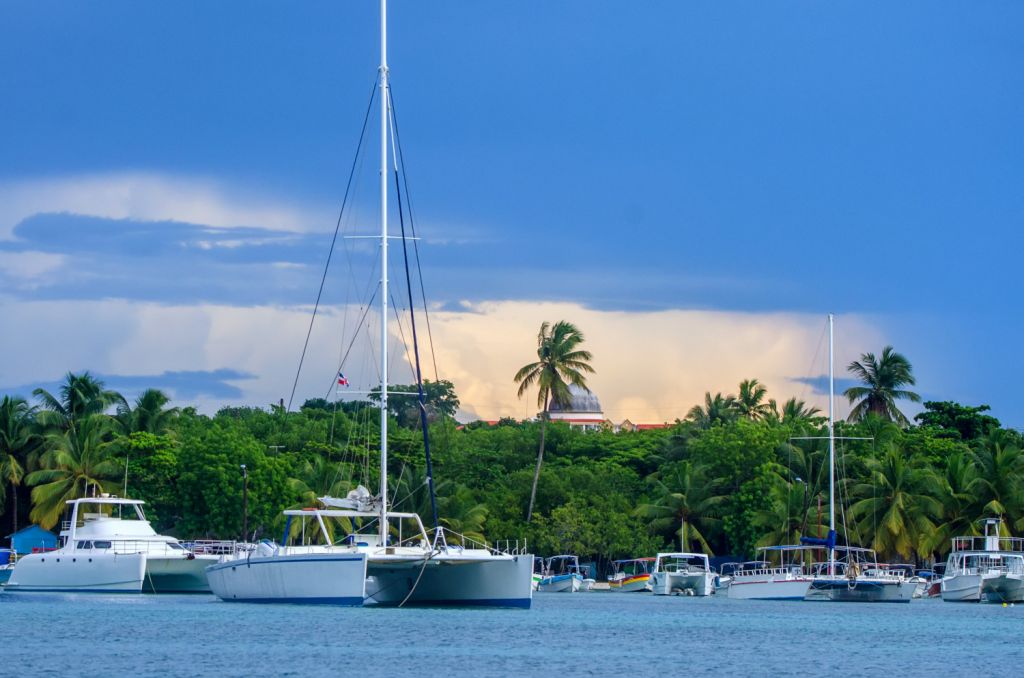
On this page:
Criteria for caribbean island hopping boats, island hopping vs. bluewater cruising, what you want in your island hopper, a few good island boats.
This is a broad list, and there are many boats that could meet these criteria. Read on for a few examples of some great boats, while we get into more detail about what you do and don’t need to bounce up and down the Windward and Leeward islands and through the Bahamas.
The best boat for Caribbean island-hopping meets the following criteria:
- It has adequate space for you and all the people and pets you plan to have on board.
- There is plenty of storage for food and water (storing it or making it) to carry you through islands with fewer services.
- It is seaworthy, comfortable, and safe. Note that speed is not a top priority, nor is the ruggedness you'd look for crossing oceans.
- It is comfortable to live on at anchor, including the stability and airflow through the boat.
- You can afford to buy, operate, own and maintain it.
What size boat do you need to sail the Caribbean?
There's no hard and fast rule about size, it comes down more to personal preference and budget. You can meet the above criteria with a thirty-foot boat or a sixty-foot boat. Practically speaking, there isn't much below thirty-two feet with the space and comfort for long term living, even for one. A couple should start looking around thirty-six feet. You can get away with less, but it may be tight living with your gear and stores.
What's the best boat type to travel the Caribbean?
You want something that is comfortable and sea-kindly, the specific type - catamaran or monohull - is less important than the boat's handling and living characteristics. Sailing "down island" is often into the trades, so there can be upwind days and bumps and lumps. You want something with enough comfort and protection to handle that. If your budget is tight, a smaller monohull will get you more boat and carrying capacity than a catamaran.
What size sailboat to sail to Bahamas?
The same general guidelines apply for the Bahamas as the Caribbean, with one general exception - draft. Much of the Bahamas is quite shallow, with many reefs flats. If your primary sailing time will be in the Bahamas, you want something which is comfortable at anchor and offshore, but also which doesn't draw too much. When you start looking for shallow draft boats over forty feet, most of what you find are swing/lifting keels, full keels, or catamarans.

If you read our article Sailing Time Between All Caribbean Islands , you'll see that there are no passages between islands in the Windward and Leeward chains that are more than a single overnight. Many of them are day sails. So if you buy your boat in the Caribbean and never leave the eastern Caribbean, you won't need to do any passages longer than an overnight.
Bluewater Toughness
Contrast that with blue water sailing and passage making. If you're headed across the Pacific or sailing back to the continental U.S., you will be offshore for a week or two at a time, even a month or more at a stretch for some slower boats crossing the vast Pacific.
You can't wait for a break in the weather on those trips, you leave and get the weather that happens. The boat needs to be tougher, and it needs more safety gear and equipment. A lightly built boat won't be happy pounding into chop for days on end or riding out a massive storm.
And you also need supplies, provisions, and spares for months, including fresh water if you don't have a water maker or a good catchment setup.
Island Hopping Comfort
Your island hopping needs are a lot less. With short trips, you can wait for not only good weather, but near perfect weather to move. Why put up with bad weather at all when you only need to wait a few days when your next stop is only six or eight hours down island?
And you're not that far from provisions or spares. Every populated island has food. Though the specifics of what is cheap and available varies, you will never starve or be far from something.
Spares are similar; while it is best to have a spare on hand to keep from getting stuck, the major sailing centers like St. Martin, Martinique and Grenada can get you most of what you need, and get it to you no matter where you are.
And the sailing distances are short, so you don't need a ton of speed (though speed is always nice), and you do not need an incredible motoring range.
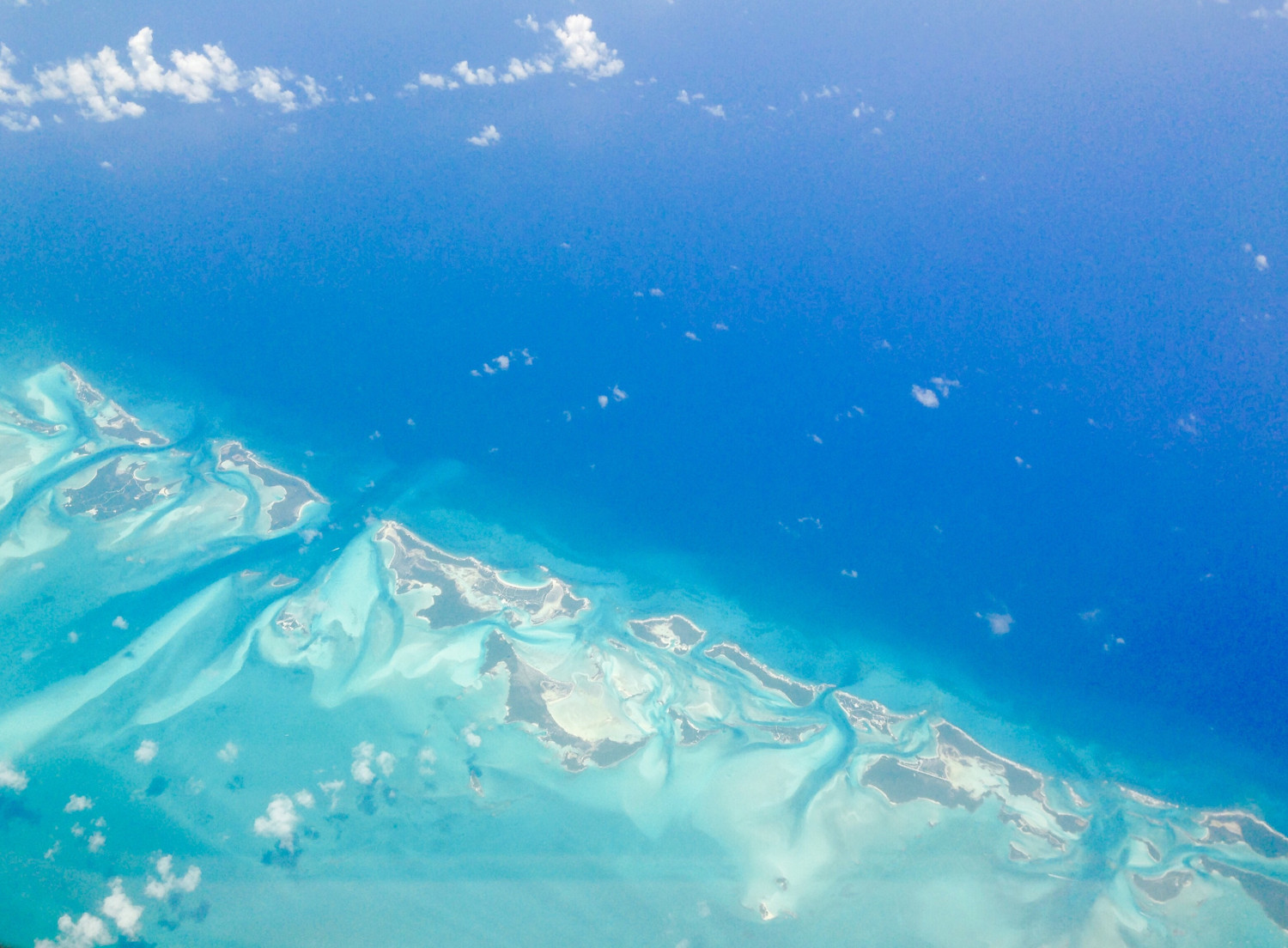
Working from our list in the first section, there are a few things you want in your Caribbean cruising boat.
Living Space & Amenities
Your boat does not have to be big, it just has to be big enough. Cruising couples have different needs than families or solo sailors, and this is one of those "it depends" answers that is unique to each captain and crew. Living on a boat for months or permanently is a big change from land-bound life, and there is a tendency to think you need more boat than you do. We're used to space in houses, and having basements, attics and great big pantries.
You won't have the storage you were used to, but you need storage for:
- Food and supplies for a while. You won't need months, but it is wise to stock up on something when you find it, because you never know what the next island won't have. A separate freezer is very handy for this.
- Clothing...but not as much as you think. You'll be living in t-shirts, shorts and sandals most of the time. Most of those are pretty small, and you can pack a lot more clothing when you don't have to worry about bulky coats or dressy clothes.
- Water toys and fun. Snorkels, fins and masks for everyone on the boat, and diving gear if you are into it. But you may want to have a SUP (Stand Up Paddleboard) or a kayak, especially if you have kids.
Fresh water is available everywhere, but it's not always free and it's not always good quality. A water maker is expensive and finicky, but a big convenience since you won't have to pay for water or move the boat to top up. If you don't have a water maker, lots of tankage and a good filter is nice to have.
Living systems like hot water and a shower make a big difference to your daily quality of life. While you'll be in the water a lot, you need to get the salt off. If you're not in a marina, it's not so easy to get a freshwater shower unless you have your own.
Comfort and Seaworthiness
Although you don't need a doughty passage maker to pop between islands, you still want something that is safe and comfortable to move. If you don't like the way your boat feels and handles at sea, you will be much less likely to move around. You don't want that.
Comfort and safety are more important than speed, and there's no need to get a rocket ship of a boat unless you have the money to burn on it.
Comfort at Anchor is Key
Three primary factors go into being happy at anchor in your boat.
- How she moves at anchor
- Airflow through the boat
- Confidence in your ground tackle
A light boat which rocks and rolls with every passing wake will not be a happy boat to spend lots of time at anchor, and there are a lot of open roadstead anchorages which are unprotected from some wind shifts. Monohulls with deeper drafts, fuller keels, or larger beams will not snap and roll in waves like light boats with low ballast. And catamarans barely move at all until it gets pretty lumpy.
The airflow on most boats is optimal when the boat is facing straight into it, as you will be in most anchored or moored situations. This is one reason we prefer to be at anchor; tied to a dock you don't get the same breezes.
But a boat with poor ventilation in the tropics will not be a comfortable boat. You won't want to rely on air conditioning for several reasons (the biggest is that you need to run a generator or be on shore power), so you will need on breezes to keep you comfortable. This applies inside your boat and in the cockpit.
Our blue water cruiser was comfortable enough in the islands, but her hatches opened aft for safety, hampering air flow, and we have a hard dodger. Neither of these were great features for an island-hopping only boat and I'd think twice about them if I wasn't planning a lot of blue water sailing.
Ground tackle is something you can upgrade. So it's not mandatory that the boat you pick has great ground tackle, as long as you can upgrade it if needed. You should have an all chain rode, and with that you’ll want a powered windlass if your boat is larger. That is a pretty big upgrade if a boat doesn't have one already, and not every boat has capacity (space, wiring, power) for the upgrade
Affordability
The cost of buying a boat and owning a boat are two different things. A boat may be cheap to buy, but expensive to own, or it could be the opposite. Or worse...it could be both expensive to buy AND expensive to own and operate.
Older boats and ex-charters have the advantage on purchase price. They will be cheapest to buy, and there are usually lots available. But there is always a risk they will be more expensive to own, at least initially if you have to do upgrades, modernizations and repairs. If you look at one, make sure you get a thorough survey and factor in the work you will need to bring the boat to the standard you want.
Newer boats will have a higher cost of entry, but require fewer upgrades and lower maintenance the first few years. But being newer or brand new is not a guarantee against problems.
But the most important thing to remember is that most boat services are charged by the foot, and those charges are not affected by what you paid for the boat or how old it is. It costs the same to haul and put bottom paint on a thirty-year-old boat as it does for a two-year-old boat the same size. So avoid the temptation to buy a lot more boat because it's older and cheap.
The charter companies get a few things right about the boats they pick for their fleets. They choose newer production boats which cost less up front, and they keep them simple to use and maintain. Production monohulls like Beneteau, Jeanneau, Bavaria, and Dufour (among others) are great solutions for this type of sailing. On the catamaran side, Lagoon, Fontaine Pajot and Leopard are popular choices.
When thinking of budgets, remember there are three factors that go into the price: the age , size , and condition of the boat. Expensive boats are new, big, and in great shape. If your budget is more limited, you'll need to consider something older, smaller, or in need of a bit of work.
And a word of caution on buying boats that are in the Caribbean. There are good deals to be had, but there are lots of storm-damaged boats at aggressive prices. They are project boats, and you will need to do a lot of work on them and they may have hidden flaws. There are also many boats sold out of charter fleets. These are mostly solid boats, but they may have more wear and tear for their age compared to privately owned boats, and many have deferred maintenance you will need to look for.
- Beneteau 331
- Beneteau Oceanis 390
- Jeanneau Sun Odyssey 42 DS
- Dufour 500 Grand Large
- Fontaine Pajot Orana
This list is just a starting point; there are so many good boats to choose from. And you may also find many perfect boats from smaller builders and less well-known designs. If it's in your budget, you can even head to the islands and charter a similar boat to see for yourself how good it will be.
Leave a comment
You may also like, sailing time between all caribbean islands (tables & tips).
A season in the Caribbean - what a dream vacation or a plan for a sabbatical! Or if you're a full-time cruiser, a lifestyle. But where to go and when? How long does …
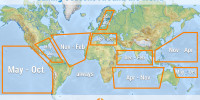
The Sailing Seasons Around the World (with Map)
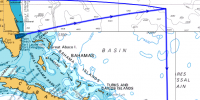
Sailing Route from Florida to the Virgin Islands (with Map)

How Much Sailboats Cost On Average (380+ Prices Compared)
Own your first boat within a year on any budget.
A sailboat doesn't have to be expensive if you know what you're doing. If you want to learn how to make your sailing dream reality within a year, leave your email and I'll send you free updates . I don't like spam - I will only send helpful content.
Ready to Own Your First Boat?
Just tell us the best email address to send your tips to:
- Share full article
Advertisement
Supported by
Caribbean Splurge: A Sailboat of Your Own (Well, Sort of)
What you need to know to charter a sailboat in the Caribbean, from costs and type of vessel to timing and itinerary.

By Christopher Hall
Last April, Chris Kotchick, a Scranton, Pa., oral surgeon, and his family spent a week on a chartered catamaran in the calm, clear waters off the British Virgin Islands. A crew of two — part of the deal — ran the show.
Until then, Dr. Kotchick said, the sum total of his nautical experience had been riding ferries. But his search for a vacation that would appeal to his wife, Bridget, a high school biology teacher, and their two teenage children led him to a 50-foot-long boat, which they used as a base for swimming, snorkeling, wake-boarding and scuba diving as they sailed from island to island. They slept onboard and mostly skipped onshore restaurants, wowed by the crew-cooked meals that could be shared with their daughter, who has celiac disease.
As to cost, the trip was, for them, an affordable splurge — just over $20,000. “It wasn’t that much more than the blowout Disney World vacation we took when the kids were younger,” said Dr. Kotchick, adding that two others had joined the family on that trip. “And it was a lot more fun.”
Though the image of yachting in the Caribbean skews more oligarch than average Joe, the Kotchicks are far closer to typical crewed yacht clients than the likes of Jeff Bezos aboard his schooner, which is more than 400 feet long and cost a reported $500 million. After a pandemic lull, more people of comfortable, but not necessarily extraordinary, means are booking these trips, and the trend is edging higher. According to an April 2023 report from Fortune Business Insights, the global charter yacht market — including both crewed and sail-it-yourself, or bareboat, charters — is expected to grow 5.5 percent by 2030, with yachts under 40 meters (about 131 feet) accounting for the largest share.
Because the cost includes a crew, passengers don’t need specialized maritime knowledge, which means the trips draw a variety of travelers.
“Some of our clients are more into active sports, and others prefer relaxing with a book or checking out onshore restaurants, bars and resorts,” said Carlos Andrade, a captain who, with his wife, first mate and chef, Maribel Ramirez, has run trips in the Caribbean and elsewhere for more than 30 years, most recently aboard their 44-foot catamaran, Alizé . “But all of them love the outdoors and simply being close to water.”
For Steve McCrea, a broker at the yacht charter agency Ed Hamilton & Co. , the most common question from prospective clients is whether their kids will get bored on a boat. “I tell them that, yes, it’s a sailing vacation,” said Mr. McCrea, who has been booking crewed Caribbean trips for 26 years, “but, in fact, it’s more like a floating resort on the move, with loads of activities, sports gear and great beaches where you can spend the day.”
Jim Grant, a broker at Carefree Yacht Charters , said passengers do not need to meet any specific benchmark of health or physical fitness. “If you can comfortably navigate jet travel to get to the boat,” said Mr. Grant, “you’ll be fine on board.”
The nitty-gritty: boats and cost
In the Caribbean, crewed catamaran sailboats with their double hulls far outpace power boats and single-hull sailboats as the vessel of choice. “They’re more stable on the water, which is great for people without a lot of sailing experience,” said Mr. Andrade, the yacht skipper. “And in terms of onboard space, they can’t be beat when you compare different kinds of boats of similar length.”
A boat’s size and age largely determine the cost of a charter, with price bumps occurring during the holidays. For a weeklong trip for six passengers aboard an older catamaran with three en-suite guest cabins and a crew of two in its own cabin, the per-person fee starts around $2,500 for a vessel under 50 feet. That gradually rises to $5,000 and up for a somewhat larger and newer boat and zooms ever higher as size and newness increase. A week aboard a two-year-old, 80-foot catamaran with four en-suite cabins and a crew of four, for example, can easily approach $20,000 per person. In the Caribbean, the charter fee is usually inclusive, meaning that meals, alcohol and fuel are folded into the cost. Only the customary 15 to 20 percent gratuity is extra.
Crewed charter trips can fill up fast. “For the best selection, you should think about booking at least six months in advance for popular times like spring break, Easter and Thanksgiving,” said Els Kraakman, a British Virgin Islands-based broker with Waypoints Yacht Charters . “For Christmas and New Years, it can be more like a year.”
Unless you’re chartering a megayacht with its own gym and sauna, amenities are fairly uniform. Even on moderately sized vessels, they usually include Wi-Fi, air-conditioning, music systems, swimming platforms, on-deck showers (in addition to those in cabin heads), motorized dinghies for water sports and transport to shore, and an arsenal of sporting equipment like kayaks, stand-up paddle boards, and gear for snorkeling and fishing.
Alfresco, onboard dining is a big selling point, with galleys on many boats staffed by cooks with professional experience.
“The meals were fabulous,” said Steve Tyler, a retired process safety engineer from Kansas City, Mo., who recalled an especially memorable chicken-coconut-cream curry served on the 51-foot catamaran in the British Virgin Islands that he chartered earlier this year with his wife, Laura, and their 19-year-old and 23-year-old daughters. “Our daughters are so busy with their own lives,” said Ms. Tyler, a retired editor. “It was wonderful for all of us to share three meals a day.”
Using a broker
Brokers arrange most crewed charter trips in the Caribbean, especially for first-time passengers, with the standard 15 percent broker’s fee being paid by the boat owner. Brokers can book virtually any yacht with a crew. The best of them, however, tend to work exclusively with charters run either by boat owners themselves or a team dedicated full-time to the boat — what some call true charters — as opposed to bareboat operations with a freelance captain and cook hired for a single trip.
Many websites appear to offer brokerage services, but actually function more as booking sites. “Real brokers talk with clients before booking to get a sense of who they are and what their expectations are for the trip,” said Mr. Grant. “Based on those conversations, they recommend boats and crews they actually know about from prior bookings, personal connections or visits to the annual charter yacht shows.” Many top brokers are members of professional associations like the Charter Yacht Brokers Association or the American Yacht Charter Association .
Matching crew to client is particularly important. In addition to running the boat and cooking meals, crew members act as hosts, concierges and de facto tour guides, and they can be in close quarters with clients, especially on smaller boats.
So, where are you sailing to?
When you consider that there are roughly 7,000 islands in the Caribbean region, choosing one or several for a crewed charter might seem daunting. But the Caribbean’s charter fleet is concentrated in only a handful of locales with the right combination of good sailing and onshore services. Itineraries tend to be similar no matter how big your boat is. In fact, smaller vessels often have an advantage in being able to travel and overnight in shallower, close-in waters that are off-limits to mega yachts.
In the Bahamas, a popular destination that technically lies in the Atlantic Ocean, boats (including power yachts) make trips from Nassau into the Exumas, a chain of 300-plus low islands and cays with few inhabitants and miles of beaches. The U.S. Virgin Islands, with National Park Service sites and other onshore attractions, boasts a significant charter fleet. In the Leeward Islands, Antigua and St. Martin appeal to those looking for serious ocean sailing and, in the case of St. Martin, especially the French side, good food. South of normal hurricane routes, St. Vincent and the Grenadines, a group of 32 cays and small, agricultural islands, sees an influx of charter boats during what is peak hurricane season for many other Caribbean islands.
The top destination by far, however, is the British Virgin Islands, 50-plus diverse islands — some sparsely inhabited, others dotted with resorts and well-known watering holes — whose terrain ranges from green mountains to sugar-sand beaches.
On their separate trips, the Tylers and Kotchicks each hopped around islands like Tortola, Jost Van Dyke and Virgin Gorda, and made the longer sail to more remote Anegada, home to vibrant pink flamingos.
For the Tylers, the British Virgin Islands trip, which ran about $20,000, was likely a once-in-a-lifetime vacation. “It was expensive,” said Laura Tyler, “but definitely worth it in terms of the memories we created.”
The Kotchicks, however, aren’t ruling out another crewed charter. “I’d do it again in a heartbeat,” said Dr. Kotchick. “The only question is where.”
Follow New York Times Travel on Instagram and sign up for our weekly Travel Dispatch newsletter to get expert tips on traveling smarter and inspiration for your next vacation. Dreaming up a future getaway or just armchair traveling? Check out our 52 Places to Go in 2023 .
An earlier version of this article misstated Laura Tyler’s professional background. She is a retired editor, not a family law attorney.
How we handle corrections
Open Up Your World
Considering a trip, or just some armchair traveling here are some ideas..
Italy : Spend 36 hours in Florence , seeking out its lesser-known pockets.
Southern California : Skip the freeways to explore the back roads between Los Angeles and Los Olivos , a 100-mile route that meanders through mountains, canyons and star-studded enclaves.
Mongolia : Some young people, searching for less curated travel experiences, are flocking to the open spaces of this East Asian nation .
Romania : Timisoara may be the most noteworthy city you’ve probably never heard of , offering just enough for visitors to fill two or three days.
India: A writer fulfilled a lifelong dream of visiting Darjeeling, in the Himalayan foothills , taking in the tea gardens and riding a train through the hills.
52 Places: Why do we travel? For food, culture, adventure, natural beauty? Our 2024 list has all those elements, and more .
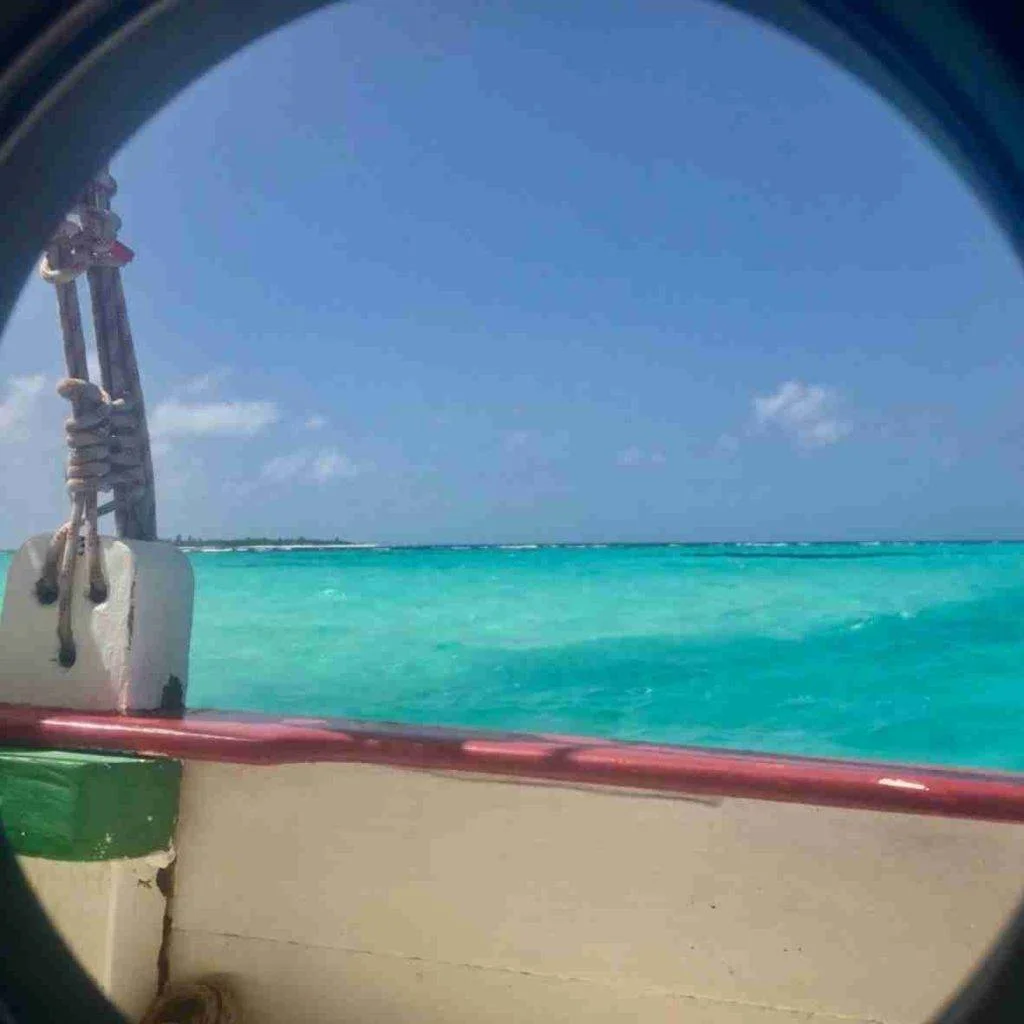
Sailing Expeditions with Impact, Adventure & Community
Sail the caribbean with us travel by sail to multiple island nations, fuelled by coconuts and fellow adventurers.
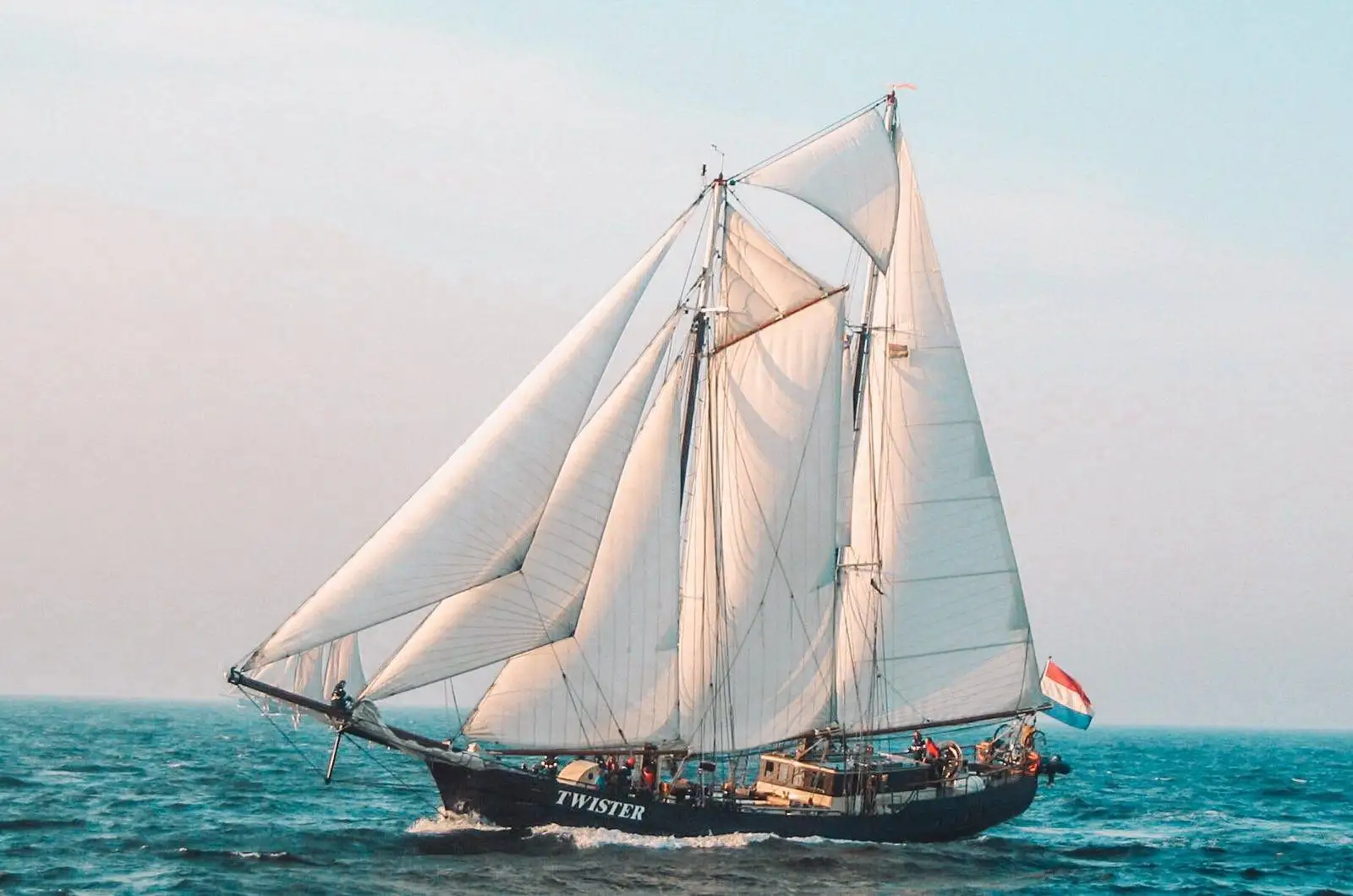
Caribbean Sailing Winter 2022 /2023
Expedition on | sailing the caribbean sea | west indies, after 5 years of organizing adventure and impact sailing trips we now go bigger and further than ever. and you can join us in the caribbean or across the atlantic.
The Caribbean islands are blessed with tropical rainforests, stunning reef drops, waterfalls and kitesurf and freedive potential. It is as scenic above as below the surface. The Caribbean are a nature lovers playground, full of character!
With dozens of authentic and unique island nations, the Caribbean calls for exploration time. The way to explore the Caribbean is by sail! With the trade winds from the east and the island chain going from north to south, turquoise waters and hundreds of islands, bay and inlets, sailing conditions are just perfect. You have to take the sea route to get the best sense of place, reach the best kitesurf, freedive and exploration spots.

Discover what it feels like to wake up on anchor, jump in the Caribbean sea first thing in the morning. breathe the healthy ocean air, have the wind in your hair, live simple and resourceful, and explore like the explorers back in the days. Day in, day out….
Dates & Destinations
4) Martinique, St. Lucia, St. Vincent & the Grenadines, Grenada | Dec 21 – 28 | 7 days FULL
5) Grenada, St. Vincent & the Grenadines, St. Lucia, Martinique | Dec 28 – Jan 4 | 7 days
6) Martinique – St. St. Lucia, Vincent & The Grenadines, Grenada, Martinique | Jan 7 – 19 | 13 days
7) Martinique – St. St. Lucia, Vincent & The Grenadines, Grenada, Martinique | Jan 21 – Feb 2 | 13 days | FULL
8) Martinique – Dominica – Guadeloupe | Feb 4 -11 | 7 days | FULL
9) Guadeloupe & Surrounding Islands| Feb 11-18 | 7 days
10-A) Guadeloupe – Dominica – Martinique | 18 Feb – 27 Feb | 10 days
10-B) Martinique to St. Maarten Fast Sailboat Ferry | 28 Feb – March 2 | 2 days
11) St. Maarten & Surrounding Islands | March 4 – 13 | 9 days
WE FACILITATE AND ACCELERATE

Adventure Sailing
Slow travel by sail, powered by wind, ruled by nature. Offshore and remote. On a 100+ year old hands on classic ship. No electrical winches here. With a bunch of 'strangers,' Expect the unexpected!

Positive Impact
We strive for minimum negative and maximum positive impact with our preparation & execution. The difference is in the details.

Ocean Minded Community
Expand your network with insight and inspiration. We walk the extra mile to unite your soul tribe members on board. Connection and conversation at sea goes deeper in one day than months on land.

Stories & Skill Building
Learn and expand your seamanship, sailing, navigation, resilience, conscious living, adaptation & social skills. + Introduction to Kitesurfing & Freediving. Exchange skills and stories with fellow crew members

Conscious Lifestyle
Gather tips and tools, to accelerate your journey to alternative adventurous conscious life on or near the sea. Lifestyle designing by and for ocean nomads.
Explore, Discover, Learn
Sailing in the caribbean.
Imagine jumping into warm turquoise waters just seconds after you wake up. Eating a freshly chopped papaya for breakfast, having consistent 15-20 knot breeze when sailing to the next island, and if we’re lucky spotting a whale or dolphins, do a boat swing, hiking up a hill for the view, climbing a palm tree for a coconut, and enjoying a sunset chillax with that coconut and green flash on the horizon. You can work on your swimming skills immersed in the evening bioluminescence, with the starry sky above you making wishes.
That’s just one example of a day on board SV Twister in the Caribbean. Each day you’ll experience something new, whether it’s spotting ocean wildlife, discovering a new island or trying some of the best local Caribbean cuisine.
Ocean Nomads trip are beyond ‘the usual’ sailing holiday. It’s and adventure experience aimed at making the dream lifestyle reality, not just for the time with us but beyond all that. Incorporating the Ocean Nomads values, of community, exploration, and positive impact into the elements of the trip. Ocean Nomads trips are always hands-on, everyone helps with the running of the ship.
Wherever we go we leave the places cleaner than we find it. Beach clean ups are part of the routine, not ‘just’ incorporated as an event.
This is a muti-adventure trip. But ofcourse, you’re always welcome to chill and read a book or just do nothing, but BEing.
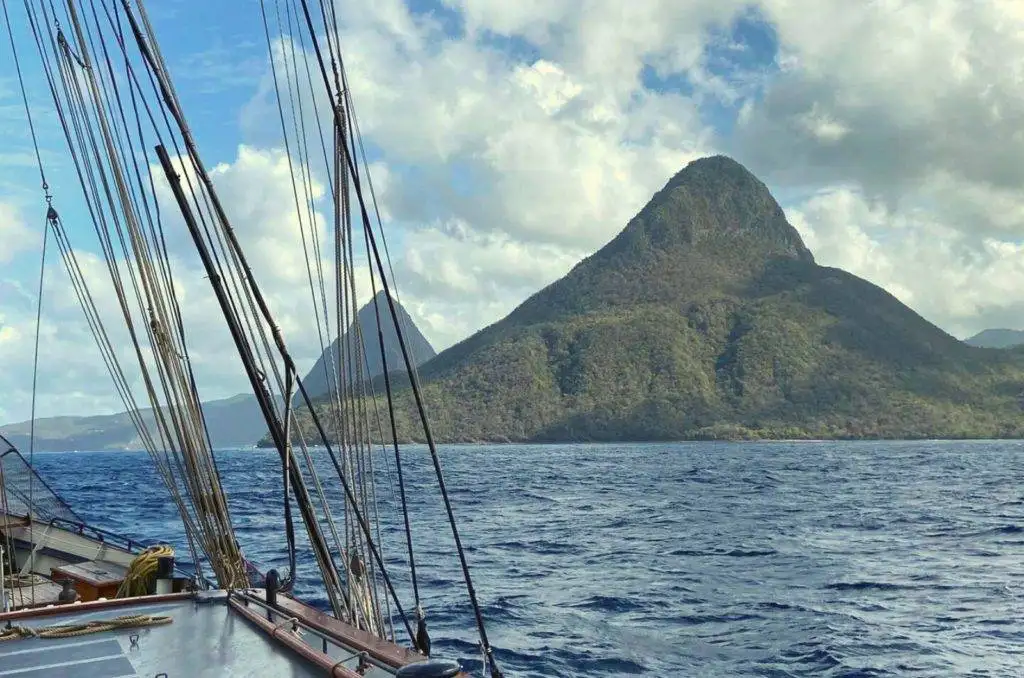

Background story
Suzanne: “When I started looking into travel by sail, seven years ago now, I had no idea about sailing and I didn’t have connections in sailing either. I struggled to find out how to get into travelling by sail, safely, with little budget and experience, and as I went on I struggled finding ‘my kind’ of people, those purpose and adventure driven wild souls looking for adventure, action and making a positive impact.
For a few years I lived more at sea than land, ‘crewing/hitchhiking’ on about 50 different boats. Good, bad, and priceless experiences. If I learned one thing, it’s the people who make the experience, happy, safe, and meaningful! Caribbean sailing trips are what you make it. On these voyages we walk the extra mile to discover the pure essence of the Caribbean.
I wrote a book about travelling by sail (Ocean Nomad). And as I couldn’t find my tribe and value-matching vessels, I created it, into what’s now the Ocean Nomads network of which the most fast track ocean nomads lifestyle acceleration are the ocean nomads voyages.
By uniting you, your experiences, connections and stories, at sea, we can reach way further, help more, do more, and be more.
To reach for the stars, we must surround ourselves with likeminded entrepreneurial salty souls, share knowledge, and inspire and cheerleader each other. So much more is possible if we join forces on our journeys. The best, going on a journey together! I wish for you to see for yourself how beautiful the ocean are! And hopefully ignite the superpower within you to take steps into a conscious nomadic life in or near the sea, and give back to the ocean, our playground, our home, our life. The pursuit of a healthy ocean and lifestyle are one and the same. ”
I’m looking forward to personally welcome you on board SV Twister in the Caribbean! (on board until leg 9 at least)
Ocean Nomads Lifestyle Accelerator
With Expedition ON Caribbean, we are sailing across the Caribbean Sea on a classic 36 meter schooner originally built in 1902. We visit almost all the island nations, powered by wind, coconuts and the energy of like minded ocean nomads on board. A hands-on ocean adventure discovering ways to live and travel more simple, wild, and pure.
Experience the ocean nomads lifestyle, get natured, travel remote, explore the unknown, together with an international group of conscious ocean adventurers. Driven by passion and purpose for the love of the ocean.
Jump on board and accelerate your ocean nomads ambitions and lifestyle. With adventure Sailing, Ocean Exploration, Natural Lifestyle, Nomad Community & Ocean Conservation in the mix!

10 percent discount for members! Not a Member yet? Join the tribe! (+70 vessels and 100s of nomads in the network)
“The most unforgettable week. The trip preparation and the crew members turned what would otherwise be an adventure into something a special. I took part in two ocean nomads trips so far. To say it was life changing sounds dramatic but it really was. Being able to share time and experiences with people with different backgrounds but of a similar mindset was incredible. I like to think that I can have and help contribute to a similar experience for myself and others as a member of the Flotilla crew.” – Ben Clipstone
Expedition on impacts the way you approach life, live with nature & love the ocean, we go the extra mile to....
Throughout our expeditions we bring together a unique mix of inspirational individuals talents and knowledge of the group. We release the power from the individual talents and knowledge into the group, for maximum learning experience.
We select participants based on motivation, values, drive, and mindset. For legs of longer than 10 days we additionally interview on the phone to make sure expectations and values are aligned.
Make Ocean Adventure Accessible
No sailing experience is required. We happily teach. We believe that if more people get a chance to experience the ocean and all the magic that comes with it, the ocean wins more hearts. We like for you to see for yourself how beautiful the ocean are. And hopefully ignites a superpower within you to take steps into a conscious nomadic life in or near the sea. Voyages range between 7 days and one month. From offshore sailing to crossing oceans to exploring remote paradise islands. We provide a platform for nature connection, community, research, creation, while going remote.
Prioritize Safety
The ocean deserves our greatest respect. Sailing remotely is an endeavour not to be taken lightly. Teaming up with Twister allows us to combine professionalism, safety, and adventure, impact and community facilitation. After three offshore collaborations, the only thing we broke were 2 plates. Many certificates are obtained and complied with to pass the safety checks and requirements to take people out offshore. We have highly experienced (and qualified) people on board. This comes with a cost but the rewards are priceless. Offshore we keep contact and update relatives about the trip.
“We must go and see for ourselves!”- Jaqcues Yves Cousteau
Our drive: protecting our playground .
Saving the ocean is at the core of the Ocean Nomads community. The Ocean is the heart of the planet. Water covers more than two-thirds of the Earth’s surface. Sea plants, like Posidonia, produce 70 percent of the oxygen we breathe, and the deep waters are home to wildlife and some of the biggest creatures on earth. It provides us with food, jobs, life, entertainment, and sailing! Without it, we cannot survive. We believe that by getting the ocean into people’s heart, one starts caring more accordingly. The best way? To get you out there and have you experience the magic for yourself.
Our Caribbean Sailing Trips Dates & Details
Caribbean sailing trips & exploration voyages '22 '23.
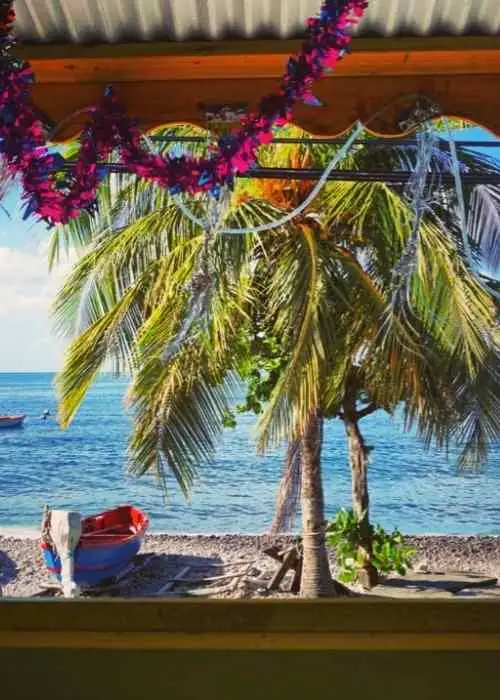
Martinique - Grenada (& Islands in between)
December 21 - 28 7 Days | Euro 1815 (ON Price 1635) FULL
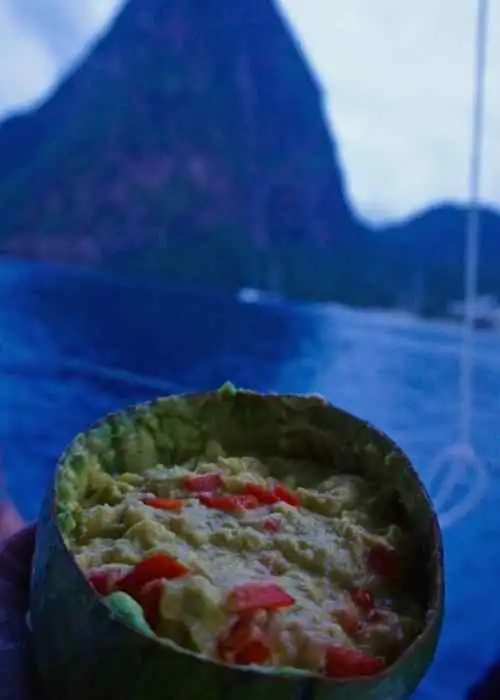
Grenada - Martinique (& Islands in between)
December 28 - January 4 7 Days | Euro 1815 (ON Price 1635)
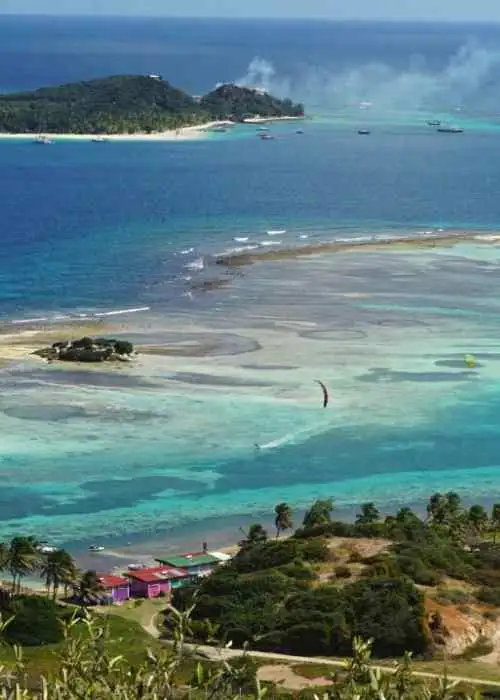
Martinique - Grenadines - Martinique
January 7 - 19 13 Day |Euro 3552 (ON Price 3200)
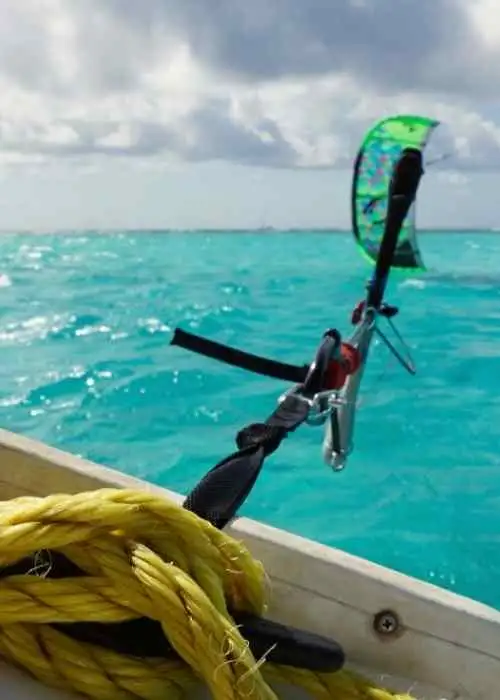
January 21 - Feb 2 13 Days | Euro 3552 (ON Price 3200) FULL
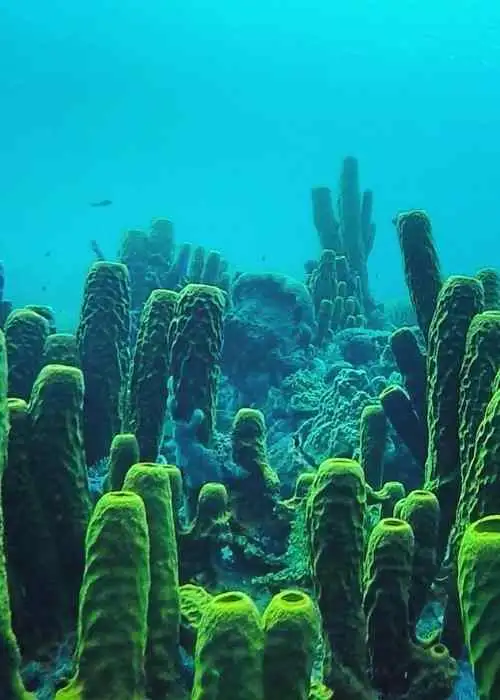
Martinique - Dominica - Guadeloupe
February 4 - 11 7 Days | Euro 1655 (ON Price 1500) FULL
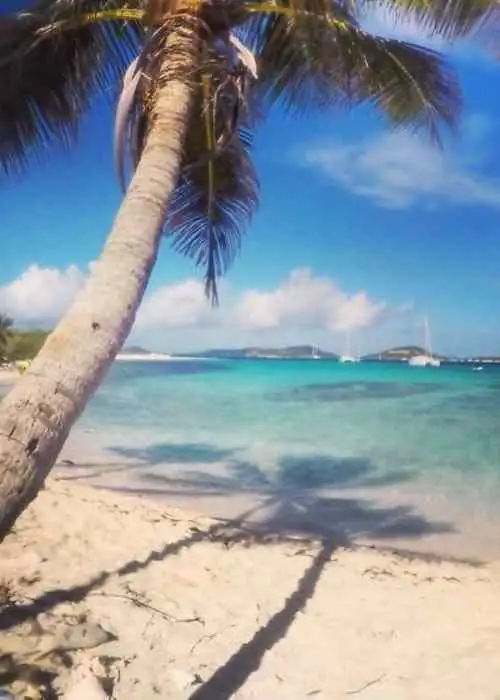
Guadeloupe - Surrounding Islands
February 11-18 7 Days | Euro 1655 (ON Price 1500)
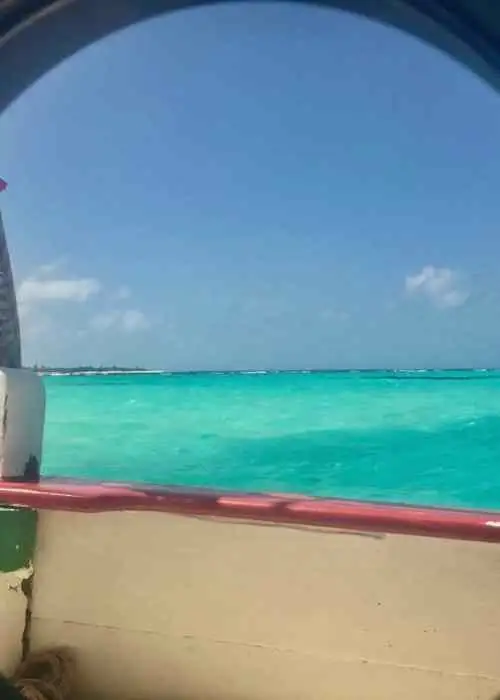
Guadeloupe - Dominica - St. Maarten
February 18-27 10 Days | Euro 2450 (ON Price 2205)
Martinique - St. Maarten
February 28 - March 2 (497 euro) Local & ON discount available

St. Maarten & Islands Exploration
March 4 - 13 9 Days | Euro 1999 (ON Price 1800)
Giving Back
We are merely visitors and we feel it’s our duty to give back, contribute, and support where we can. In addition to cultivating environmental and social consciousness (see trip values further below) to the best we can, for each booking we donate a percentage to a hand-picked local conservation project.
Little Budget?
We created scholarship opportunities for the small budget determined ocean explorers. In collaboration with this ship and the costs that come with it we can’t do a full exchange but we can do discounted prices with skill shares, trades and long term nomads. We love to hear what you have in mind via the Scholarship form. For pure skill sharing and trading, check out our membership community with +300 nomads & +70 vessel members meeting up and teaming up for ocean impact and adventure.
What's included?
- Sailing adventure & nature connection
- A unique and curated mix of adventurous & impact-driven salty souls
- Food and Drinks (Except Alcohol). All trips are vegetarian. We share cooking & cleaning duties.
- Being taught the ropes of the ship & seamanship
- Trip organisation
- Introduction to Freediving AND Kitesurfing on Leg 4-5-6-7-8 Free discovery course by licensed intructors!
- Ocean worthy vessel & safety equipment checked and complying with strict requirements
- Professional qualified and experienced Skipper & Crew
- Accommodation onboard in a shared cabin*
- Custom & Clearance fees, Marina fees, marine park fees (if applicable) and fuel
- Memories for life!
It’s the most luxurious vessel we’ve ever teamed up with. Each cabin has a good size bunk, sink, plug to charge, bed light and window. Cabins are shared with one, two or three fellow Ocean Nomads. You’ll always have your own individual bed.
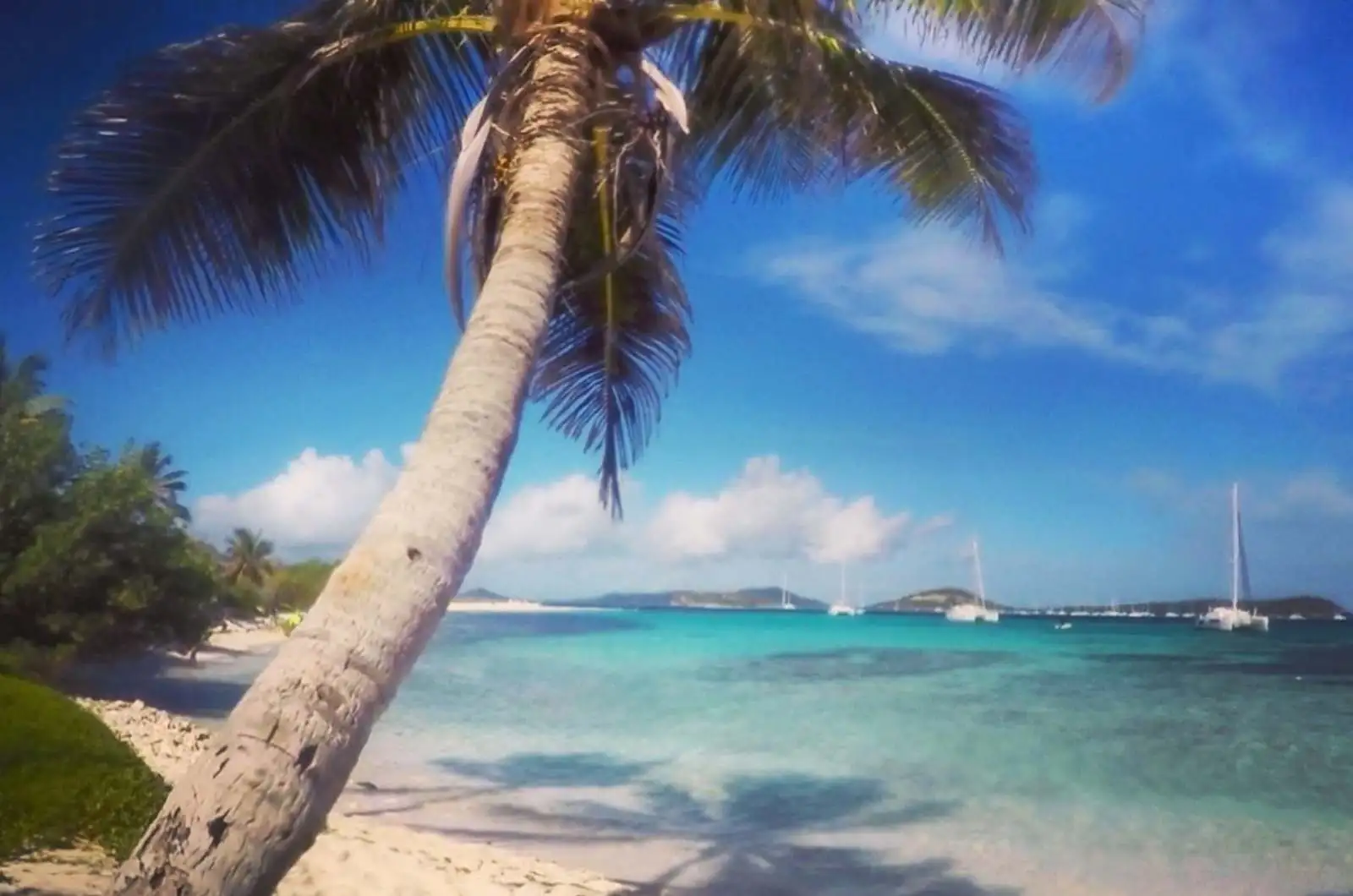
Other costs to bear in mind?
- Transport to and from the boat destination
- Additional nights spent ashore
- Personal travel insurance
- Personal equipment e.g. waterproofs
- Personal expenses ashore
- Ocean Nomads Membership (If not a member yet)
- A valid Passport!
“In my opinion Ocean Nomads sailing adventure are: 1. A reward for the senses by discovering incredibly beautiful places and breathtaking sceneries. 2. An unbeatable way to get introduced into the world of a sailing lifestyle 3. An open window to learn watching our world and the people from another more conscious perspective. I see Suzanne as an inspirational person who, with her example, inspire others with ideas and proposals to define or redefine life projects and use inner energy for more noble purposes. Our oceans need strong committed people like her to advocate for our natural resources and leave them intact for the generations to come.” – Jose Perez
About ocean nomads.
With Ocean Nomads we connect ocean people, vessels, projects, and environmental action to facilitate sailboat travel, adventure, impact, and a nomadic and ocean-conscious way of life.
We’re many out there all on similar journeys, dreaming and doing about ocean adventures and to make a positive impact around us. We have brilliant ideas, projects, and dreams. We desire to experience, to learn, to connect, and to be part of something. We’re looking to connect with others honouring simple and sustainable lifestyles. We are concerned by the state of the planet. We want to make a positive contribution and do our bit. The ocean brings us so much. As fanatic users, we are responsible for bringing life back into the blue. But alone we can only do so much.
Ocean Nomads trips connect people to each other and to the ocean. Nothing brings people together like actually bringing people together. And nothing triggers more than actual experience. We add nature and adventure into the mix, and we have a recipe for creating a big dose of positive energy and accelerating change for a common good. We provide ocean adventure and encourage low-impact travel by sail.
On purpose we don’t plan out everything in detail. We roll with the weather, our intuition and opportunity. With good preparation.
We live up to the Ocean Nomads’ slow sailing philosophy. We strive to have an onboard environment that inspires adventure and play, with a strong emphasis on hands-on action, health, simplicity, local, teamwork, skill sharing, and environmental consciousness.
If not now, then when?
A sailing adventure offshore or between countries is not a straightforward endeavour. To be ready to expect the unexpected, careful selection and preparation for a happy, safe, and meaningful voyage is essential. We are ON it! Expedition ON is a synergetic team-up between SV Twister and Ocean Nomads. SV Twister allows us to safely and responsibly organize adventures offshore. The beauty of a vessel this size allows us to connect more salty souls in one place, away from civilization where we disconnect from everything but each other and nature. These are hands-on active expeditions, with next level participation in the offshore legs. We have a professional captain and crew who’ll be showing us the ropes. Everyone on board is expected to take part in the running of the ship. It’s part of the fun, experience, development and epiphany moment creation. That said, we’ll be many hands on board so there’ll be plenty of room to chill, relax and simply BE.
You can join on or more legs.
If you ever dreamed about sailing an ocean, visiting remote tropical islands or just an experience like nothing else, this could be it!
“The sailing with such a beautiful ship. It is absolutely breathtaking to sail a tall ship and minimize the use of the motor as much as possible.” – Marc Expedition ON 2021
Trip Values & Expectations
ADVENTURE | Depending on the destination, the trip includes action, outdoors, play and fun. Our offshore we sail non-stop with everyone being involved in the watches. We do our best to include some hiking or snorkeling (either offshore at 1000s meter deep and/or in an epic anchorage on arrival). On our coastal trips days include a mix of sailing, jumping in the sea, snorkelling, exploring islands, finding treasures, hiking, SUPping/ We try to avoid marinas, so we can be closer to nature.
SPONTANEITY | We run our trips rather spontaneously on purpose. We’re dependent on the weather. We go with the flow, and we may change course to explore what we find on the way. We embrace the art of getting lost. We don’t plan out our routes into detail. On purpose.
SAILING | You don’t need sailing experience. Captains we work with are professionally qualified and teach you the basics, helping you become a competent crew member – or building upon any existing skills you do have. We can sign off miles and give you a reference if you need one. We take care of onboard duties as a group.
COSTS | As opposed to other trips we have organized, this expedition has food included in the trip price.
VESSELS | We work with local and sustainably-minded charter companies. This Expedition we work with a vessel of more than 100 years old and still sailing the oceans! It can’t get more sustainable than maintaining that what is already built.
IMPACT | We share adventure and relaxation time, as well as thoughts, tips and ideas about how we can live more simply and sustainably, whilst exploring the natural world. No one of us has the answer, but together we do have. Connection and conversation at sea go deeper in one day than months on land.
LOCAL | We aim to team up as much with locals to learn the best we can about the local situation. Working with a local partner comes with different habits, customs, awareness levels and cultural backgrounds. We stay open and look beyond our ‘eco-bubble’ to plot better routes for positive change.
CONSERVATION | We aim to give back to the best we can when visiting the places we visit through spending local, leaving places cleaner than we find them and learn and engage with the local community. Also, for each booking of this trip Ocean Nomads donates 50 euro into a local conservation project.
GETTING THERE | We are aware that many need to fly to join one of our trips, and encourage transport options such as train, bus, ferry and car sharing. We’re actively looking for the best ways to maximize our positive and minimize our negative impact. We recommend booking only one way ticket. You won’t be the first ocean nomads joining a trip, and just keep on going… 🙂
ENVIRONMENT | We do what we can to minimize our environmental impact. We sail as much as we can and use the motor as little as possible. Preparation and doing your part is key. And we encourage and welcome your ideas, tools and tricks on improving our positive footprint.
PROVISIONING | Collectively we take care of the provisioning and cooking. It’s part of the fun! We don’t organize luxury cruises. We aim to provision as locally as possible, and minimize plastic use. Our trips are vegetarian (fish and meat-free), with occasional opportunities to eat ashore if you struggle with this. We use less freshwater and power than the average sailboat charter. We share thoughts, ideas, and knowledge on no-fridge food preservation, eco-friendly sailboat maintenance, and other positive solutions.
PEOPLE | We make our gathering big enough to guarantee a wonderful mix of inspiring souls, but small enough to drop anchor in the middle of nature. Participants usually don’t know each other, but after days of shared adventure and collaboration, new friendships are made. Many of our previous nomads come back again and again. Ocean Nomads come from all walks of life; we put a lot of effort in creating a diverse mix of people, so that we can learn from each other and pass on inspiration & ideas. Many trip alumni and members have since teamed up for more adventure and impact projects.
TEAMWORK | Sailing is an active way of travel that needs teamwork. We share the tasks, operation, and sailing of the boat. We provision, cook, sail, fix things (if necessary) together as a team. Our trips are not a laid back luxury experience. Hands-on participation creates the adventure, and helps you learn to be a better sailor.
HEALTH | We can only do good if we feel good. Our trips have elements of yoga, breathwork / freedive clinics, healthy and local food provisioning, and lots of outdoor action and adventure. Powered by YOU, our members and crew.
PEACE | Our trips are not a party experience. We value the mornings and like to maximize daylight for exploring and connecting to nature. Drinking a lot of alcohol ruins this experience and has no place on our trips. We operate a strict no alcohol at sea policy.
ADAPTATION | Boats rock and make noise. Boats are small. People snore. Weather rules. We have limited resources. Adaptability is key.
ACCESSIBILITY | We know a trip like this is not within financial reach for everyone. It costs considerable money to make this expedition real, in most safe way. But where resources allow we facilitate scholarship opportunities to make an adventure like this accessible for the driven on a budget ones.
Learning by doing, that’s what we strive for. Here are some of the skills you develop on our trips:
SAILING | You’ll learn hands-on everything to become a competent crew member. By the end of the journey you can sail the ship. Our skippers and often also fellow crew members are happy to share and show what to know.
SEAMANSHIP | Huge part of happy, safe and meaningful ocean nomadic living depends on your seamanship skills. You can have the biggest bank account but once you’re at sea nothing can be googled or bought. And no person can be hired to fix something. You have to be inventive as situations arise and you’ll learn from experiences along the way. You’ll learn to work with your hands. You learn about the wind, the weather, geography, stars, navigation, sea life, boats, yourself, people, and much more.
CONSCIOUS LIVING | Experience resourcefulness. And how you can implement it all into your life. As sailors, we are intricately connected to the ocean on a daily basis. Experiencing sea time daily provides a deep and lasting respect for nature. You’re dependent on it. You experience the power of the wind and the waves, and realise how precious our resources are, such as water, fresh air, power, and fresh vegetables. You will become aware that what might be considered normal ‘back home’, is not so normal on a boat.
The luxuries of living on land: sitting up straight in your bed in the morning, taking a shower lasting more than ten seconds, pouring a coffee of that doesn’t spill, flushing a toilet, a fresh apple in a fruit bowl, sleeping on a bed that doesn’t move, food that stays on the stove, power plugs, getting through your morning routine without four new bruises, doing dishes with warm water, walking more than ten metres, friends to talk to, WiFi, and so much more. All the things we take for granted on land become priceless when you have experienced life without them.
Sailing makes you a conscious consumer and a more grateful person for every little luxury thing. With limited storage and cooling, food sharing, and adaptation, you have to think about every item you bring on board and why. After a sailing experience you will appreciate every drop of water, fresh fruit or vegetable and a good night of sleep even more.
NATURE AWARENESS| Most of us spend more time indoors than outdoors. It’s easy to forget the natural world we’re coming from and living in. On the ocean, you face the wind and water elements and find that connection to nature. Imagine a scene with no traffic, no news, no pollution, no civilisation. Just wind and water – plenty of that! A scene where you can gaze for hours to the millions of stars above you; enjoy the dozens of dolphins sliding through the water at the bow of the boat; admire the pink-orange-red sunrises and sunsets, without any airplane trails changing the fluffy and cauliflower-like cloud patterns.
By being disconnected from everything but nature, you’ll learn a great deal about the ocean. When you see the good, bad and ugly with your own eyes, talk face-to-face with people living on and for the ocean, and experience its value, it makes you eager to learn more, do more, be more, and likely Live more: At sea.
You’ll become very aware of the natural world around you. This inspires. And it’s eye-opening. You come to realise how disconnected from nature we are in our daily lives. In the middle of nature, far away from civilisation, you will see human impact. Usually we’re far away. It’s hard to make it tangible. It doesn’t really affect us. Or so we think. But by being out there, you literally broaden your horizon. Experience will make you think, gain fresh perspectives, and may inspire you to act to turn the tide of the ocean challenges.
We share tips & tools, helping accelerate personal journeys to alternative adventurous conscious life on or near the sea.
Ocean nomads adventures are not just a one time thing you join for a week or two and that’s it. These are experiences that change the way you approach life, nature and the ocean. We believe our trips are just the beginning for plotting the next course in your life. By jumping on board this, you also join our expanding global network of impact-driven travellers, ocean entrepreneurs, sailors, (free)divers, surfers, and active salty souls passionate about the ocean and eager to do good. On our community HUB we continue the conversation, action, team-ups and meet-ups beyond our events and expeditions to maximize the impact, fun, and ripple effects for ocean adventure and action. We got your back before and after the trip.
We used to have an image in our head that sailing is only for rich people, that it’s about showing off boats and boat toys, and that as crew you’re just meant to scrub the deck. Not true. Sailors are free spirits and ocean-minded people. Most of us share the same dream to live a simple life on a sailboat, set off to explore the world, and live life on their own terms. We unite and exchanges ideas to make this dream happen! We connect with fellow nomads that are on the same mission. Who knows who you may meet during these adventures and what opportunities may come from it?
ocean Sports
Sailing Vessel Twister is a ship of +100 years that still sails the oceans, safely! Isn’t that amazing in itself? No plastic push buttons or winches on this vessel.
She’s beautiful. She’s solid. She’s big. She’s spacious. She’s super comfortable. She’s got soul. She lasts. She has proven her worth and seaworthiness.
Sailing ship Twister is a schooner built in 1902, with an impressive story to tell. Originally a fishing boat built out of wood, fifty-five years later, her wooden hull was replaced for a steel one so she could continue to fish. She now features all safety equipment, modern comforts, and all licenses and certificates to take you safely offshore. She sails under the highly regarded Dutch flag.
Her current owners are driven to sail her far, and with purpose. The aim is to facilitate memorable expeditions that people will treasure for life, and contribute towards a better planet.
Last season she we sailed with her offshore, conditions ranging between champagne sailing and 9 Beaufort, totalling 5000 NM. The only thing we broke were two plates. Given the success of last expedition we now go all in and all around the Atlantic!
The size of the ship allows us to bring more people together in a place. Through Twister we can have you experience international sailing as safely as possible. Twister focuses on safety and seamanship competence. Ocean Nomads on the community, content, and organization. Many certificates are obtained and complied with to pass the safety checks and requirements. This comes with a cost but the rewards are priceless. Teaming up with Twister allows us to combine professionalism, safety, and adventure, impact and community facilitation.
About the VEssel
Home port : Harlingen, Holland
Year built : 1902
Displacement : 88 tonnes
Length overall : 36m/118′
Draft : 2.8m/9’2″ Beam : 6.2m/20’3″ Rig : Schooner
Sail area : 332.5m/1090’8″
Number of sails : 6
Engine : Mercedes Benz 300 PK
Total number of berths : 22
Bathrooms : 2 A Tour of SV Twister:
A few more Benefits of jumping on board with us
Save lots of time and energy on researching boats, safety, captains & crew
We have sailed, worked, hitchhiked with +100 vessels by now. Teaming up with SV Twister is next level authenticity, safety, comfort (think toilet buttons, your own comfortable bed, filtered water, not to mention space on board) and professionalism. We’ve done our first succesfull collaboration with SV Twister last year (see the testimonials). This is sailing in style, hands-on, as safe as we can control. There are very few ocean worthy vessel like her out there taking people offshore (legally), and for this price.
More people, more fun, learning, and impact!
You can sail with 2,3, or 5 people. This is fun. We’ve done it. We’ve organized it. But going on an adventure with around 15 salt souls all as stoked about ocean sailing as you are is next level community living and socializing. Conversations and connections at sea go deeper in one day then in weeks on land. You’ll always find a few souls you get along with well.
SV Twister is 36 meter long. There is lots of space to move, stretch, work out, chill, relax. Below Deck, as well as on deck. There’s a steering hut for cold nights, a lounge room but playing games, reading, and chatting. And big table and space for communal dinner, music nights and other workshops we as a crew team facilitate spontaneous as we we navigate the seas.
Especially for the longer voyages where dropping anchor is not a daily routine, this is priceless. We only have so much patience to sit back and relax, which is kind of mandatory in small vessels,where space is limited.
” This was one of the most epic experiences of my life so far, and I can tell it is just the beginning. The ocean has taught me so many lessons…to embrace all experiences (even seasickness), not worry so much, and just be in the moment. Two weeks without connection to the outside world was absolutely glorious. I feel reset. After a very fragmented life the past few years, being around a crew of 17 people every day was amazing…to interact naturally with each other, feel a part of a family of diverse ages, nationalities and backgrounds…I learned so much from these amazing humans. My heart feels so full.” – Sael
Summary! WHY JOIN?
- Meet your tribe and expand your sailing and ocean people network. Meet a beautiful bunch of adventurous unconventional dream chasers on a mission. Finding a boat is easy, finding a like-minded happy positive vibed team is what makes all the difference. The skills, stories, smiles, and contribution of your fellow curated crew, is what makes the trip like nothing else out there.
- Around 15 fellow crew members to learn from and share with. Not just a few.
- Memorable and impactful moments. The good, the bad, the ugly. From wildlife sightings and sunrise at sea, to cooking up a meal on an angle and spotting plastic at sea.
- Connection to nature. Sailing the ocean is digital detoxing at its best.
- Discover Freediving by a licensed AIDA instructor. + optional next courses on request
- Discover Kitesurfing by a licensed IKO instructor. + optional next courses on request
- Experience arriving into a new country by sail!
- Serious adventure sailing but as safe as we can make it! Mum will be happy.
- Accelerate your personal journey to make the dreams happen. Turn your intentions into actions. Today.
- Expand your worldview, generate fresh energy and insights. You’ll step away from it all and get a dose of fresh perspectives on the world, fellow Ocean Nomads, and yourself.
- Learn about minimizing your environmental footprint and to share what you have learned. Practice new habits and make different lifestyle choices.
- Find and explore and build connections and partnerships to accelerate those dream and impact projects.
- Learn the basics of sailing, navigation, build miles and develop your sailing skills and experience. Hands-on and from other that sail the seas.
- Continuous Support. We got your back before and after the trip by staying in touch and building on what we create on board on our member hub.
- Make the adventure sailing dreams real faster and with long term impact and friendship.
- To sail on a ship of more than 100 years old. It cannot get much more sustainable when it comes to travelling oceans.
Who's Joining?
It’s the people who make the adventure. This is the main message Suzanne learned after having sailed 30.000 miles on +50 different boats. We carefully curate a diverse, multi-skilled crew who share a similar mindset, to create a powerful team mix. It makes the difference.
We live beyond the status quo or desire to do so. We care for the planet. Minimize, simplify and cut down on our environmental footprint where we can. We lift each other up and support each other when in need.

OCEAN NOMADS EXPEDITION LEADER
Every leg an Ocean Nomads expedition leader will be on board, representing the Ocean Nomads values and to make sure you get the most out of this trip. Most of them are Trip Alumni who previously joined and never returned. Now shining their light and experience on the journey! Maybe it’ll be you next trip.
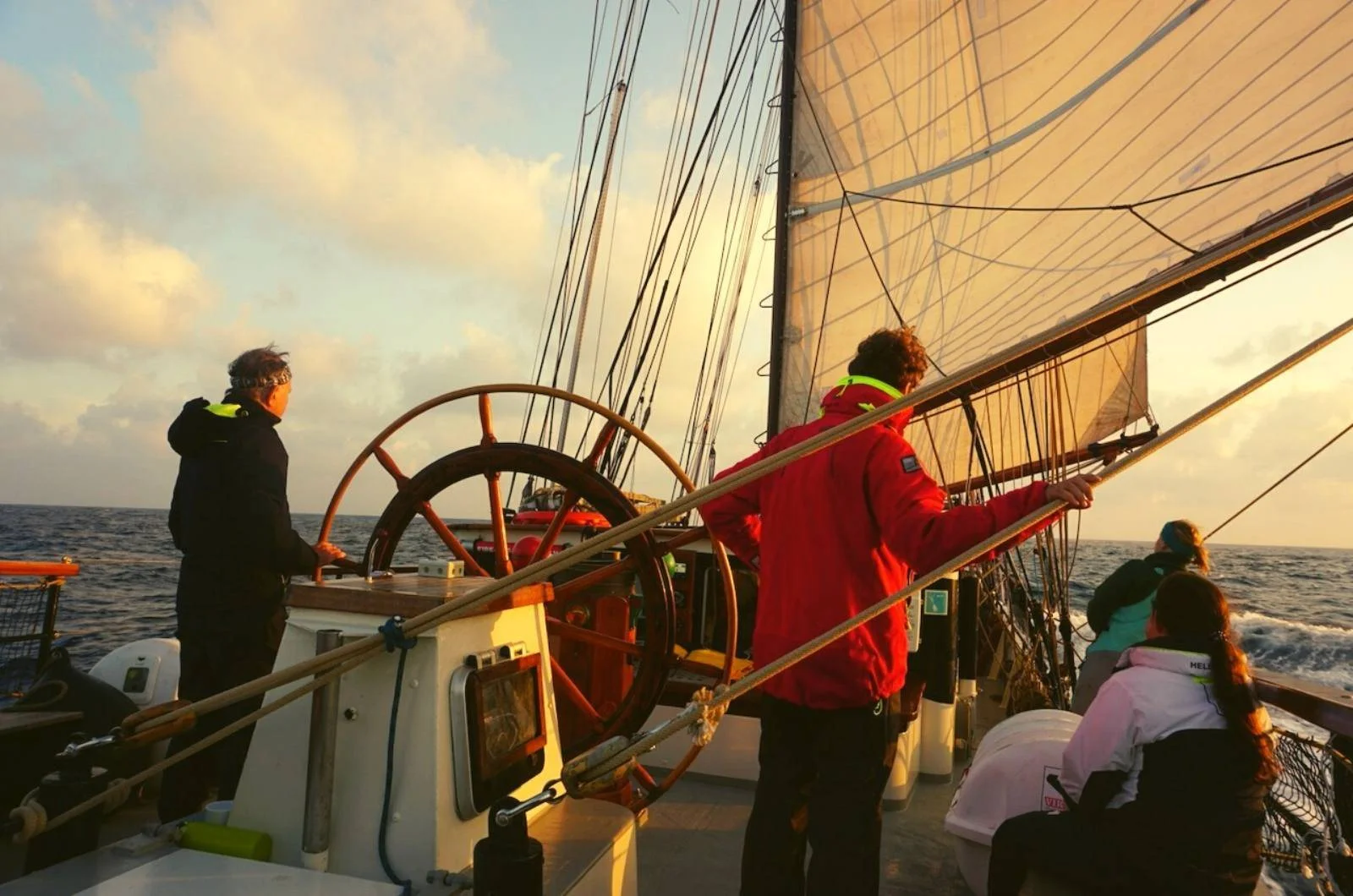
Professional Crew
Twister is managed by a professional crew including a captain, first mate and one or two deckhands. This is required by law on a vessel this size. You’ll be in safe, qualified and experienced hands. This doesn’t mean you only sit back and relax. This is a hands-on voyage involving everyone in sailing, operation, and watchkeeping of the ship.
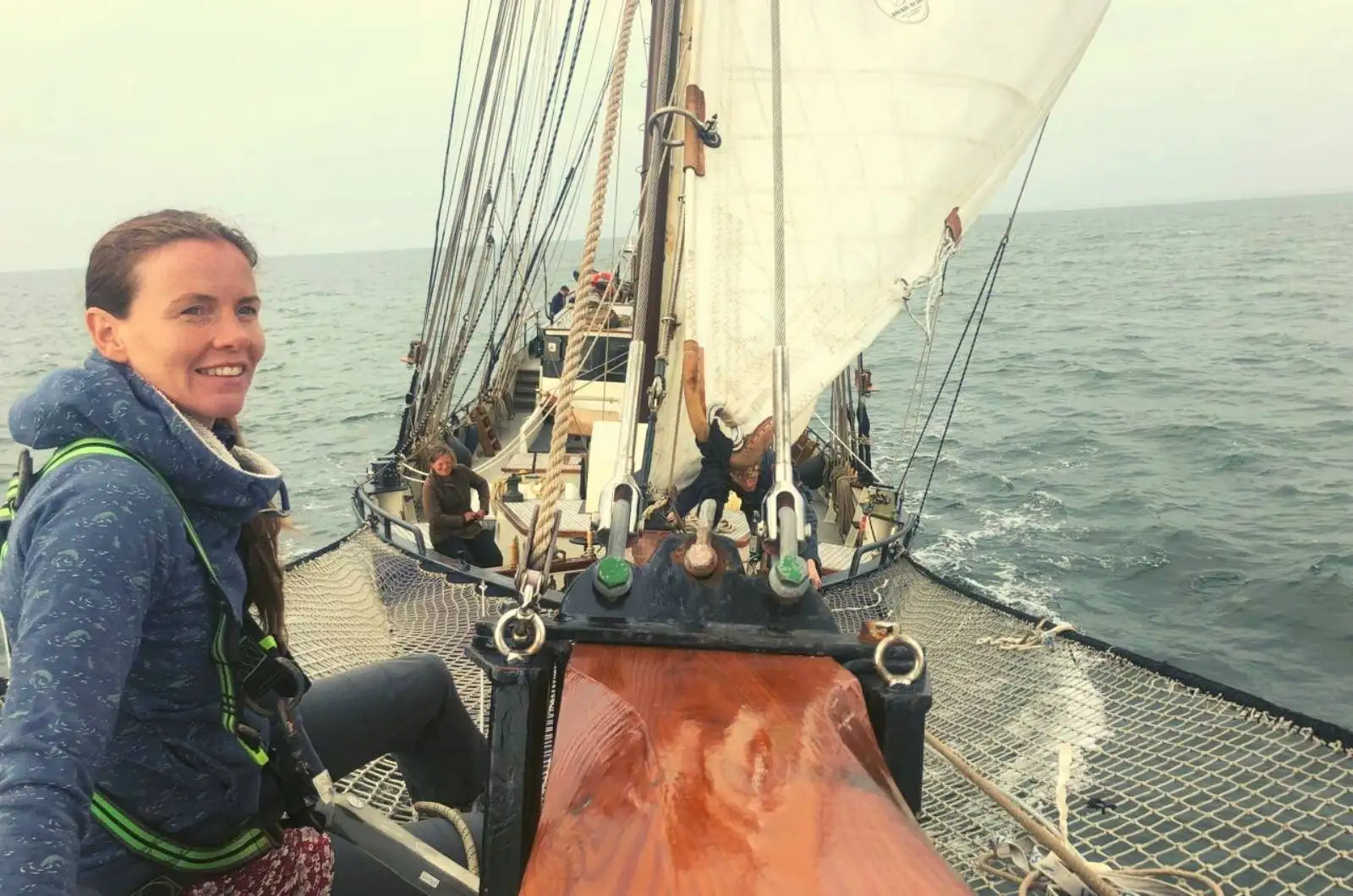
Adventurer & explorer
Alternative lifestyle seeker
Striving to do good
Excited to share skills and stories
Eager to learn, share and care
Hands-on mindset
Saying Hell Yeah that’s me when reading more about our community
Your Caribbean ON Expedition Leaders
Suzanne van der veeken.
Ocean Nomad, Adventurer, Captain & Freedive Instructor
Hi! My name is Suzanne and I’m super excited to sail across the Atlantic and Caribbean with YOU, Ocean Nomads! A little about me. Half my time on this planet, I’ve been living a nomadic ocean minded lifestyle, navigating ocean and coastlines by sail, van, surf and mermaid fins. I hitchhiked 30.000 miles on sailboats and now slow travel coastlines living in my van. I wrote the Atlantic ocean travel guide Ocean Nomad and founder of the Ocean Nomads community. The mission: Connecting you to ocean, and to cultivate and encourage a simple, natural, conscious way of life. I’ve spent some winters in the Caribbean before, and I can’t wait to share this magic with you! I’ll be happily introducing you to all I have learned in those +15 years on nomad life, introducing you to freediving, boathitchhiking and more.
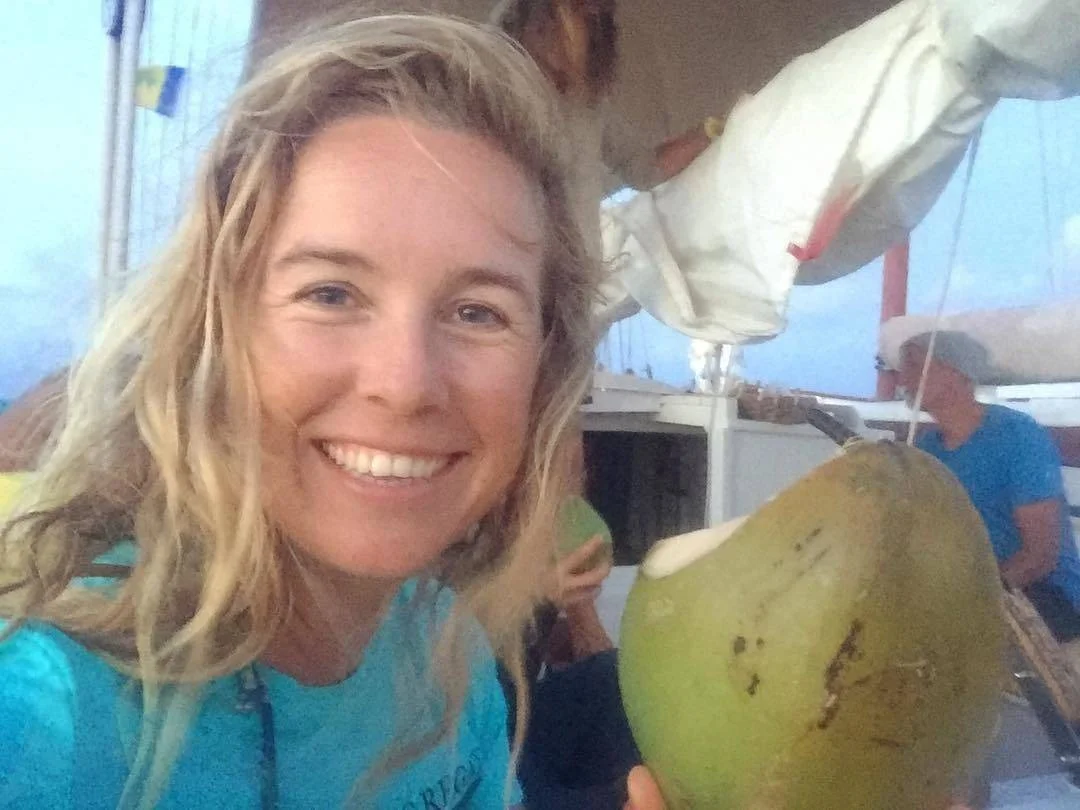
Brianna Brady
Ocean Nomad, Live Aboard & Realizer of the dreams!
According to my mom, I swam before I could walk… I will take her word for it. I just spent my first winter outside the USA surfing, sailing, RVing, hiking/hitchhiking, and connecting with other Nomads along the way and I AM NEVER LOOKING BACK.
My main goal as Community Co-Captain is to connect fellow nomads and help facilitate opportunities in all things sailing, environmental awareness, ocean sports and adventure, the way others have helped me.
Brianna is Ocean Nomads Community Captain and will be welcoming you in Martinique – Dominica – Guadeloupe.

Jonatan Bjorkman
Advanced Hitchhiker, Long Distance Hiker, Full time Vanlifer, Banana Pancake Professional
Hello fellow nature vagabonds! I couldn’t be more excited to partaken in such a great adventure and life experience on a sailboat with a great bunch of you ON.
My name is Jonatan and I’m from an island in Sweden. Travelling and being on the road without knowing what tomorrow brings has been in my DNA most likely since birth. Still don’t know from whom but things like cultural exchange, hitchhiking, vanlife, hiking, diving, skiing, kitesurfing, freedive, surfing to name a few has brought me to the most wonderful places and meetings in my life. And it’s just the meetings and the sharing thru life story’s that has been the most memorable thing. We know that Caribbean going to be amazing but I together with you will create wonderful memories together.
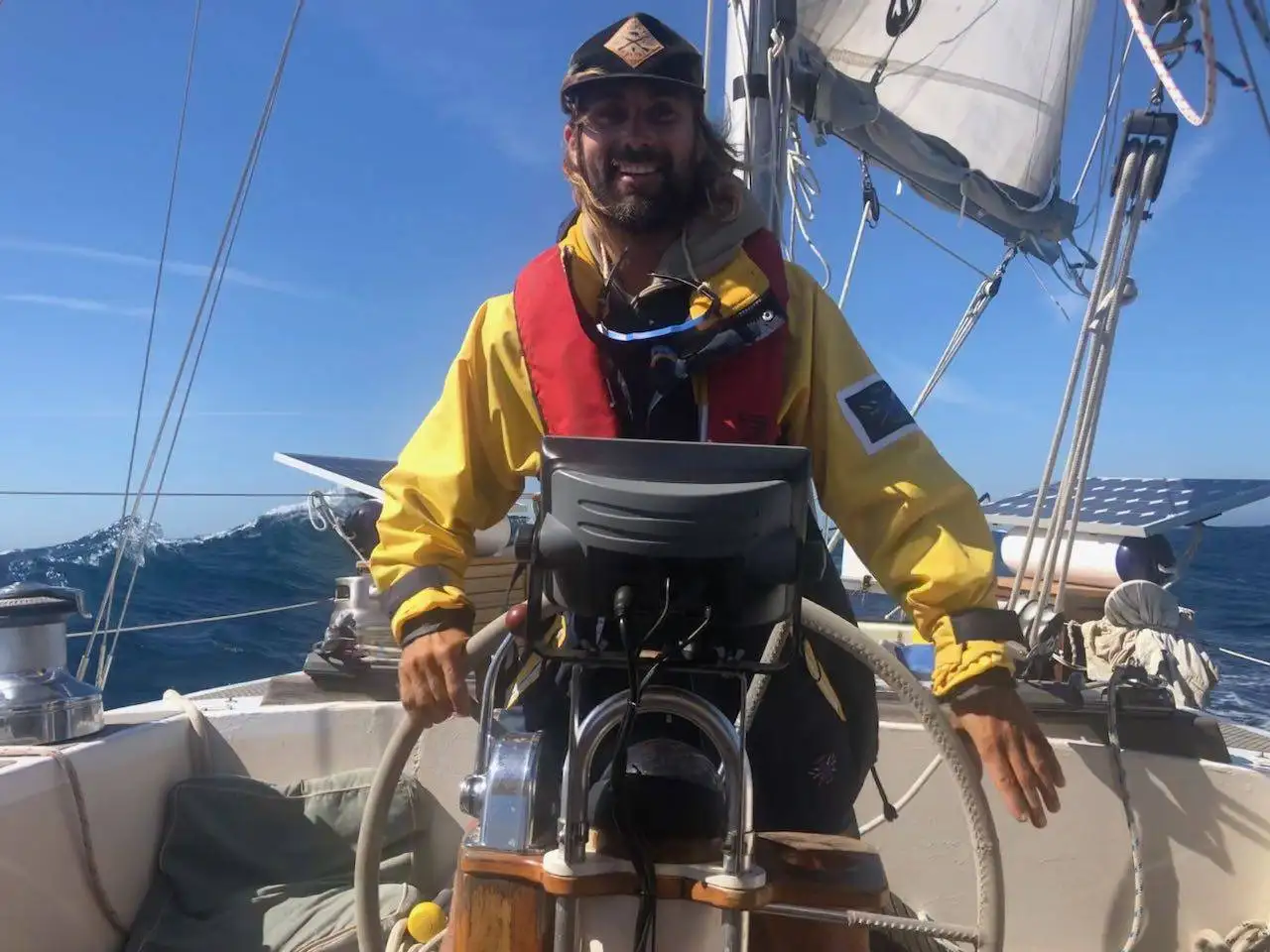
“The things I like the most about trips with Ocean Nomads is the mix of different nationalities, ages and levels of experience. With these trips, there’s always a general plan but also plenty of opportunity for spontaneity to have a real adventure!” – Louise Agren Croatia 2019 & Madeira-Canary Islands 20 21
Discounts & Memberperks
Now is the time.
Ocean Nomads members receive 10 percent discount on the Expedition Investment.
An extra 5 percent discount applies when joining 2 Legs An extra 10 percent discount applies when joining 3 or more Legs.
We create some scholarship opportunities for limited budget determined ocean explorers.
In collaboration with this ship and the costs that come with it we can’t do a full exchange but we can do discounted prices with skill shares and trades. We love to hear what you have in mind via the Scholarship form.
Ocean Nomads Trips have always sold out. We have limited spots. Now is the time.
Not a member yet? Join the network now to have priority access to application handling and to claim your 10 percent trip discount this august.
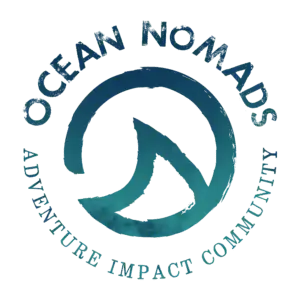
Are you ready to be part of THE EXPEDITION crew?
We’d love that. Be aware. Especially the offshore sailing trips are not for the faint hearted. These can be serious ocean adventures and we want to be sure you’re ready and confident to join.
The biggest value is in having a crew mix on board with similar mindsets and missions but different background and stories. We don’t just accept any booking to fill up a boat. Apply to join so we can learn more about you and make sure we’re all on the same page, and have a happy, safe, and meaningful experience accordingly.
Questions? Explore the Frequently Asked Questions!
What does previous ocean nomads crew say.
Still smiling at the memories! Met – and still talking to – some lovely people. Refreshed my nautical skills (helming, navigation, astro identification, etc.) Shared some great experiences through conversation, music, stories, yoga, cooking together, seeing ocean wildlife, and so much more!
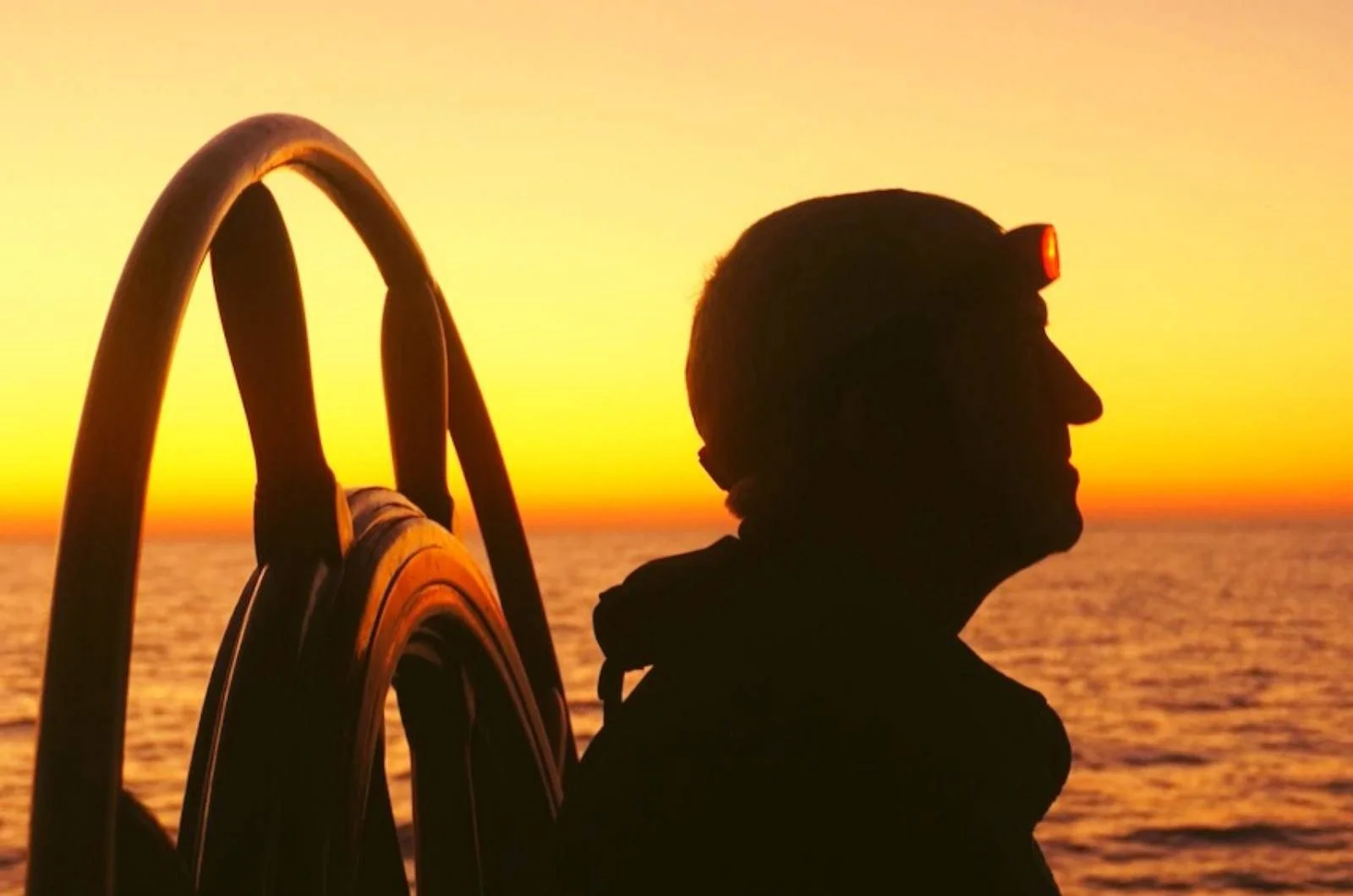
Expedition ON '21
"The experience on twister with other Ocean Nomads was just really beautiful and I felt connected for the first time in decades, I felt part of a community and had companionship. I was so happy that it’s so all inclusive of gender race religion nationality and most importantly age. It has connected me with like-minded people of all ages and being very transformational personally because my life has been incredibly isolated as a single parent Who works from home. I can honestly say October and November I felt happy and free for the first time in maybe 22 years. It gave me everything I was looking for. It has opened up so many possibilities to meet new people with similar vibes, including connection, companionship, purpose and being one with nature."
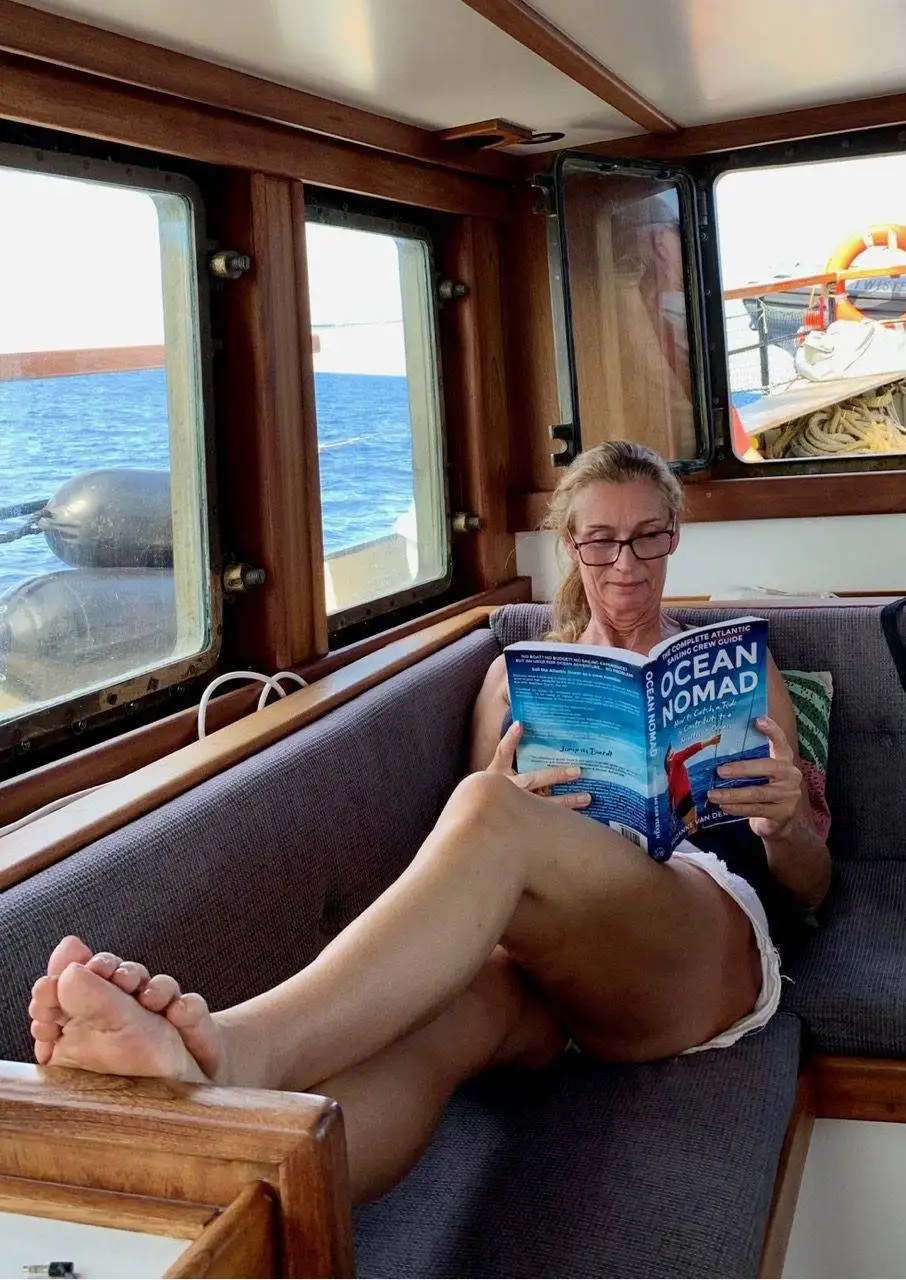
“In my opinion Ocean Nomads sailing adventure are: 1. A reward for the senses by discovering incredibly beautiful places and breathtaking sceneries. 2. An unbeatable way to get introduced into the nice world of sailing, 3. An open window to learn watching our world and the people from another more conscious perspective. I see Suzanne as an inspirational person who, with her example, inspire others with ideas and proposals to define or redefine life projects and use inner energy for more noble purposes. Our oceans need strong committed people like her to advocate for our natural resources and leave them intact for the generations to come.”

Jose Maria Perez
Sicily 2018
"The sailing with such a beautiful ship. It is absolutely breathtaking to sail a tall ship and minimize the use of the motor as much as possible.
I joined the Twister Expedition to share my knowledge as a marine scientist studying cetaceans. I look at the sea a little differently than most sailors do, so it is beautiful to be able to share this knowledge and viewpoint since I believe science is not only for scientists.
There are many things that sailors and Ocean Nomads can do to help as citizen scientists.
Small tasks such as collecting data on cetaceans (Whales and Dolphins) on a sail can have a large impact in the management and conservation of species.
Expedition ON 2021
"It’s amazing how many awesome friends you can make, and how much just one week on an ON trip can change your life"
Canary Islands '19
“Good sailing experience that makes me feel more confident on open seas. Made good connections to nice people and got valuable insights for my master plan.”
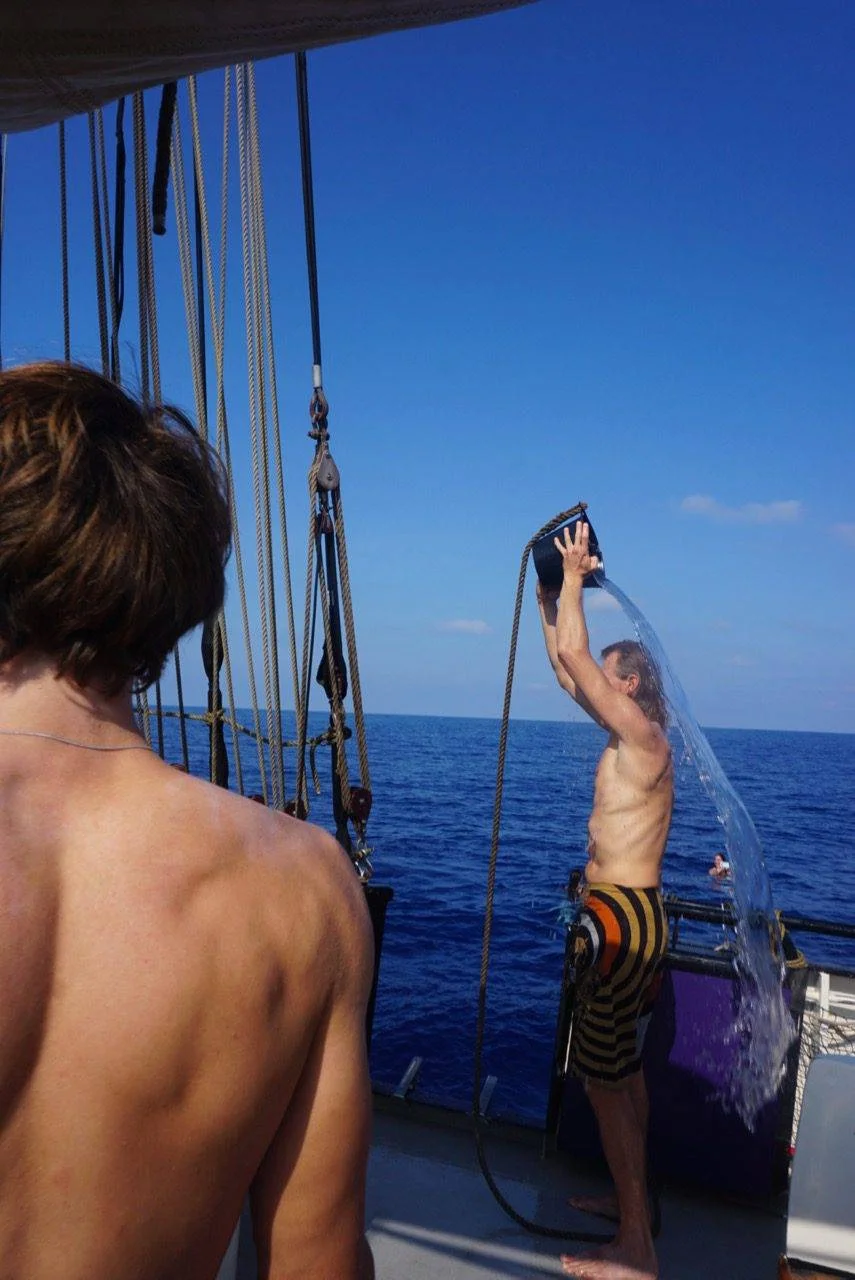
This was one of the most epic experiences of my life so far, and I can tell it is just the beginning. The ocean has taught me so many lessons…to embrace all experiences (even seasickness), not worry so much, and just be in the moment. Two weeks without connection to the outside world was absolutely glorious. I feel reset. After a very fragmented life the past few years, being around a crew of 17 people every day was amazing…to interact naturally with each other, feel a part of a family of diverse ages, nationalities and backgrounds…I learned so much from these amazing humans. My heart feels so full.”
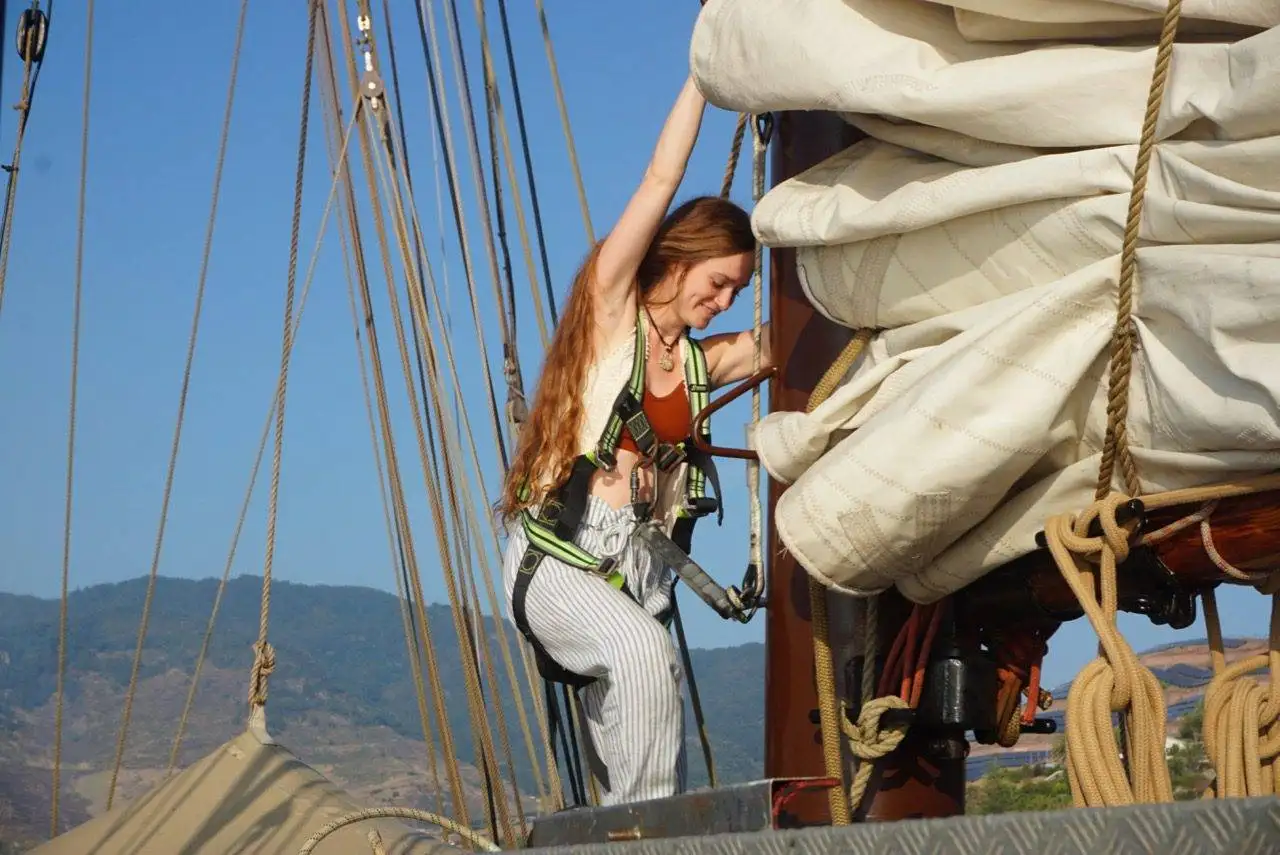
Galicia '21
The most unforgettable week. The trip preparation and the crew members turned what would otherwise be an adventure into something a bit more special. I took part in two ocean nomads trips so far. To say it was life changing sounds dramatic but it really was. Being able to share time and experiences with people with different backgrounds but of a similar mindset was incredible. I like to think that I can have and help contribute to a similar experience for myself and others as a member of the Flotilla crew.”
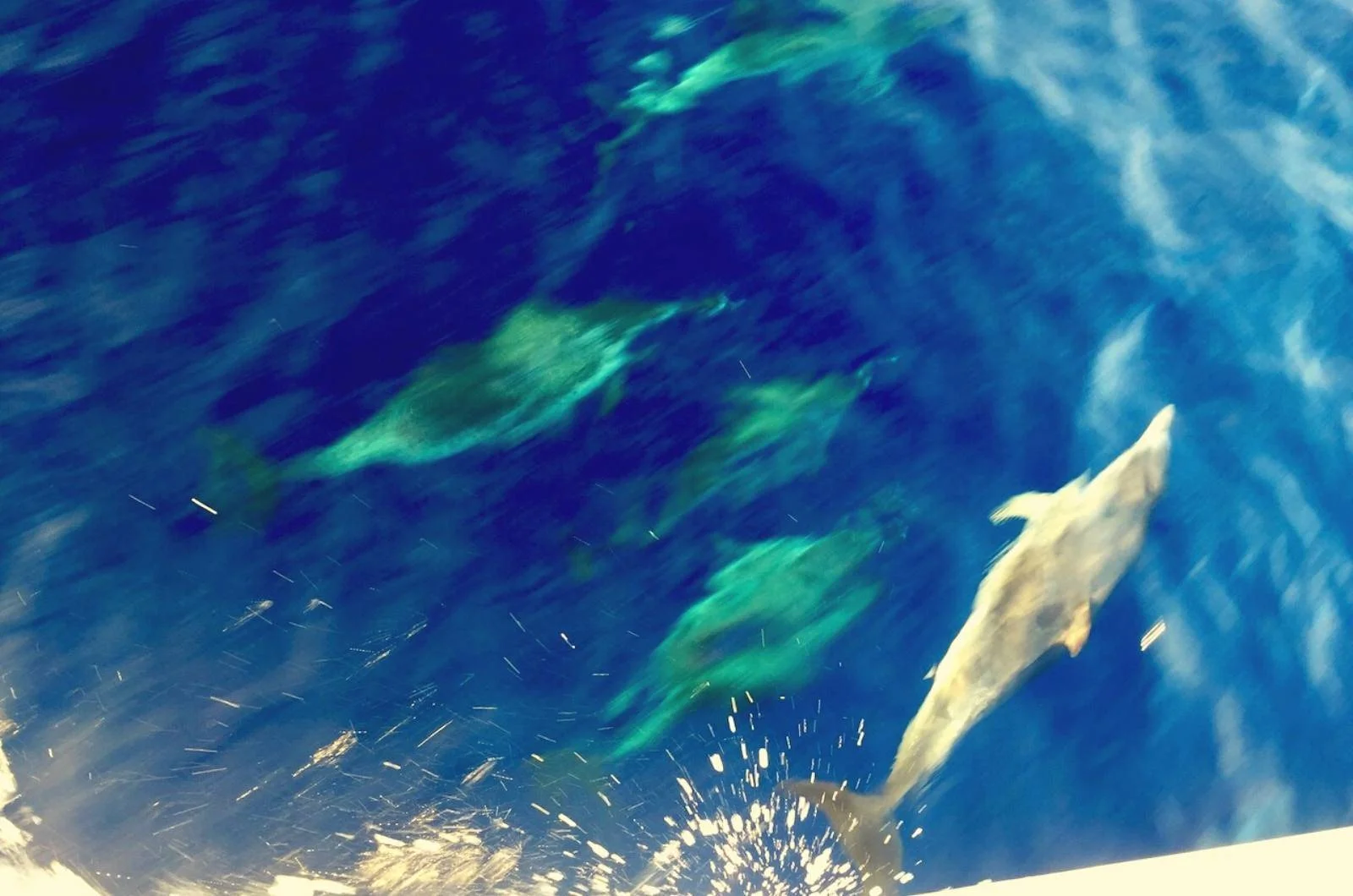
Ben Clipstone
ON Lanzarote & Galicia
“The things I like the most about trips with Ocean Nomads is the mix of different nationalities, ages and levels of experience. With these trips, there’s always a general plan but also plenty of opportunity for spontaneity to have a real adventure!”
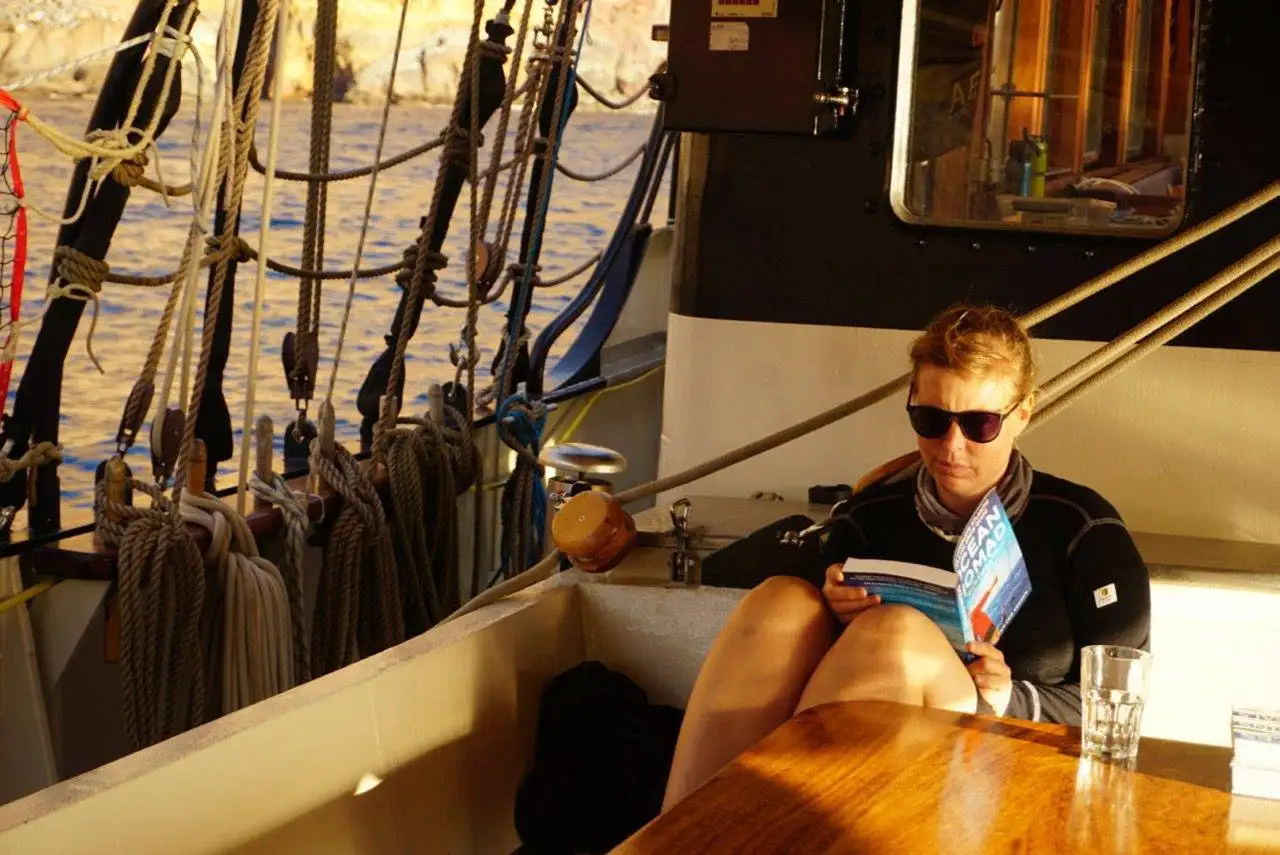
Louise Agren
Croatia 2019 & Madeira-Canary Islands 2021
Connect with trip alumni & other ocean adventurers on our member network
“During my interview call with Suzanne for ExpeditionON with Twister last summer, I immediately knew I wanted to join the Ocean Nomads network and sailing adventure. Her energy and values were exactly what I was looking for and I could NOT wait to get onboard and meet everyone. As soon as I hung up the phone I thought to myself “This trip is going to change my life”…. and it sure did. So I packed up my life into a duffle bag a few months later, boarded Twister in Madeira and set sail towards The Canary Islands. Long story short, after I hopped on Twister and sailed off into the sunset, I was surrounded by amazing people and had the complete feeling of freedom I had hoped for. With little convincing from fellow ON members during one of the monthly meetups, I also decided to take their advice and spend the winter in the canaries. This included…renting a caravan with fellow Nomad Cay, sailing on Bluepearl with Captain Wolfgang , Thomas, Robert, Kyra, and meeting Jacky, Eoin, Luca, Sael and of course Suzanne. My lifelong dream has been to spend time outside of the US, explore different places, meet , new people and just live somewhere different than what I grew up with. If you told me this time last year that I would have spent the better part the last 365 days sailing around The Canary Islands,surfing in Ireland, sleeping in a van ALONE in England and writing this newsletter on an island in the Adriatic Sea, I would have rolled my eyes at you. But after joining Ocean Nomads a little over a year ago my life has done a complete 180° ( in the best way possible) and I have the network and so many of you to thank for that! – Brianna
Connect to Nature
Most of us spend more time indoors than outdoors. It’s easy to forget the natural world we’re coming from and living in. On the ocean, you face the wind and water elements and find that connection to nature. Imagine a scene with no traffic, no news, no pollution, no civilisation. Just wind and water – plenty of that! A scene where you can gaze for hours to the millions of stars above you; enjoy the dozens of dolphins sliding through the water at the bow of the boat; admire the pink-orange-red sunrises and sunsets, without any airplane trails changing the fluffy and cauliflower-like cloud patterns.
We like for you to see for yourself how beautiful the ocean are! And hopefully ignite the supersupower within you to take steps into a conscious nomadic life in or near the sea.
A connected, conscious community is key to accelerating positive change. Through community, we can harness our collective passion for the ocean into solutions for a healthier ocean.

We are a global vagabonding community of impact-driven travellers, sailors, (free)diver, surfers, and active salty souls passionate about the ocean and driven to not settle for anything less we’re capable of living and contributing.
Ocean nomads.
- Member Stories
Expedition ON
- Expedition Overview
- Caribbean Trips
- Frequently Asked Questions
- Application Form
- Collaborate
- Scholarship
Membership Network
- Login / Join

Best Sailing Destinations In The Caribbean

Last Updated by
Daniel Wade
August 30, 2022
The Caribbean is one of the most beautiful and favorable seas to sail, and there are numerous breathtaking islands to visit.
The best sailing destinations in the Caribbean Sea are Puerto Rico, Belize, the Cayman Islands, the U.S. Virgin Islands, Saint Lucia, the British Virgin Islands, Guadeloupe, the Grenadine Islands, Grenada St. Vincent, and Antigua.
In this article, we'll cover ten of the top sailing destinations in the Caribbean region. We'll touch on the destination's history, scenery, and sailing accommodations, along with other attractions unique to the islands.
We sourced the information in this article from travel guides and the testimony of sailors who frequent the Caribbean islands and the Gulf of Mexico.
Table of contents
Sailing in the Caribbean
The Caribbean is a highly popular sailing destination, especially for sailors in the southern and eastern United States. The region is tourist and boat-friendly, and it offers some of the most picturesque islands and coral reefs in the world.
Caribbean sailing promises warm weather and gorgeous water, which is warm enough to swim in year-round. Hurricane season can be a challenge, but the threat is reduced thanks to modern weather technology and careful planning by the sailor.
Here are ten of the best and most beautiful sailing destinations in the Caribbean, along with some of the best attractions to visit.
Top 10 Caribbean Sailing Destinations
We researched the most popular and unique sailing destinations in the Caribbean and found ten countries and island chains that stand out. These locations are accessible to American sailors, and some are U.S. territories that don't require citizens to go through customs.
1. Puerto Rico
Puerto Rico is a U.S. commonwealth located in the northeast of the Caribbean. The island is inhabited by just over three million people, and it's one of the most populous sailing destinations in the region. Puerto Rico is a beautiful island with warm weather and luscious scenery, making it a great destination to sail.
As a populous territory, Puerto Rico has all of the modern infrastructure you'll need. It has full-service marinas, boat repair facilities, and plenty of local spots for food and drink. It's an excellent place to stop for supplies or to spend a week or two. It's one of the most pleasant tropical vacations you can have.
Additionally, Puerto Rico uses the U.S. dollar as its primary currency, so you won't have to deal with currency exchanges and other hassles. U.S. citizens don't need a passport to visit the island, and U.S. flagged sailboats have an easy time finding accommodations. You don't even have to go through customs. However, you will need to bring a U.S.-issued ID card.
Belize is a country in Central America located on the western edge of the Caribbean. The country is known for its tropical forests and sparse population, making it an excellent destination for sailing adventures. Belize is also home to numerous ancient Mayan ruins, which are a major attraction with huge cultural and historical significance.
Belize also has numerous marinas and anchorages, as the country often caters to private boats along its coastline. The coast of Belize offers spectacular views of the ocean floor and marine life, with dozens of natural coves and inlets that serve as ideal anchor-outs.
The natural environment of Belize is stunning, but it's not the only attraction in this tropical region. Belize is home to several well-known resorts and coastal destinations, which offer luxury accommodations, food, drink, and lodging.
3. The Cayman Islands
The Cayman Islands were probably discovered by Christopher Columbus in 1503. The once uninhabited chain of islands, located south of Cuba, offers spectacular sailing and sightseeing. The islands include Little Cayman, Cayman Brac, and Grand Cayman (the largest). Today, the Cayman Islands are a British Commonwealth with about 71,000 inhabitants.
The Cayman Islands are home to spectacular anchorages and an occasionally rocky waterfront, with excellent beaches and marine life. The weather is tropical and warm, and the islands aren't far from the continental United States. Everyone here speaks English, so it's easy to find good accommodations and to socialize.
The Cayman Islands are home to several marinas, charter services, and even a sailing club. The shallow and clear waters surrounding the island make for excellent scuba and snorkeling, and the weather is almost always warm and favorable. Just watch out for hurricanes, which sometimes cross over the island during peak summer months.
4. The U.S. Virgin Islands
The U.S. Virgin Islands is a United States territory officially home to around 100,000 people. Like Puerto Rico, the U.S. Virgin Islands are an easy sailing destination for U.S. citizens. The small chain of tropical Caribbean islands uses the U.S. dollar as its primary currency, and English is the official language.
The islands have a total area of about 133 square miles, making them one of the smaller destinations on our list. The islands are located immediately adjacent to the British Virgin Islands, which are another top sailing destination.
Shallow waters along the coastline make the U.S. Virgin Islands an excellent place to dive, as the region is rife with marine life. There are dozens of smaller islands around the primary islands, which offer opportunities to explore secluded natural destinations.
5. Saint Lucia
Saint Lucia is a Caribbean nation that's known for its beautiful sailing conditions and majestic mountainous islands. The island is also home to luxury resorts and good services, along with protected anchorages for sailboats and yachts.
The official language on the island is French, but most sailing destinations have staff that speak English. The beaches on the islands are some of the best in the world, and the landscape is teeming with tropical plants, brightly colored flowers, and wildlife.
Like most Caribbean sailing destinations, the water around the island has shallow spots that are great for scuba diving and snorkeling. Saint Lucia is an excellent destination for photography due to its unique and iconic rock formations.
6. The British Virgin Islands
The British Virgin Islands are located right next to the U.S. Virgin Islands, and they offer some of the same excellent sailing that the U.S. Virgin Islands offer. This chain of islands is home to about 30,000 people. Sailing is a huge part of life here, and it's the only way to reach many of the most desirable locations.
These small islands are still a commonwealth of the United Kingdom. That means that English is the official language at all British and U.S. Virgin Islands sailing destinations. The official currency is the U.S. dollar, which makes transactions hassle-free for Americans. The islands host an annual regatta which is a great way to make friends from around the world.
The British Virgin Islands have excellent tropical scenery but also numerous coral reefs and rock formations to explore. For example, the Baths of Virgin Gorda are a mystical and popular natural wonder to explore on the islands.
7. Guadeloupe
Located in the Les Saintes archipelago, Guadeloupe is an excellent sailing destination with services and gorgeous spots to anchor out. The island is particularly popular with experienced sailors, and it offers plenty of opportunities to socialize without the crowding of islands that attract more tourists.
Guadeloupe is a French territory with luscious forests and a beautiful coastline to explore. The main island is almost entirely forested, which provides a rare and mostly untouched view of natural tropical life. The largest city, Basse-Terre, is home to the majority of the islands' 395,000 people.
French is the official language on the islands, though many people speak English, and there are facilities for immigration and customs work to be completed. Additionally, since the Island is controlled by France, it's part of the European Union and accepts the euro.
Note that on older charts, the regions of Saint Barthelemy and Saint Martin may be included as part of Guadeloupe, but these regions had a referendum and were detached in 2003. Nonetheless, these nearby destinations make for excellent sailing and exploration.
8. Grenadine Islands
The Grenadines are a world-class sailing destination, with several small islands making up the larger chain. These islands are known for their tropical beauty and seclusion, making them the perfect destination for quiet family trips to the tropics.
Many islands in the Grenadines were once privately-owned but are now uninhabited and rife with stunning scenery.
The rocky Grenadine Islands have numerous reefs and lots of places to anchor out, meaning that the islands can be a fun and affordable place to stay. The island of Carriacou is home to the majority of the population and offers some services to sailboats and other vessels.
9. Grenada St. Vincent
Grenada, a region home to numerous islands, including the Grenadines, is also home to St Vincent. This volcanic island is green and well known for its natural beauty. The capital city Kingstown is home to numerous hang-outs such as bars and restaurants, and it's just one of several seaside towns to explore.
One of the most popular tourist destinations on the island is the Botanic Gardens St. Vincent. The area, which is undergoing constant conservation work, is home to numerous tropical plants and animals, along with colorful and rare island birds.
10. Antigua
Antigua is a flower-shaped island that's known for its rare wildlife and beaches. The island, which has remained mostly isolated for centuries, is home to some of the world's rarest animals, such as the Antiguan Racer snake and the Griswold's Ameiva lizard.
Antigua is an excellent example of the weather and scenery that the Caribbean has to offer. It's a popular destination for sailing and yachting, and there are facilities around the island that cater to sailboats and help owners complete all the travel paperwork.
Antigua is home to a massive regatta that draws hundreds of fast sailboats annually. Antigua Sailing Week is a world-renowned event that's a blast to participate in and watch. During the rest of the year, the island hosts hundreds of boats throughout its many protected coves and inlets.
Related Articles
I've personally had thousands of questions about sailing and sailboats over the years. As I learn and experience sailing, and the community, I share the answers that work and make sense to me, here on Life of Sailing.
by this author
Destinations
Most Recent

What Does "Sailing By The Lee" Mean?
October 3, 2023

The Best Sailing Schools And Programs: Reviews & Ratings
September 26, 2023
Important Legal Info
Lifeofsailing.com is a participant in the Amazon Services LLC Associates Program, an affiliate advertising program designed to provide a means for sites to earn advertising fees by advertising and linking to Amazon. This site also participates in other affiliate programs and is compensated for referring traffic and business to these companies.
Similar Posts

How To Choose The Right Sailing Instructor
August 16, 2023

Best Sailing Destinations In BC
June 28, 2023

Best Sailing Charter Destinations
June 27, 2023
Popular Posts

Best Liveaboard Catamaran Sailboats
December 28, 2023

Can a Novice Sail Around the World?
Elizabeth O'Malley
June 15, 2022

4 Best Electric Outboard Motors

How Long Did It Take The Vikings To Sail To England?

10 Best Sailboat Brands (And Why)
December 20, 2023

7 Best Places To Liveaboard A Sailboat
Get the best sailing content.
Top Rated Posts
Lifeofsailing.com is a participant in the Amazon Services LLC Associates Program, an affiliate advertising program designed to provide a means for sites to earn advertising fees by advertising and linking to Amazon. This site also participates in other affiliate programs and is compensated for referring traffic and business to these companies. (866) 342-SAIL
© 2024 Life of Sailing Email: [email protected] Address: 11816 Inwood Rd #3024 Dallas, TX 75244 Disclaimer Privacy Policy
- Mediterranean
- South Pacific & Oceania
- South-East Asia
- Indian Ocean
- Northern Europe
- Bareboat Monohulls
- Bareboat Motor Yachts
- Bareboat Catamarans
- Crewed Yachts
- How our services work
- Multi-Database Searching
- Boat Charter Price Guidelines
- Free Charter Guide
- About Sail Connections
- Client Charter Reviews
Sail the Caribbean
- Location Guide
- Sample Cruise
Color and Contrast: the Complete Sailboat Vacation
Simply the perfect place to take a bareboat or skippered sailing holiday. Such a diverse collection of islands dotting the clear blue sea, each with its own unique appeal. Local cultures that fascinate and entertain, offering a welcome that keeps charterers returning to these waters year after year. With its 7,000 Islands and 28 Island nations, reliable trade winds and long sailing season, the Caribbean is a region that offers an endless amount of holiday enjoyment.
At Sail Connections, we work with all the best charter operators in the Caribbean, sorting through all the available boats and presenting all the best options to suit your vacation plans. Some of our operators offer extra services that are unique to their destinations. We personalize your proposal and give you the benefit of our knowledge and local contacts, to deliver a fabulous sailing holiday wherever there's a boat to charter in the Caribbean.
Charter Sailing in the Caribbean
The Caribbean's numerous islands give you so many fabulous places to explore, so many diverse cultures to experience, that the permutations for planning a sailing charter are simply too numerous to list. The sailing distances between territories can be very short, and there are countless yacht charter bases scattered across the region. That opens the door to all manner of opportunities – from a seven-day sail around one distinct island nation to a multi-week one-way charter that takes in a wide variety of cultures and geographical features.
The Caribbean yacht charter season is busy from November through July. The peak season is mid-December to March, when winter escapees from North America and Europe arrive in their greatest numbers.
The hurricane season arrives late July and can last until early October, although storms here are rare and tend to deflect northwards towards the USA rather than hit the Caribbean. These months have their advantages in that they are the least costly for chartering, particularly in the British Virgin Islands. At that time of year it is in fact more likely to encounter light winds than it is storms.
As with many yacht charter locations, the shoulder season can be the best time to charter a yacht. In the Carribean that's from April to July. There are less shore-based visitors then, yet you can expect settled and sunny weather with warm, steady breezes prevailing.
We have access to over 30 charter bases in the region, from where you can take a sailboat vacation like no other. We select from the best boats available and guide you into the ideal sailing adventure that matches your interests and level of experience. The sailing options here are just about endless. Hopefully these pages will help you on your way to your much-anticipated Caribbean sailing holiday.
Regional Map of the Main Charter Sailing Areas
A One-way Cruise: Martinique to Grenada
There are quite simply countless itinerary options for sailing the caribbean. for many charterers a downwind cruise offers the crew conditions for maximum enjoyment. so here's a sample north to south course plan that gives you the prevailing breeze abaft. .
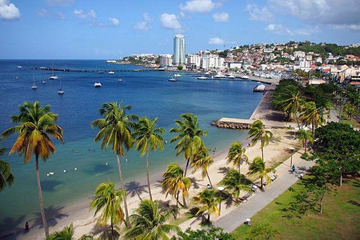
Waterfront at Fort de France, Martinique's largest town
Sailing from Martinique to Grenanda you can expect winds primarily from the northeast, especially around peak season either side of Christmas. Sailing this course involves short stretches of open water, with a stiff and steady breeze on your aft quarter. That makes for quick passages with most enjoyable sailing to a choice of Islands, whether it be for a lunch stop and a snorkel, or an overnight stay.
The eastern Caribbean islands that form a distinctive arc on the map are collectively the Lesser Antilles, a mixture of soverign states and territories governed by various powers. A trip along some of this chain exposes the voyager to a wide variety of cultures and customs in places that all sit in the idyllic picture-postcard surroundings of the movies and travel brochures.
Starting in Martinique and sailing south, you are exploring the Windward Island group of the Antilles.
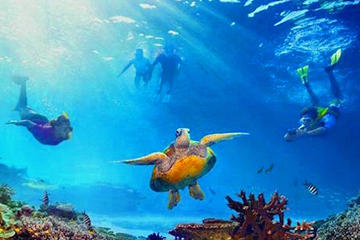
Wildlife viewing at its finest in the Tobago Cays
Like most of this group, Martinique was orginally colonised by France, and French flair is still in evidence there today. Martinique offers excellent on-shore facilities for the visitor, and is a popular base for boat charters. The island is mountainous, but with plenty of white sandy beaches to enjoy, especially in the south.
The next island is St Lucia. It's some 30 nautical miles to Rodney Bay on St Lucia's northwest, so to get there requires an early start. There are several top spots to visit down the island's sheltered western coast. Take time out to investigate Les Deux Pitons.
Another long but relaxing sail to St Vincent and the Grenadines, so-named because of their joint French and British colonial history. St Vincent has its Blue Lagoon that you'll probably overnight in, while the Grenadines island group, some of which confusingly belong to Grenada, provide numerous anchoring options.
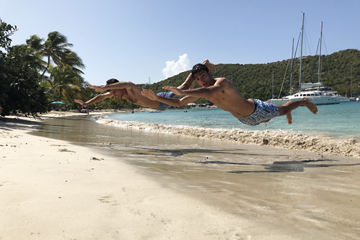
Happy charterers enjoying their time ashore in the Grenadines
The Grenadines stretch all the way to Grenada, your final port of call, making this part of the voyage very convenient for a leisurely sail. Call in at one of the uninhabited Tobago cays for a real taste of desert island living, if only for a few hours.
Once offshore Carriacou you are in Grenadan territory. Grenada, like St Lucia & St Vincent and the Grenadines, is now an independent member of the British Commonwealth, but with historical French influence. This is the 'Island of Spice' where nutmeg and mace production are important to the economy. As is tourism, and there is plenty to entertain you before concluding your vacation and departing these fabulous sailing waters.
Once you have experienced all the pleasures of sailing the Caribbean, chances are you'll be back one day for more.
The Best Caribbean Charter Sailing Destinations
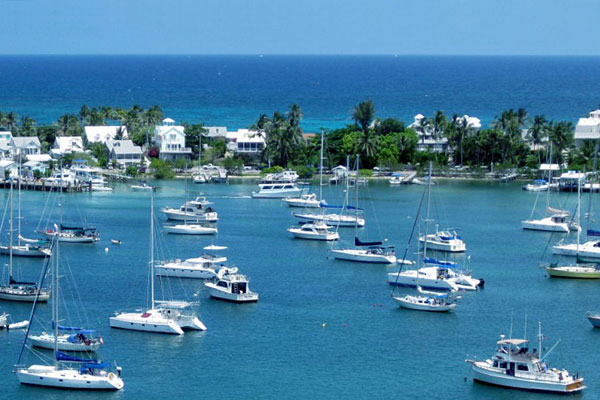
British Virgin Islands
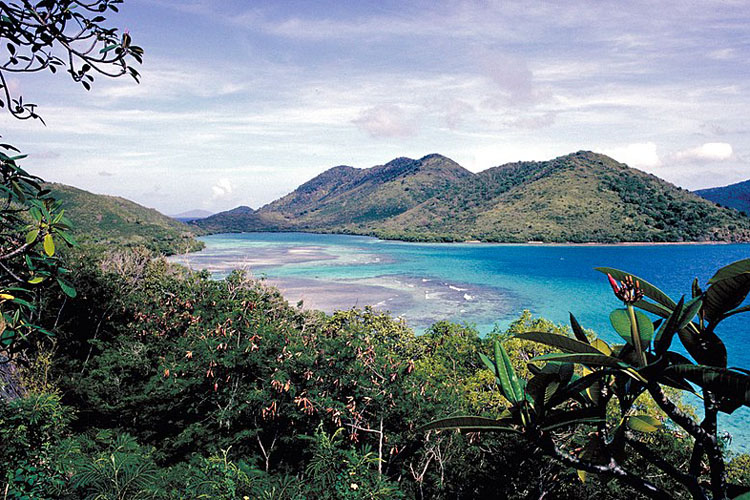
US Virgin Islands
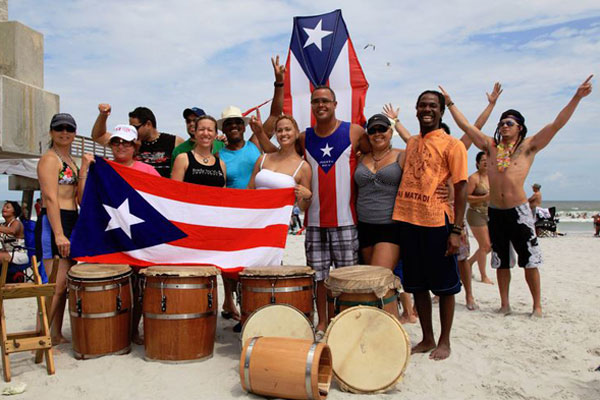
Puerto Rico & Spanish Virgin islands
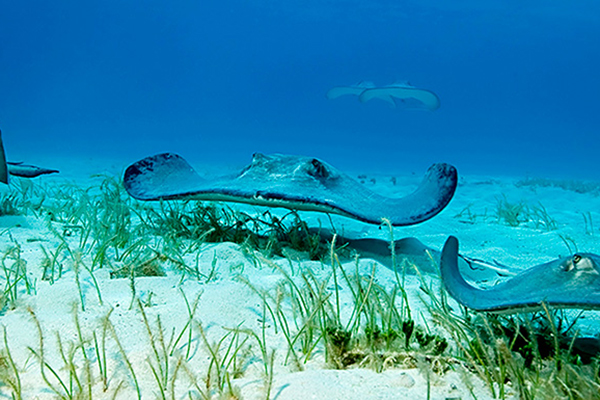
Cayman Islands
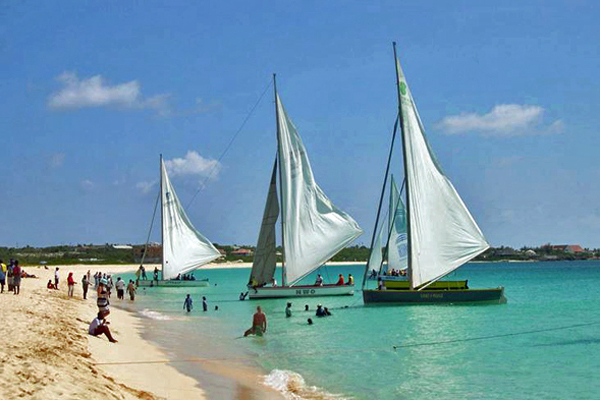
St Martin, St Barts, Anguilla, St Kitts & Nevis

Antigua & Barbuda
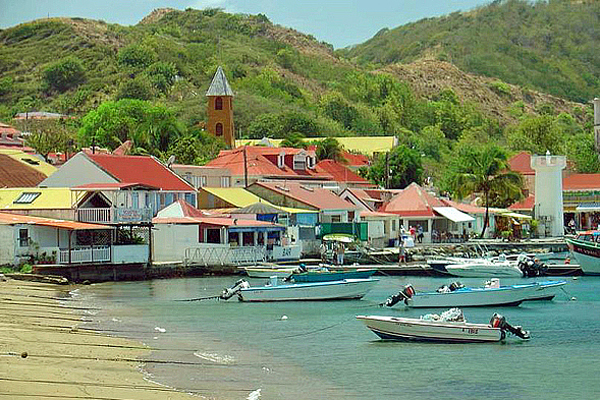
Martinique, St Lucia & The Grenadines
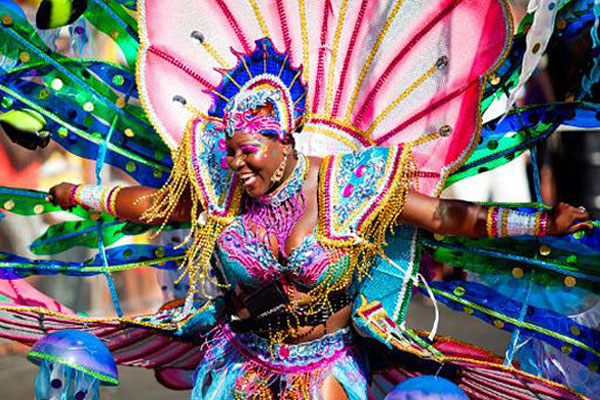
Latest Blog Posts
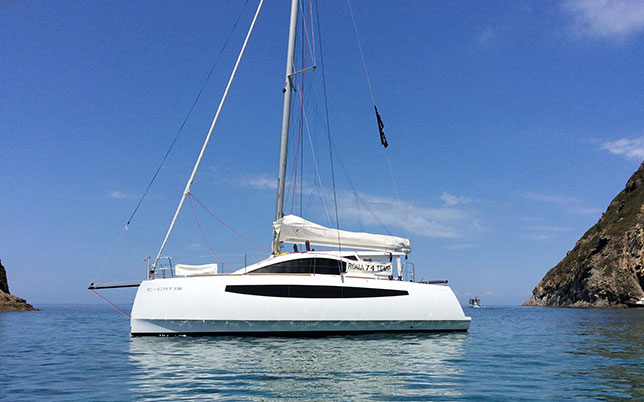
Charter catamarans for modest sailing holiday budgets
Here we highlight some smaller catamarans finding favour with our charterers in the Mediterranean and elsewhere. Robert is our expert evaluator when it comes to helping you select the right boat for your sailing charter, and the following is his personal take on recent introductions to the charter boat market.

The popular Bali Catamaran in all its variations
The Bali catamaran, designed and built specifically with chartering in mind, has become so popular that it’s been hard to keep up with all the new models, hard to spot which one has just the right size and amenities to perfectly fit your group's sailing holiday charter needs. We can help you there.
.jpg)
The value of after-charter destination and boat reviews
At Sail Connections we offer a personal service based on long experience in the business and close attention to what's happening in the destinations we offer. We have also sailed a large number of those places, and can often speak from personal experience. But we can't be everywhere.
-6x4.jpg)
Chartering in Turkiye: feedback we just have to share
Turkey is one of those charter destinations that doesn't fail to pleasantly surprise. We're always delighted when we receive such good reports as we did recently from a New Zealand client.
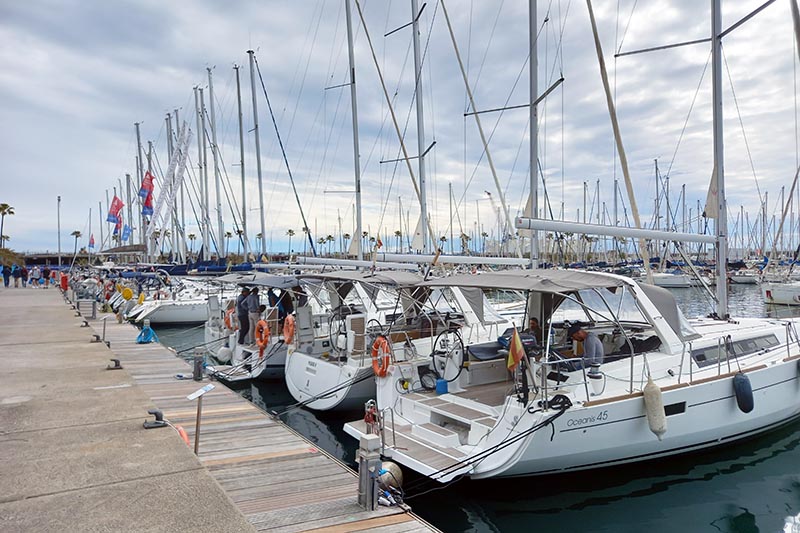
Barcelona gets ready for the America’s Cup
As well as the competition for the Auld Mug itself, the 37th America’s Cup in Barcelona will incorporate the first ever Women’s and Youth America’s Cup regattas. Chartering Barcelona 2024 will be in demand!
The Sail Connections Guarantee
One contact - every option - advice you can trust.
- Matching any competitive offer
- Sourcing boats with discounts available
- Personalising our proposal just for you
- Qualifying the operator as well as the boat
- Advising without bias based on 25+ years of experience
- We do more than just book yachts!
We will match any discount website offer on charter boat price, and still provide our customary high level of service.
The Essential Guide to Sailing Holiday Charters
The Sail Connections Essential Guide to Bareboat and Crewed Sailing Holiday Charters is jam-packed full of useful tips for getting the most out of your next boat charter. And it is FREE to download.
Enquire about a charter...
For a personal proposal structured to meet your needs, with advice on all aspects of your sailing charter.

- Bowthruster
- Furling mainsail
- Fully battened mainsail
- Electric toilet

Need help? Call us:

CARIBBEAN YACHT CHARTERS
Caribbean yacht charters, is synonym to tropical paradise and an excellent sailing destination. White sandy beaches, clear waters and palm trees make Caribbean bareboat charter an unforgettable sailing experience. Islands surrounded by the Atlantic Ocean and Caribbean sea, provide numerous destinations.
Rent a Boat in Caribbean: 1297 Available
Robertson caine 51 pc power boat charter (2015).
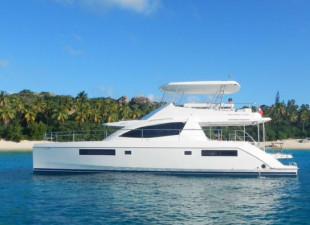
from 23-Mar to 30-Mar 24
Rent a boat Oceanis 43 (2009) in Grenada
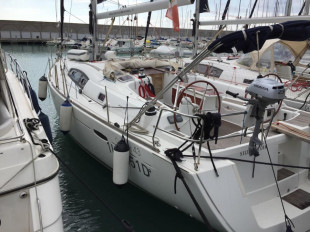
Sailboat Dufour 412 GL (2018) for rent in Antigua
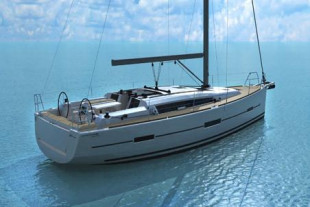
from 17-Aug to 24-Aug 24
Dufour 412 GL sailboat charter (2018)
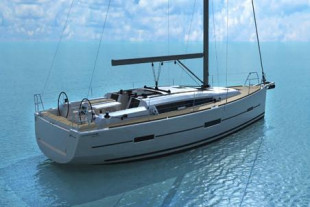
Rent a boat Dufour 390 GL (2019) in Guadeloupe
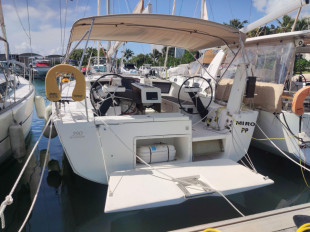
Sailboat Dufour 460 GL (2018) for rent in Guadeloupe
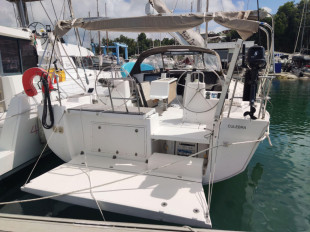
Dufour 425 GL sailboat charter (2012)
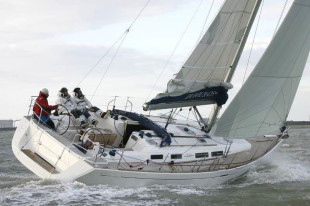
from 01-Jun to 08-Jun 24
Rent a boat Dufour 460 GL (2018) in Guadeloupe
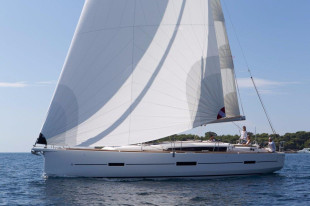
Sailboat Dufour 390 GL (2019) for rent in Antigua
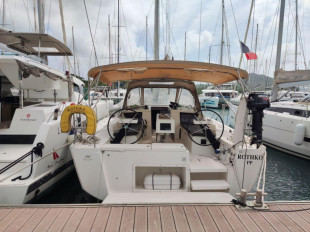
Oceanis 41.1 sailboat charter (2018)
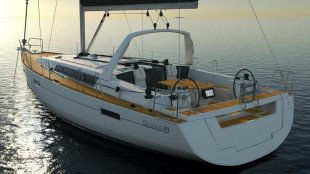
Caribbean Yacht Charter Reviews with 12knots
Matthew Gunnison
“Thanks for helping to coordinate!”
It was terrific, thanks. Sail Marine is a great outfit. Thanks for helping to coordinate! Best, Matt
YACHT CHARTERS
Flori Grottoli
“Spanish Virgin Islands are stunning / March 2019 / Puerto Rico / Dufour 412”
The experience was beautiful and the Spanish Virgin Islands are stunning! Even though we started off with a few setbacks (had to switch boats because of technical issues), the marina made good and was very accommodating....they did the very best they…
Greg Spalek
United States
“Relied on 12knots' team for 3 of my voyages”
I've relied on this 12knots' team for 3 of my voyages (Mexico, Tahiti and Croatia). Their website is very good to browse and they stand behind their portal. They are always fast to respond to questions/concerns. It is always a pleasure to deal with J…
Ven Dobrinov
“Everything was perfect!”
Dear Grigory, Everything was perfect! Thank you :) Please see the attached photo.
“Everyone had a very nice time”
Thank you - it was a really nice experience. You were very helpful during our departure and arrival. The boat was amazing, well outfitted, and everyone had a very nice time. I'll be sure to send you some photos over the weekend. We also have some dro…
“Everything was fine”
Every time I ordered a boat using 12 knots everything was fine. Every question was answered, support provided.
Other popular destinations
- yacht charter france
- spain yacht charter
- yacht rental spain
- yacht charter in martinique
- charter usvi
- usvi bareboat charter
- usvi boat charters
- bareboat charter croatia
- yacht charter croatia
- Pula yacht charters
- Kos yacht charters
- boat rental thailand
- yacht charter thailand
- Nai han beach yacht charters
Sailing Around Windward and Leeward Islands of the Caribbean
The Caribbean covers a huge region of widely spread islands 2,000 miles (3,218 km) long.
The larger ones have become sovereign countries with broad range of amenities for sailors, while the smaller ones still preserve its untouched rural charm and tranquility.
From the western tip of Cuba to the Leewards in the east, then south to the top of South America and along Venezuela’s north coast – this chain of islands has created a hook-like shape around the Caribbean Sea. Location like this is always an enticing bait for sailing - perfect climate and array of diverse cultures, customs, cuisines and experiences, water sports and an unlimited number of other attractions.
Planning sailing vacations in Caribbean, you may wish to consider these groupings of the islands as points of your itinerary, as they contain many popular cruising areas and harbor stops. There is no doubt that in the scope of Caribbean bareboat or skippered yacht charters both groups have their charms and countless reasons to explore, which definitely makes it a great sailing destination.
Caribbean yacht rentals
12 Knots offers eleven yacht charter bases in the Caribbean region, each with unique individual character, providing sailing experience for everyone, from a novice to an experienced sailor. This region comprises more than 700 hundred islands and islets, so you can choose Caribbean sailing vacations with shot and easy hops or more challenging passages.
Taking Caribbean sailing vacations, you will find warm and steady trade winds in picturesque surroundings; discover plenty of great bars and authentic cuisine!
It’s up to you, choosing between the Leeward Caribbean islands with short and easy hops with line-of-sight sailing and the Windward with more challenging open water passages. Wherever you go, you will return home relaxed, refreshed and ready to start planning your next Caribbean sailing adventure.
The Windward islands
Windward Islands located at the southern end of the Caribbean island chain and stretch for over 300 miles to the south-eastern end of the Caribbean Sea. The Windward Islands are simply called so due to their position as they are exposed to the northeast trade winds. For experienced sailors, it can be right choice to sail among the four main islands: Martinique, St. Lucia, St. Vincent and Grenada. They lay far apart each other allowing open ocean sailing and while steady easterly trade winds, make passages north or south easy. With constant 12 to 25 knots wind, Caribbean sailing is among best in the world. Night anchorages in peaceful and protected areas give sailors freedom to explore and soak up British and French island culture. The islands of St. Lucia, St. Vincent and Grenada were British colonies until they gained independence during the 1970s. Martinique is still an overseas department of France.
The climate of the Windward Islands is definitely a marine one.
When tropical heat reaches its peak, steady trade winds and daily sea breezes come to rescue.
Typically, dry and wet seasons go hand in hand here. Although the priority of more rainfalls is given to the eastern side of the islands mainly due to the prevailing north-east trade winds there.
The islands east of Puerto Rico were called “Windward Islands” by the Spanish, while the islands south of Puerto Rico were named as “Leewards “. And Dominica positions itself right on the border line between the Windward and the Leeward Islands.
Long time ago some of the islands used to be French colonies, subsequently gained its name as The French Antilles.
The population of the Windward Islands is mostly of African origin, with some exceptions of Chinese and Caucasians. The present day Windward Islands will welcome tourists with upscale resorts, stunning beaches and pleasant sunny weather.
After cruising through the Windward Islands, you may wish to set sails to the Leeward Islands.
The Leeward islands
The Leeward islands are located on the eastern edge of the Caribbean Sea and form the northeastern boundary between Caribbean and Atlantic Ocean, extending from Puerto Rico to the Windward Islands, forming part of the Lesser Antilles chain.
Although 700 miles long stretch of these magnificent isles mostly constitute the whole body of the Leewards, it provides the abundance of enjoyment: quaint fishing spots, ancient ruins and delicious authentic cuisine.
Blessed with balmy temperatures all around the year, The Leeward Islands are called leeward because they're away from the wind or downwind (in the "lee"). Leeward group of Caribbean islands includes: the U.S. Virgin Islands, the British Virgin Islands, Anguilla, Saint Martin, Saint-Barthelemy, Saba, Sint Eustatius, Saint Kitts, Nevis, Barbuda, Antiqua, Redonda, Montserrat and Guadeloupe.
One of two "sister islands", St Kitts and Nevis, provides a brilliant Caribbean experience, from their picture-perfect beaches and volcanic mountains to friendly locals and layers of history to explore. For the water sport lovers, there are numerous aquatic activities that include fishing, diving, windsurfing and surfing.
St.Kitts and Nevis
Switch from sailing to inland for a change and St.Kitts and Nevis will deliver the most exceptional hiking in the Caribbean. The dormant volcano of Mount Liamuiga is considered to be the toughest to climb. And with the experienced guide you may even try to descend in its crater!
The unspoiled landscape of dry littoral forest and rainforest will present memorable show of fauna and flora. Many plants are of culinary and medical use, and some even used in black magic, as informative guides would point out its botanical value.
The wild life-lovers will not be disappointed with variety of different types of exotic animals.
Actually, the Great Salt Pond has become famous for its largest habitat of green velvet monkeys.
St. Kitts and Nevis will keep you captivated with majestic view of huge conical shells, remains of old sugar mills, along with some other plantation ruins, built in the 18 th century.
Back to water activities, and tourists will be pleased with what these two island can offer: deep-water fishing, snorkeling, scuba diving and more.
Then in order to satisfy your growing appetite visit two popular restaurants: Carambola and the Shipwreck Bar and Grill to enjoy its delicious local meals.
A yacht charter in the Caribbean Leeward Islands offers sailors an unrivalled remarkable experience. Enjoy tropical landscapes, pristine palm-lined beaches and azure waters — all the joys of marine life.
Sailing over the Leeward Islands may have all the pleasures to offer: the Tropical rainforests, glittering coral reefs, and luxury sand beaches. That’s probably why most of the known tourist resorts on these islands play a critical role in their economy, as do banking and fishing. Many of them also rely on their status as a tax haven to promote offshore financial services as a source of government revenue. But there is much more to discover in the Leeward Islands. These Caribbean islands provide great variety of yachts for charter and pleasant sailing vacations. Most of the Leeward Islands are located close to each other with moderate winds from 10 to 15 knots and rather low wavers. BVI is the most popular area for Caribbean charters either bareboat or luxury crewed vacations. This is the right place for the novice sailor’s easy passages in line-of-sight sailing.
The climate of the Caribbean Leeward Islands can be described as tropical, but much drier than in Windward Islands. Though the climate does vary from island to island and can even be different in different parts of the same island. Rainfall increases with elevation and in more southerly latitudes. In some cases trade winds look like refreshing tonic to the tropical heat. There is minor seasonal variation, although the second half of the year, the wet season, is slightly warmer and rainier. The best time for sailing in the Caribbean may be the first half of the year. At this time the temperatures usually range between 81°F (27°C) and 95°F(35°C). Annual rainfall averages about 40 to 50 inches (1016 to 1270 mm). Keep in mind, that nearly every island had been severely damaged by hurricane activity in its recent history.
English is the most widespread language all around the islands, plus many of the people speak French and Dutch on the St Martin Island. Both English-based and French-based Creole are also spoken. The prevailing currency is The East Caribbean dollar. But St Martin is odd man out again, circulating the Netherlands Antilles guilder in the Dutch area and the Euro in the French region. Nevertheless, the US dollar is widely accepted throughout the islands.
If you eager to take part in sporting activities, then you may be pleased to know that cricket is widely played and followed in the former British territories. Besides, as in the rest of the Caribbean, music is also always a big part of local life. Enjoy the magical sounds of calypso, soca, steelpan, reggae, salsa and jazz — all of the mentioned has their adherents.
During your Caribbean yacht charter, you may wish to participate in some major holiday celebrations, including the St Kitts Christmas, New Year carnaval, the annual music festival, as well as Anguilla’s Emancipation Day and Culturama festival on August 1st.
The culture of the Leeward Islands is varied by different influences, including French, Dutch and West Indian. Due to that sailing around the Leeward Islands provides a wonderful choice of cuisine and some great restaurants to satisfy your affection for the finest dishes. By the way, the island of Anguilla offers true gastronomic feasts. When sailing in the Caribbean Leeward Islands, be sure to try freshly caught lobsters with a glass of wine.
Sailing the Caribbean With 12 Knots
So, while planning a Caribbean charter it is highly recommended to decide on how many islands you would like to visit in a given time frame. Research Caribbean boat rentals and determine which island you would like to have as a starting base. Then you can plan an itinerary for the week or ten days, taking into consideration distances between the islands and activities you would like to have, like island tracking, scuba diving, snorkeling, volcano hiking, or even shopping.
12 Knots team will give you plenty of useful information not only on the bareboat charter in Caribbean, but also itineraries, places of interest and peculiarities of each island.
Taking a yacht charter in the Caribbean is just a perfect combination of sailing and relaxation, authentic culture and a range of water sport activities. In a few words, this area may always offer something for everyone in these amazing islands’ surrounding.
Frequently Asked Questions about yachting in Caribbean
How much does it cost to rent a yacht in caribbean , how many boats are available for rent in caribbean , what are the main yacht charter bases in caribbean , what boats are available for charter in caribbean .
- Meet the Team
- Work with Us
- Czech Republic
- Netherlands
- Switzerland
- Scandinavia
- Philippines
- South Korea
- New Zealand
- South Africa
- Budget Travel
- Work & Travel
- The Broke Backpacker Manifesto
- Travel Resources
- How to Travel on $10/day
Home » Budget Travel » Sailing the Caribbean: The ULTIMATE Travel Adventure (2024)
Sailing the Caribbean: The ULTIMATE Travel Adventure (2024)
A sneaky rum punch is in your hand and your toes hang from the edge of the boat into balmy, crystalline waters. Ah yes, this is the good life!
Sailing across the Caribbean has a paradisiacal reputation that precedes it. And I can certainly attest to the beautiful afternoons spent on the hook while I lived on a boat in the Caribbean. I can also attest to the hair raising storm dodging and muggy mornings I endured as the season changed…
My point is, sailing the Caribbean is a dreamy experience so long as you get your ducks in a row and stay a bit organised! If you want to enjoy the legendary trade wind sailing as well as the best that sunset drinks at anchor have to offer, you simply need to pick the right time – and right direction – to sail the Caribbean in!
And that’s where this handy guide comes in. I’ve bummed my way through these glorious islands when the sun is shining and when a hurricane is bearing down on us. I’ve done the shore excursion to the tips of volcanoes and to the bowels of Carnival celebrations.
And let me tell you: there is nothing quite like sailing in the Caribbean . So let’s set sail and get into how to turn this into reality!
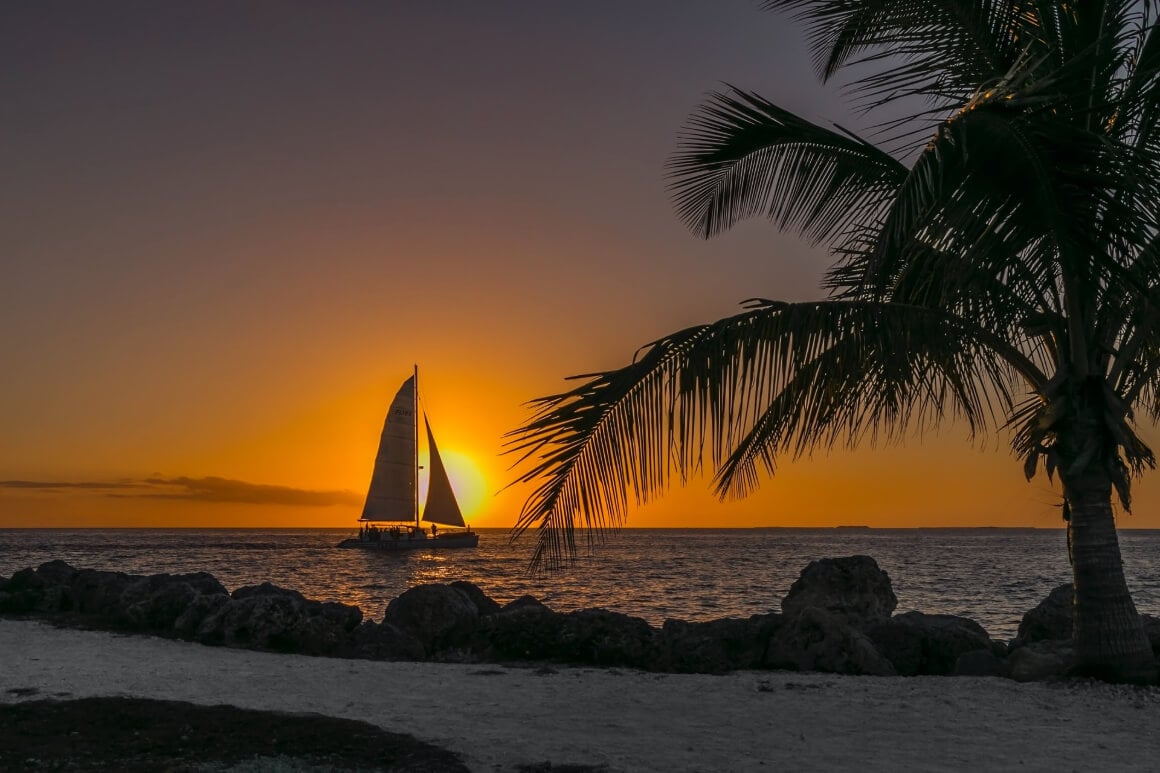
Why Sail the Caribbean
Popular sailing routes across the caribbean, destination inspiration, what you will need, faqs about sailing in the caribbean, final thoughts on taking to the west indies.
Well, someone’s got to enjoy those peachy sunsets and happy hour on the beach, right? 😉
Sailing is a pretty epic holiday or one-off travel experience – and if you catch the bug and adopt the boat life , then it’s a pretty epic way of life. The reason that the Caribbean tops many people’s lists is that it has dreamy beaches that aren’t quite as touristy as the Mediterranean. (Or at least, there are still some off the beaten path areas to explore).
The weather and diving are far and away better than Europe but shhh … don’t tell them that! Honestly though, the visibility is amazing, the water is warm, and there are coral reefs for DAYS.
So not only is SCUBA diving popular but learning to freedive is certainly on the table. As sailors, the Caribbean represents an incredible destination to shore up your fishing skills and practise some ocean to table living.
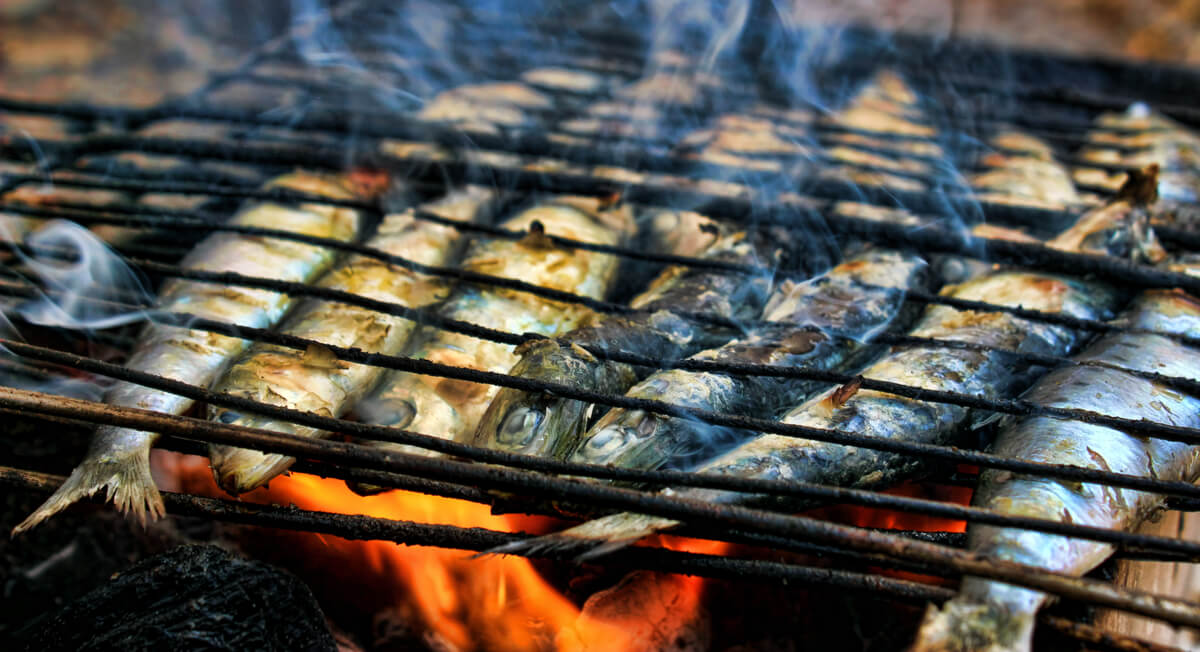
Easy trade winds and epic weather aside for a moment, the Caribbean is also an incredibly diverse cultural hotspot too. You can truly tune in to island time here and learn about the fascinating – albeit often brutal – history of many of the islands. And then there’s the Sunday Fundays to contend with…
Because of the way the Caribbean is laid out like a long selection of juicy islands on an ocean platter, you can feasibly travel from north to south over one sailing season. Will you see everything? No.
Would you still have an incredible grown-up gap year or sabbatical? Fuck yeah.
Sailing the Caribbean is simply unmissable!

Unlock Our GREATEST Travel Secrets!
Sign up for our newsletter and get the best travel tips delivered right to your inbox.
“ I just go where the trade winds blow.” – Thank you, Protoje .
Much of the sailing in the Caribbean happens in the Winward and Leeward Islands. But a lot of the backpacking in the Caribbean occurs in the Greater Antilles and even over in Central America . But what sailing route through the Caribbean should you take?
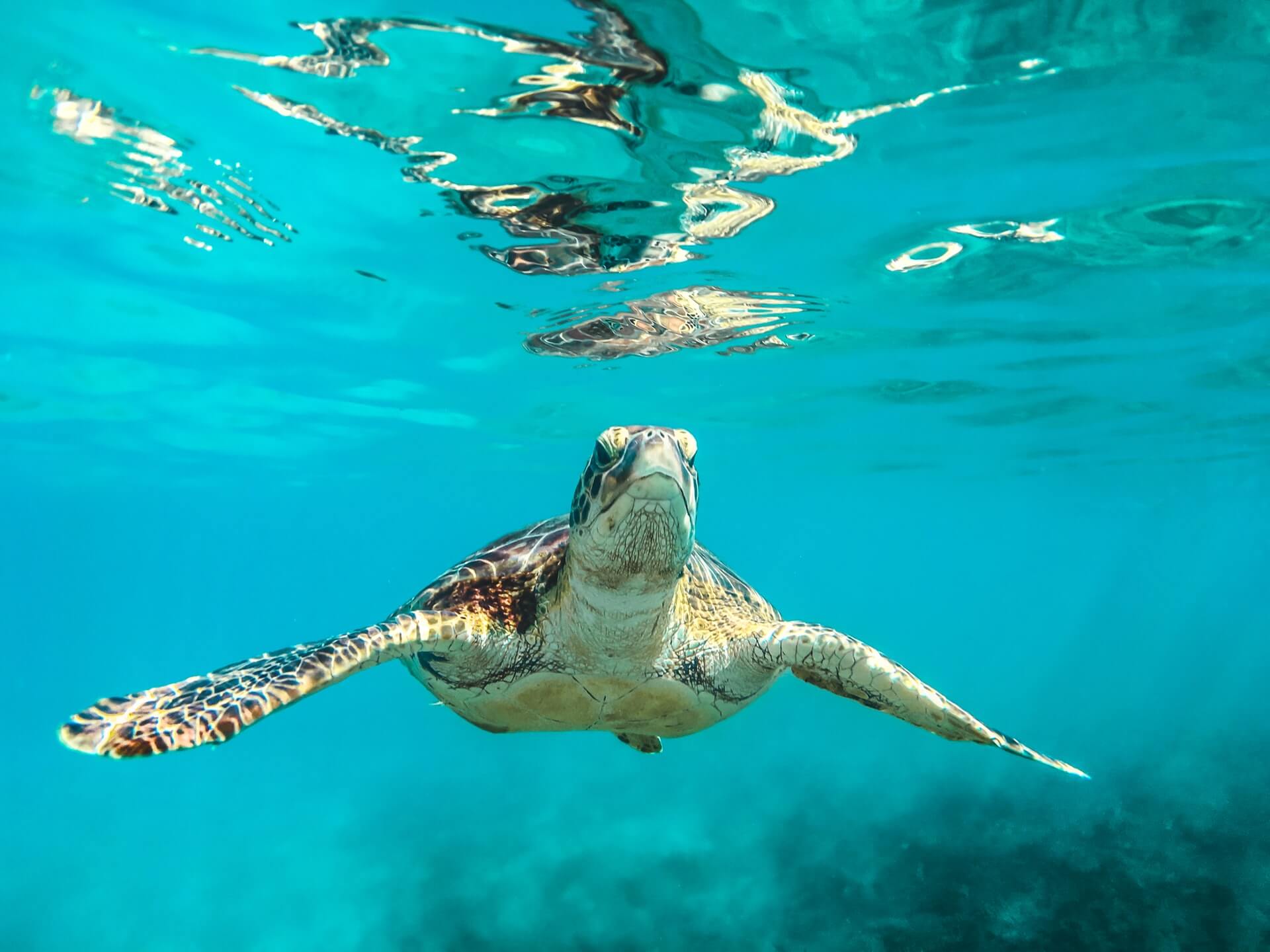
Well, you cant just “sail away” as much as we all might want to. You’ve got to pay astute attention to the weather so that you can enjoy more rum punches and less hurricane dodging.
Much of paying attention to the weather comes down to following the trade winds. And the trade winds suggest fairly similar routes through the Caribbean Islands – although handy sailors will make variations and deviations to their liking.
2-weeks in the Caribbean – BVIs and USVIs
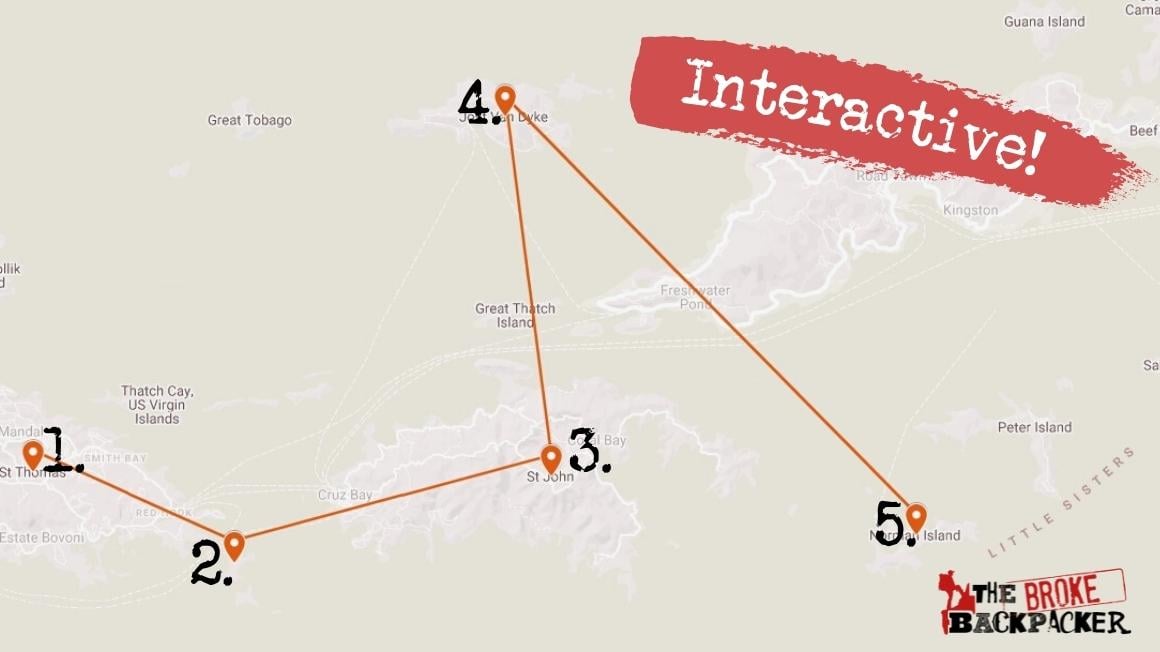
If you’ve just got a small amount of time to get a taste of the boat life, I’d suggest going somewhere that allows you to charter boats easily. You could go to the Bahamas, or to any of the myriad of Caribbean islands like St Martin. Personally, I’d recommend the British and US Virgin Islands.
The sailing between islands here is almost always idyllic; the distances aren’t too big, and there is a real diversity of island experiences to be had here. Think SCUBA diving, learning to spearfish , and some deceptively lethal rum and pineapple painkillers. 😉
There are many ways you could spend these 2 weeks, but I’d recommend starting in St Thomas – particularly in Charlotte Amalie. A lot of people enjoy heading over to Great St James and enjoying some epic diving – but keep in mind this was the island previously owned by Jeffrey Epstein.
You should definitely enjoy St Johns island before heading across to the BVIs. St Johns Island is where I put a handmade epoxy and LED light concoction into the water at night and attracted hundreds of tarpon to swim around the back of the boat… Incredible .
Over in the BVIs, enjoy Jost Van Dyke and a stop at the (in)famous Soggy Dollar Bar! Sail on to Virgin Gorda and explore The Baths and the famous shipwreck, The Rhone . Keep sailing toward Norman Island and beyond. There are countless floating bars (like Willy T’s) and snorkelling opportunities along the way.
If you’ve chartered a boat, you can return to St Thomas to finish your trip. If you own your boat… well, the rest of the Caribbean is calling!
6 Months+ in the Caribbean – The Full Sabbatical
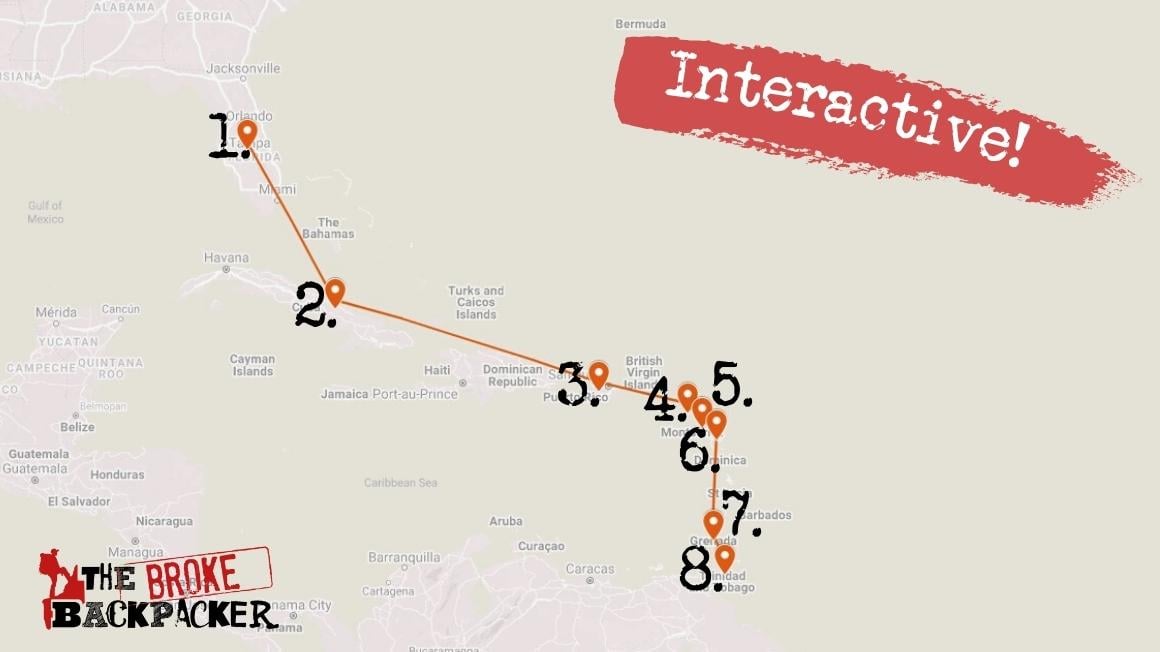
There are, of course, a few ways to do this sailing trip depending on where you depart from. If you sail from Florida you have the option of heading to explore Cuba , Puerto Rico, and the Spanish Virgin Islands . Or you can head to the USVIs and BVIs .
Once you’ve made this passage, you’re in the glorious trade wind sailing paradise of the Antilles. The Caribbean Islands run in an arc, so you can simply island-hop your way from St Kitts and Nevis to Monserrat to Guadeloupe to Grenada and all the way down to Trinidad and Tobago.
This is such a deluge of names and islands and you definitely need 6 months to explore all of this. You will notice a change in culture from island to island – even ones that are both considered French territories.
Make sure you get out and go hiking some of the jungle mountains like on Saba . SCUBA diving and fishing remains epic throughout the Caribbean – but particularly around Grenada !
If you need boat repairs and a different style of diving, you might want to think about sailing to the Central American side of the Caribbean. The Rio Dulce in Guatemala is awesome for boat repairs; so are nearby Belize and Utila . Honduras has freaking EPIC diving and freediving spots.
Basically, you’re going to be heading vaguely south during this 6-month sailing trip in the Caribbean. But keep an eye on weather windows to see when you can find a window to return somewhere safe for hurricane season.
When to Sail the Caribbean
So, boat life is not without its risks at all. But danger IS a relative concept. Crossing the street and driving a car can be dangerous and yet we do that every day. And, as the old ocean adage goes: in order to be a sailor, you’ve got to leave port.
What’s all this talk about danger? Picking when to sail is just about when the sun’s shining right? Wellll , it’s a bit more than that.
Your best bet for enjoyable trade wind sailing, clear waters, and the dreamy conditions that everyone associates with the Caribbean is to sail outside of hurricane season. This means you want to enjoy sailing the Caribbean between December – June .
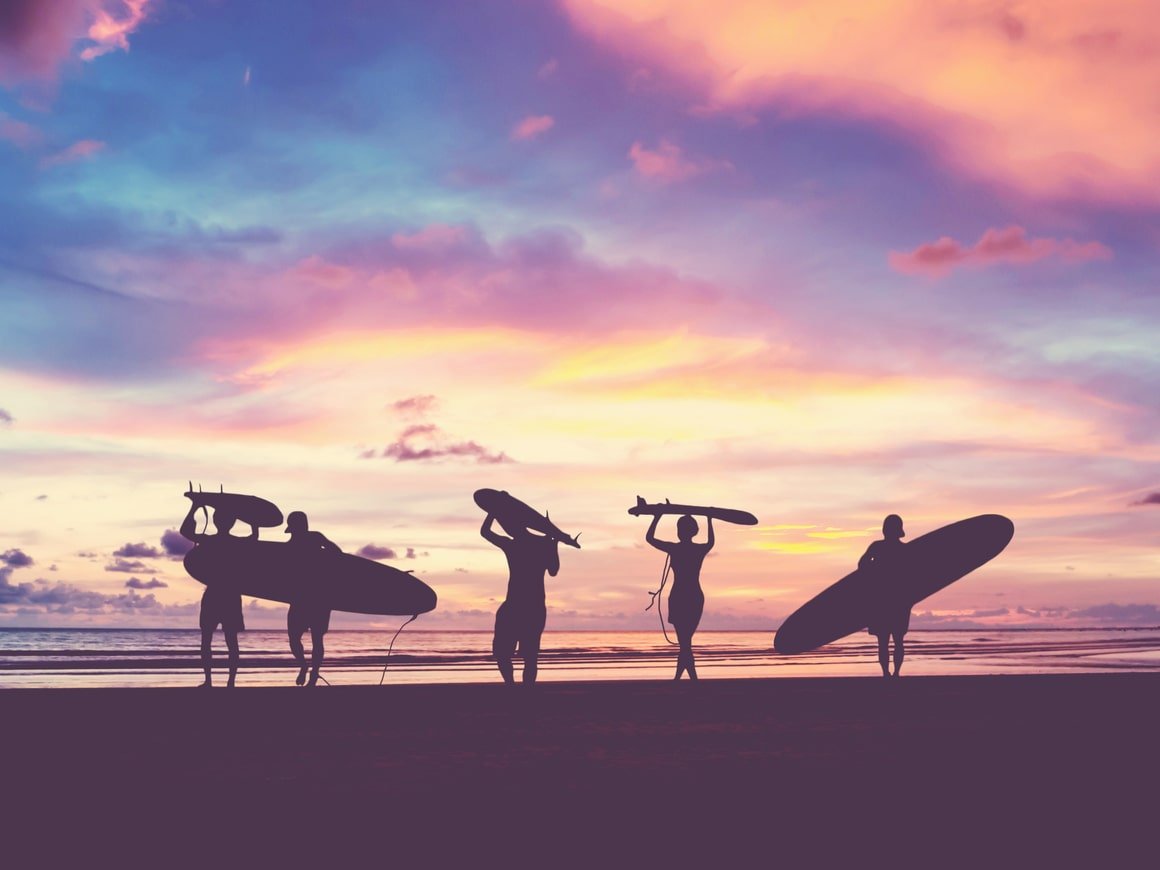
On the one hand, this presents the perfect opportunity to escape the winter of the Northern hemisphere. On the other, travelling during this time is high season.
And this is where you can lean into risk evaluation. The bulk of the Caribbean’s hurricanes occurs from August to October . If you can read weather maps, are confident in your ability to either sail away from or hunker down during a hurricane, and you don’t mind the humidity, then you could get away with sailing during the shoulder seasons.
You could be enjoying fewer tourists and more lazy days if you get savvy with your weather window planning.
There are so many islands to choose from! Picking the best Caribbean Island to explore is more of a concern for those with limited time sailing in this part of the world. If you’ve got time up your sleeve – and as a sailor, you almost always do – then you’ll get to see a little slice of everything!
So to get you pumped, I’ve given a brief rundown on 3 of my favourite places to sail to in the Caribbean! Some of them it’s purely for the epic sailing; some it’s for the street food delights! Now let’s dive in.
This is the home of Bob Marley, Rastafari, exotic jungles, jerk chicken, and stunning beaches. They also have a red hot cricket team. Damn Jamaica, you got some of everything!
When you think of the Caribbean, you are likely thinking of Jamaica – Rasfaris and all. You’re also probably thinking of the unrivalled natural beauty of a place where the dense jungle meets crystal clear blue waters ringed by coral reefs.
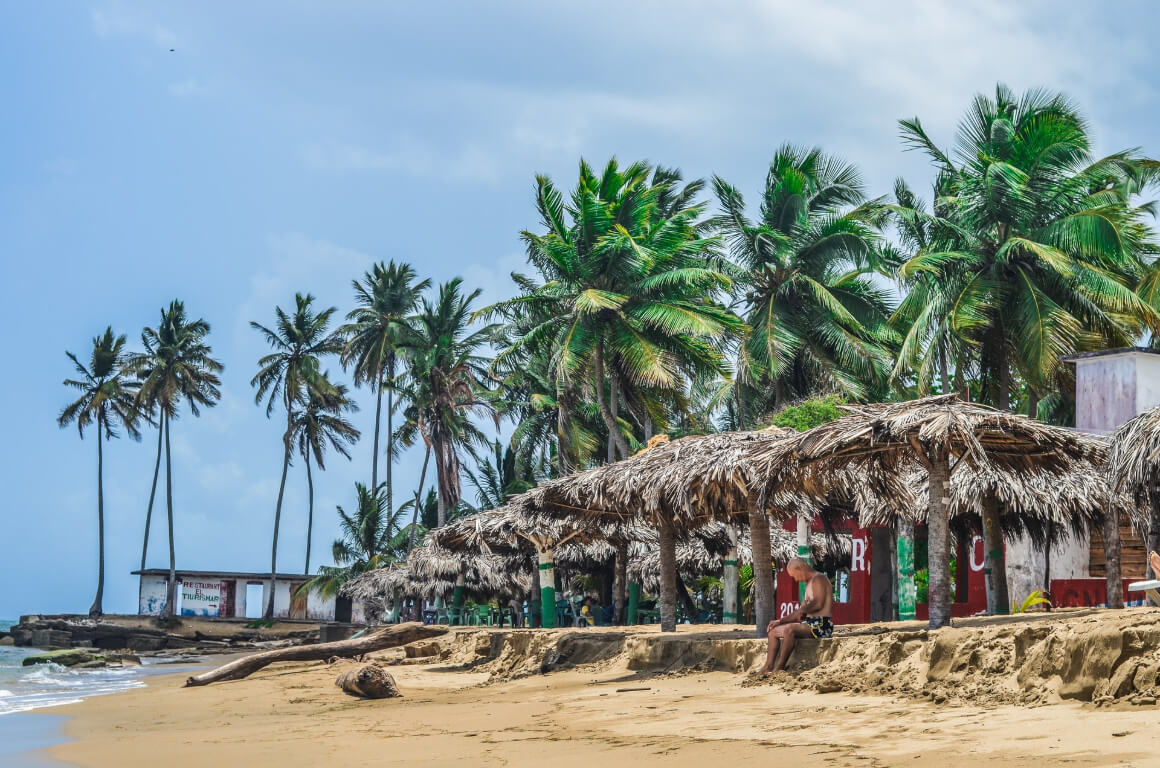
There are some truly beautiful anchorages in Jamaica, particularly around Montego Bay. SCUBA diving and fishing are two of the most popular ways to pass the lazy sailing days here – so be sure to share your bounty with your sailing neighbours! I think my favourite part of travelling by sailboat is the connections you make with other cruisers, so be sure to be to lean into each other and share fish!
Jamaica has a reputation for crime, and I’ve certainly heard a few gruesome tales over the years. But in all likelihood, these were exaggerated after a few swigs of rum… The truth is Jamaica is quite safe for tourists as long as you stay out of certain parts of Kingston at night and follow general travelling safety advice.
Puerto Rico
Puerto Rico is both a sailing and backpacking destination in the Caribbean – and it is gorgeous . Well, ok, my inner cynic says Puerto Rico is what will happen to Cuba when American consumerist greed is set free. But I digress, Puerto Rico is still dope.
The sailing itself is pretty cruisy and there are plenty of chill anchorages. As with anywhere, some of the moorings can be a little questionable – so if you can then you should freedive down like a mermaid and check to see if you’re secure! There are even a few good boatyards if you’re in need of a lick of new repairs.
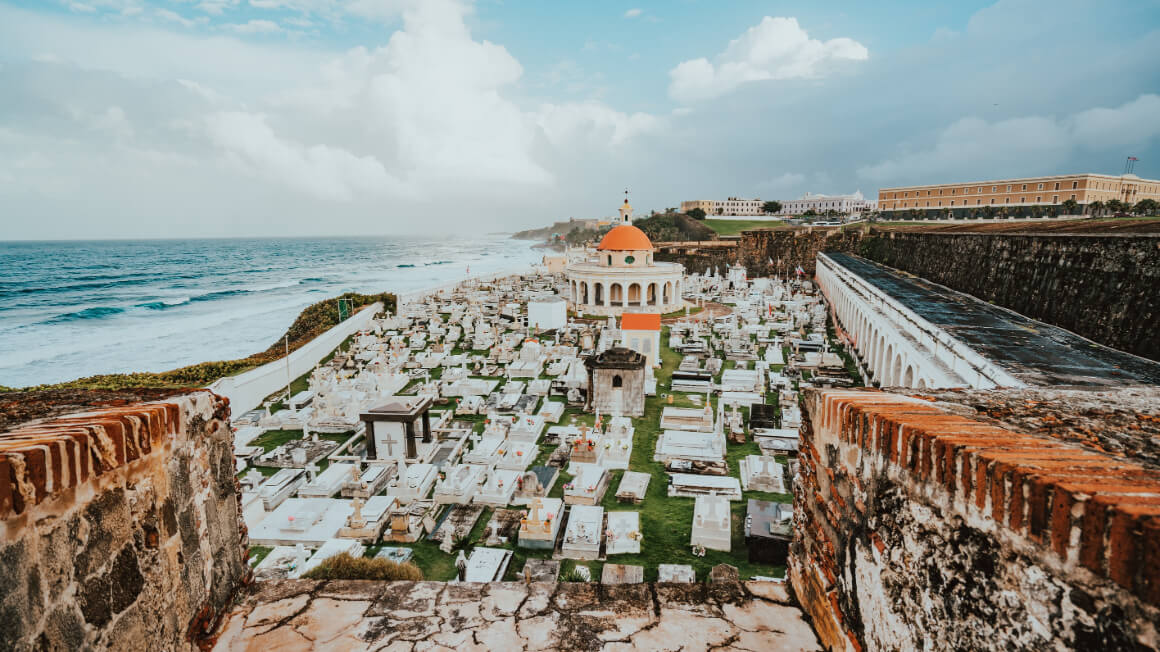
While you’re in Puerto Rico, you’ve got to check out El Yunque National Park . The hiking here will have you getting your land legs back in no time!
Also, close by and a must-do are the bioluminescent bays. You can even swim at La Parguera . And let me tell you, swimming under a moonless sky surrounded by flecks of glowing water – it’s pure magic!
I haven’t even touched on the lively salsa lessons or street parties that you inevitably get pulled into here! Let’s just say, bring your dancing shoes and your love of all-night fiestas. Enjoy delicious tostones and a cheeky pina colada and enjoy figuring out how every Puerto Rican manages to be such a good dancer!
Sailing in the Bahamas is a trip of a lifetime. Even within the legendarily beautiful Caribbean, the Bahamas stands out in a league of its own. I have to say, some of the best sailing I’ve done has been through the Bahamas!
It’s pretty shallow throughout the Bahamas, so watch out for running aground – although any sailor who says they’ve never run aground is telling porkies. But this is a worthy price to pay for the pure epicness on offer here.
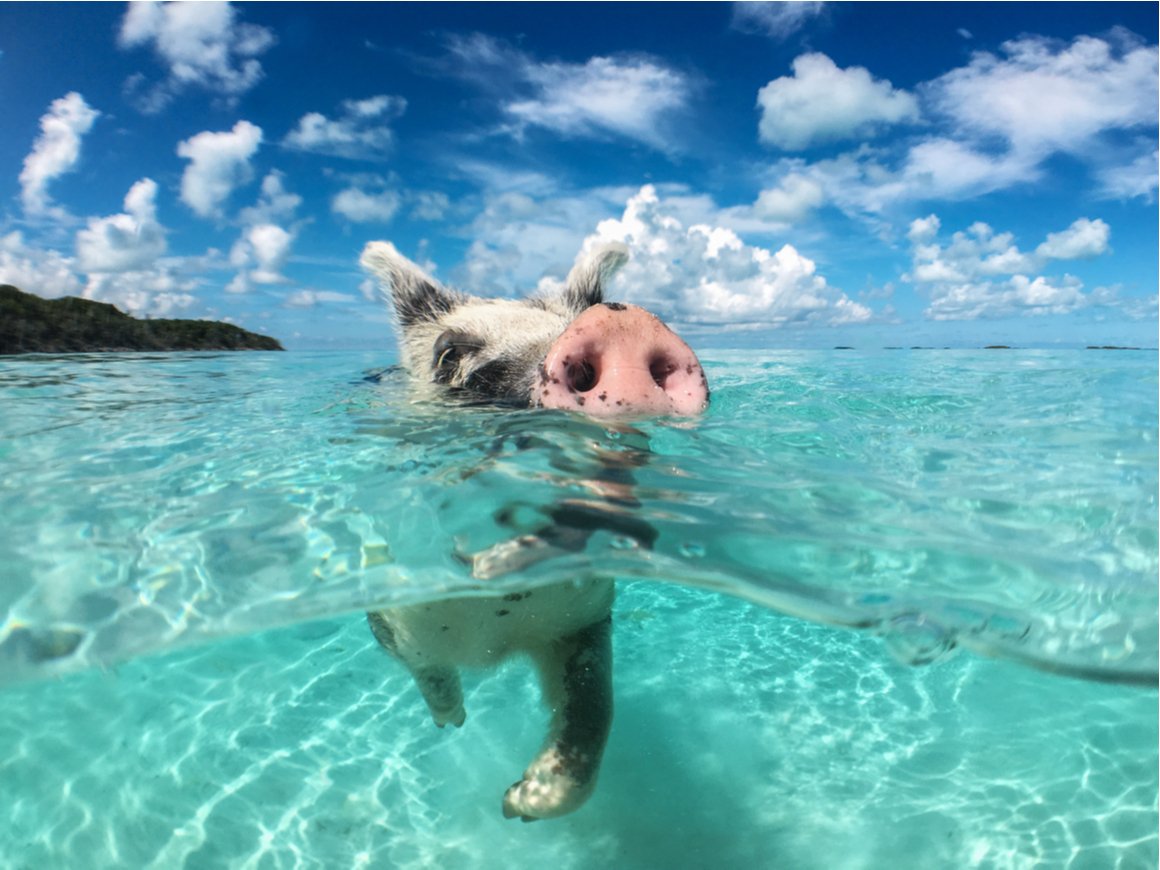
Sure, you can stop in at one of the many famous beach bars like Nipper’s Beach Bar. On the main islands, there are often celebrities mingling at the DJ dance events.
But this isn’t really what I love about these incredible Bahamian isles . I love the local life; the incredible fishing; the freediving.
The annual freediving contest is held here in the Bahamas and many cruisers set their fishing records here too. And at sunset, you’ll hear the call of the conch shells around the anchorage being blown. Call it a sunset ritual suited to boat life. Bonus points if you turned the conch meat into a salad before cleaning it and fashioning it into a shell worth of blowing each sunset!
Man, what I would give to get back to the Bahamas!

Wanna know how to pack like a pro? Well for a start you need the right gear….
These are packing cubes for the globetrotters and compression sacks for the real adventurers – these babies are a traveller’s best kept secret. They organise yo’ packing and minimise volume too so you can pack MORE.
Or, y’know… you can stick to just chucking it all in your backpack…
Obviously, you gotta have a boat that’s stem to stern ready! But, you also need a crew that’s ready to take on the trials and tribulations of boat life. Honestly, though, anyone who has good preparation is capable of taking on a sailing trip in the Caribbean.
Before literally chucking yourself in the deep end by sailing the Caribbean, why not rent the boat life? Try your hand at skippering a sailboat bareboat (without captain or crew) so you can stress-test yourself as a sailor. Sailo lets you do exactly that!
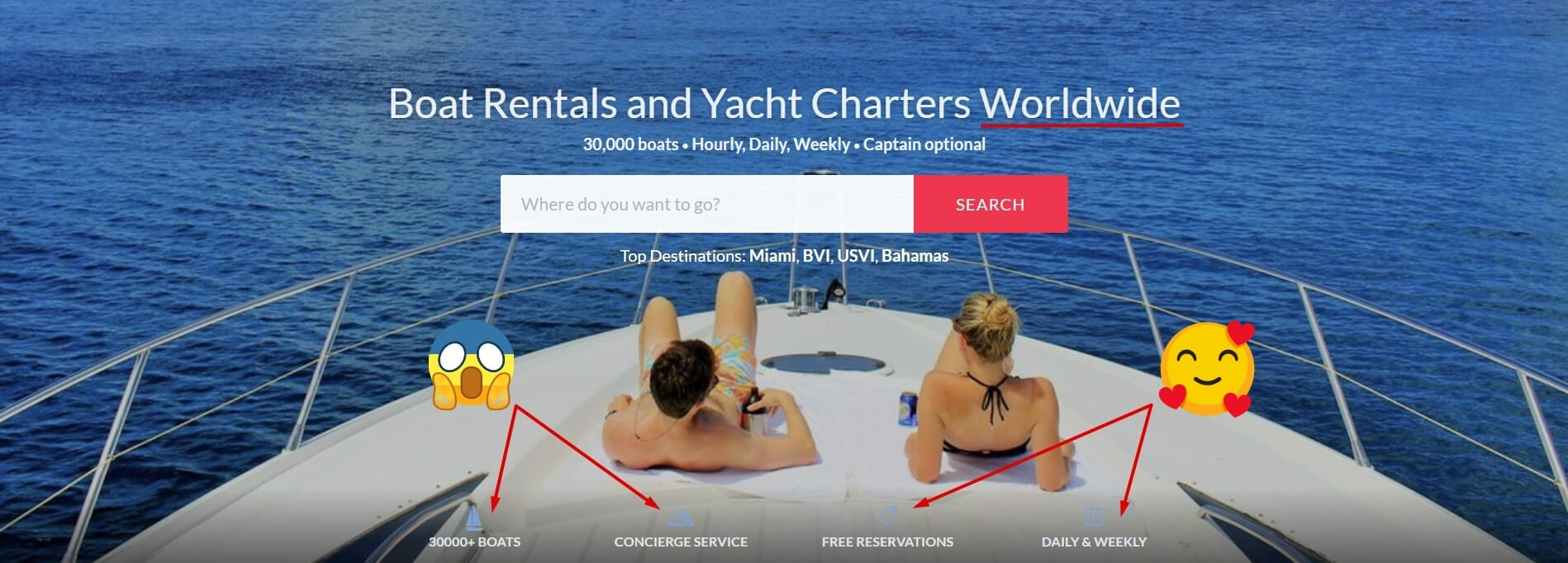
You can rent one of over 30,000 boats. If you’re not up to skippering your own boat, then kick back on one of the many catered charter boats on offer! You’re guaranteed to find something suitable and have a splashing good time in the best places in the world to sail.
It’s not the most hardcore jump-in-the-deep-end training for your Pacific passage , but having a taste of the boat life is probably a good idea! It’d be a bit awkward if you got halfway across the Pacific only to realise this whole boat life wasn’t for you.
A Well Prepared Boat
Now, if you’re only going on a short trip through the Caribbean, you might want to charter a boat. If you charter crew along with the boat, then you don’t need to worry about getting the boat prepared.
But if you’re chartering the boat “bareboat”, you will need to provision and check over the boat systems. And if you own your precious tin can, then you will definitely need to get her stem to stern ready.
I like to remember that a day spent preparing in the dock is worth a week at sea . When you walk around your boat, ask yourself: how likely is this to break, and if this broke, could I fix it? You need to prepare your systems and backup systems. Then you need backup systems for THOSE backup systems.
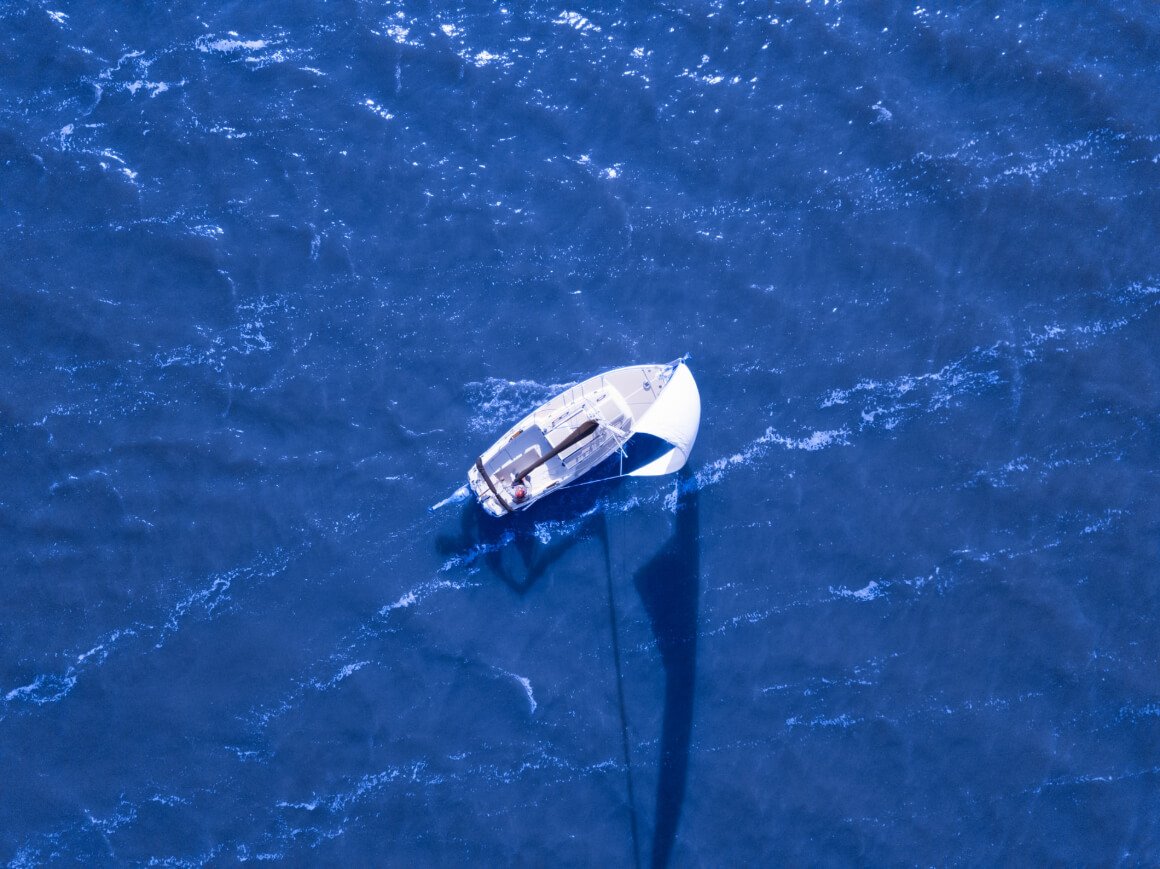
Ultimately though, you need to be flexible. The ocean is constantly trying to drown you and your boat and it’s a rough environment. When things break you need to know how to fix them yourself or patch them well enough until you get them properly repaired.
Knowing how to use both charts and electronic navigation is useful. Keeping in touch via the radio is also a useful – and fun – way of getting weather and gossip. Most islands in the Caribbean have a dedicated morning net run by a net controller. They’ll take callers, air mini-adverts, and share news of the area.
You’ll find that each island has their own radio culture and vibe too. Sometimes they can run a little satirically comical. Like the time someone very cheerily called up in the Rio Dulce to inform us all that a body had been spotted floating past their boat…
The Tools I don’t Leave Port Without
There are a few tools that I make for easier sailing days and help put points in your black box.
- Good tool bag and spare parts
- Deck knife (my ever faithful favourite tool)
- Multi-tool (my secret second love)
- Solar panels
Something sailors – veterans and newbies alike – tend to do is underestimate the consequences of danger. I guess you have to have a certain cognitive dissonance to cast off and not see land for over a month! Maybe it’s called getting old – or one too many close calls – but having travel insurance for cruises and sailing kind of puts your rational mind at ease.
You can release your wild side – but you’ve insured its dumb ass!
ALWAYS sort out your backpacker insurance before your trip. There’s plenty to choose from in that department, but a good place to start is Safety Wing .
They offer month-to-month payments, no lock-in contracts, and require absolutely no itineraries: that’s the exact kind of insurance long-term travellers and digital nomads need.

SafetyWing is cheap, easy, and admin-free: just sign up lickety-split so you can get back to it!
Click the button below to learn more about SafetyWing’s setup or read our insider review for the full tasty scoop.
To Crew or Not to Crew
You might consider an adequate crew list to include one name: your own. The biggest hurdle to solo sailing is standing watches.
It’s hard to maintain a constant watch and get enough sleep. Usually, a system of radar alarms, 20-minute nap alarms, and a dash of faith in King Neptune get the solo sailor to their next port.
The other biggest hurdle is the sea monsters. Nah, not those ones that launch themselves out of the depths of the ocean. It’s the ones that curl up inside your mind and refuse to leave even when you’re focusing on your mental health: it gets lonely at sea.
One big advantage of having a crew is having people to task share with. You can share night watch duties, maintenance tasks, and even cooking and cleaning duties. Plus, you’ve got a person or people to enjoy this crazy journey with.
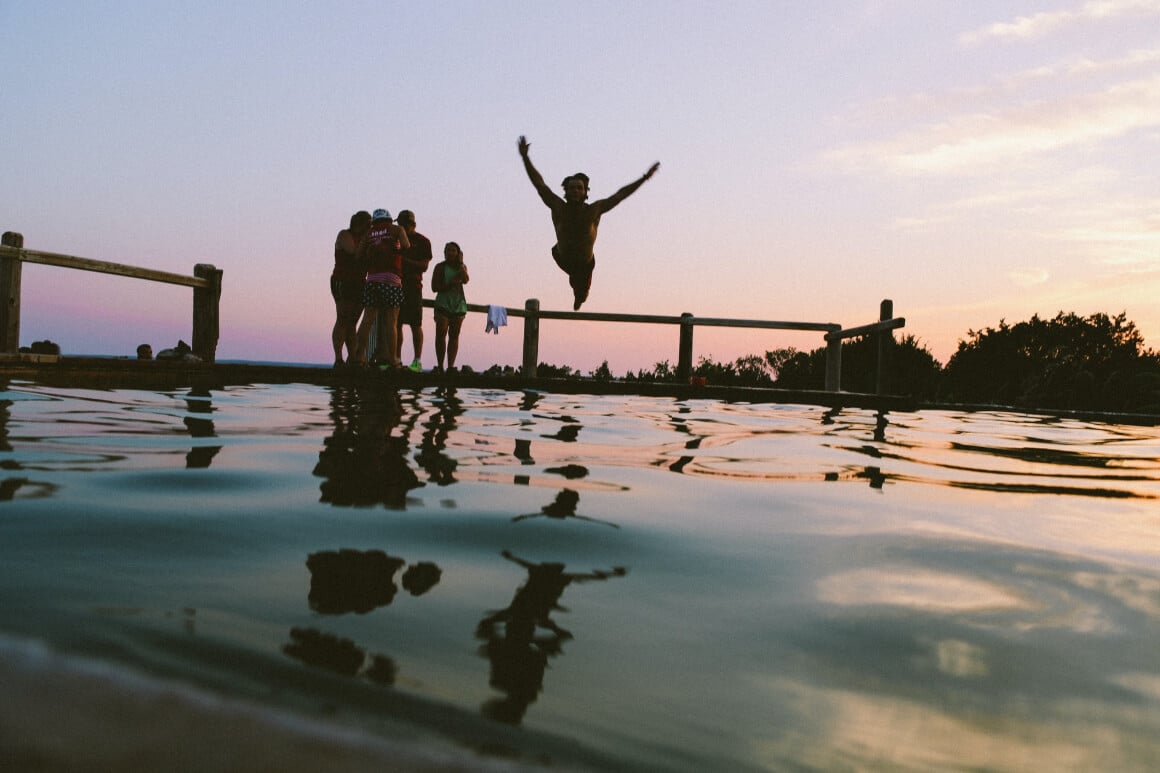
When dolphins are at your bow or flying fish are putting on a show, it’s nice to turn to someone else and say, man , this is a crazy life, hey? Besides, fresh fish is always better shared.
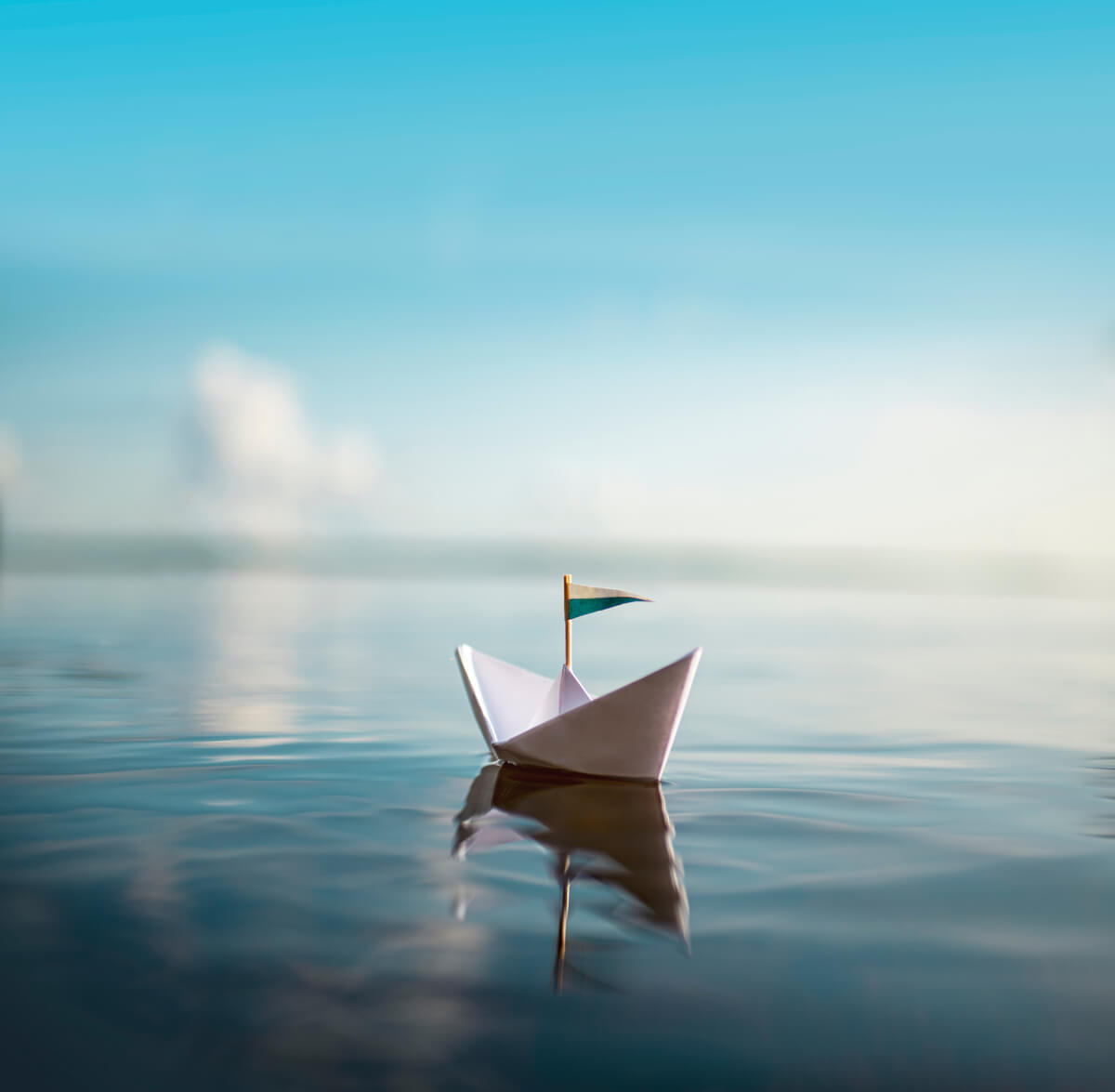
Beware the crew dynamic though! This is nothing that can’t be solved with solid communication (oh boy, will boat life teach you about clear communication). It’s just something to think about.
People that are drawn to the boat life often are offbeat, alternative, super-intelligent, annddddd have big personalities. You throw them all into close confines found on boats and you have a recipe for some conflicts.
So, to crew or not to crew?
Personally, I think we’re stronger together than we are apart . BUT, you need to be honest and aware of the dynamics. Play to your strengths and be accepting of others – and your own – weaknesses.
The boat life has a way of putting everything in perspective.
Staying Healthy While Sailing the Caribbean
Perhaps surprisingly, living on a boat can be difficult for your health. It isn’t always that easy to get fresh fruit – especially in the outer islands. Fun fact: the reason bananas were superstitiously bad luck on boats is likely because they set off other fruit and make them ripen/go off early.
And it’s hard enough trying to keep fruit fresh onboard even without bananas!
Obviously, fresh fish is there – if you can catch it. 😉 Often though, sailing in the Caribbean will lead to some creativity in the galley. Lean into other cruisers – we’ve all got our recipes for one-pot meals and salting fish and making various types of bread!

If you can swim or dive every day then you’re halfway there to staying on top of your physical health. Usually, there’s some way on the boat to be able to do pull-ups and pushups. Most of my exercise came from doing a solid hike at least once a week while making sure I swam and dived every day.
Food is fuel, so eat well. And like anything in life, but especially when sailing in the Caribbean, work hard and play harder!

Things go wrong on the road ALL THE TIME. Be prepared for what life throws at you.
Buy an AMK Travel Medical Kit before you head out on your next adventure – don’t be daft!
Every first-time sailor of the Caribbean waters has questions – and we’ve got answers!
Is it safe to sail around the Caribbean?
The Caribbean is very safe in terms of robbery and petty theft. Tourists, sailors, and backpackers are rarely going to run into problems amongst the islands. The exception to this is the piracy concerns off the coast of Honduras and Venezuela. In terms of weather though, the sea can turn quickly and become quite unforgiving. Always watch the charts and play it safe.
What is the best time to sail in the Caribbean?
December – June is your best bet. During this period the skies are clear, the winds are fair, and conditions are dreamy!
How big should my boat be to sail the Caribbean?
Well, this depends on if you’re living onboard or only onboard for a couple of weeks. Typically liveaboard sailors will report anything under 32 ft in length to be too small to live on permanently. Most cruisers live on a boat in the 37 – 45 ft range. However, if you’re only weekend sailing or on a short trip much smaller boats might work perfectly!
When fresh ceviche with a side of conch blowing at sunset calls – you know it’s time to get your ass out to the Caribbean.
The sailing season here is something stories are made of. Yes, you’ve got some grouper to dive with, lobster to eat, and jungles to hike. You’ve reggae, jerk chicken, chill vibes – and rum punch. 😉
But you’ve also got to deal with the weather and the sea almost constantly. You end up praying a little to King Neptune and watching the tides more closely than we all perv on celebrity gossip. If you are sailing with other crew, then you’re in for both the time of your life and the challenge of your life.
Ultimately, it’s all worth it. The boat life is one that will fast track your personal growth and show you some extraordinary moments that are exclusive to those who pursue a life at sea. Sailing in the Caribbean is no different.
Now, ahoy, and fair winds – I hope to see you out there one day!
- Is Barbados Safe?
- Where to Stay in Jamaica
- Where to Stay in Anguilla
- Best Travel Fishing Rods
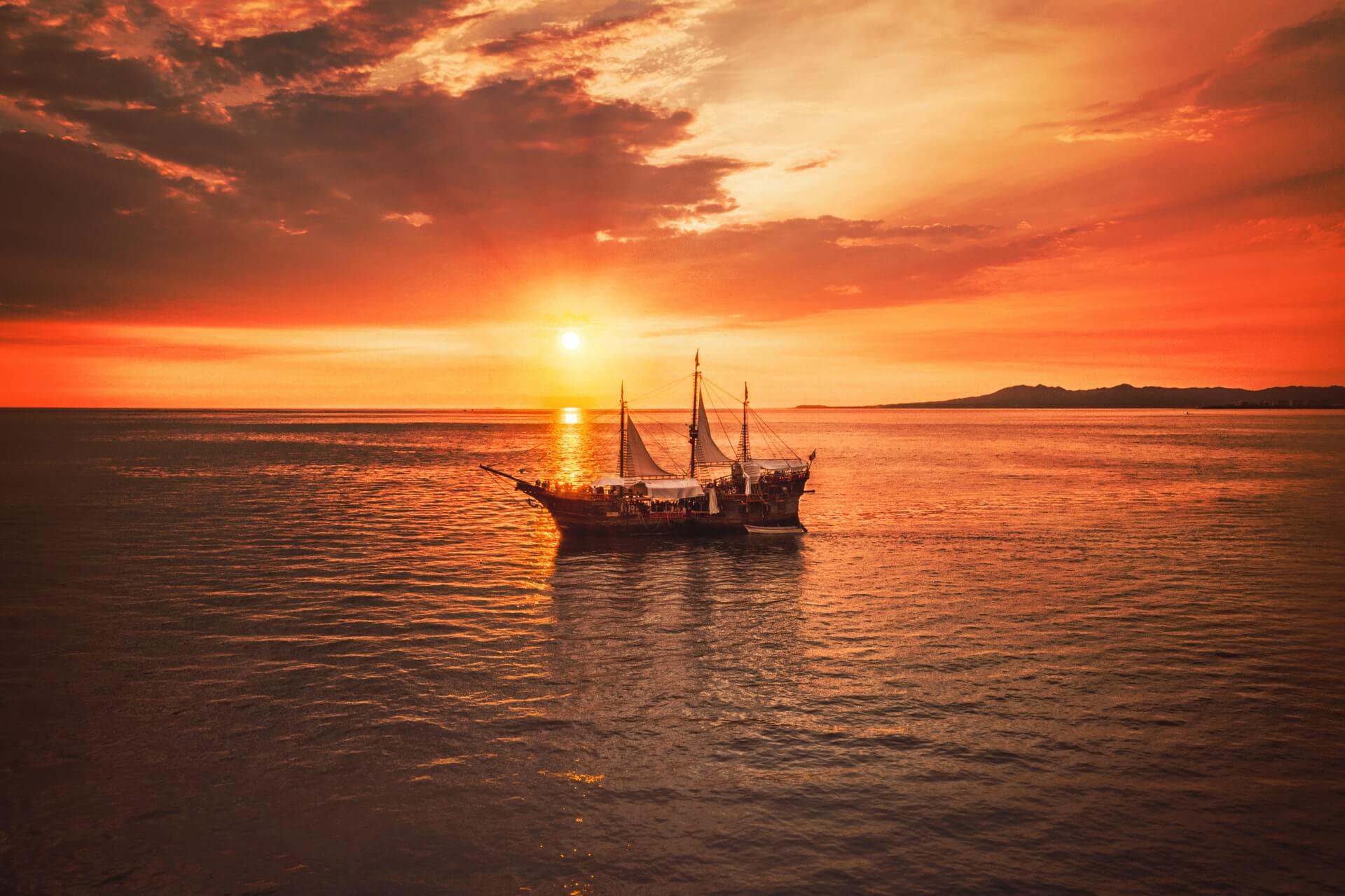
And for transparency’s sake, please know that some of the links in our content are affiliate links . That means that if you book your accommodation, buy your gear, or sort your insurance through our link, we earn a small commission (at no extra cost to you). That said, we only link to the gear we trust and never recommend services we don’t believe are up to scratch. Again, thank you!
Indigo Blue
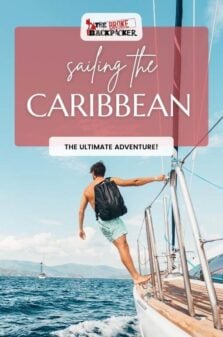
Share or save this post

This has been my dream for so very many years! None of my friends or family want to come along though ?
I have advanced incurable cancer, and a boat- and I want to live out my days sailing the Caribbean alone.
Leave a Reply Cancel reply
Your email address will not be published. Required fields are marked *
Save my name, email, and website in this browser for the next time I comment.
Notify me of followup comments via e-mail.

IMAGES
VIDEO
COMMENTS
Landside positions on the charter side are for charter brokers and central agents, according to Ann McHorney, founder and director of Select Yachts, a Fort Lauderdale, Florida-based yacht charter, management and sales company. "These positions require a good knowledge of yachts, logistics, maritime regulations and, of course, computer skills.".
Yacht jobs in the Caribbean have a lot of variety on offer. There many types of vessels sailing this area, and quite understandably so - it is right up there as one of our top 10 picture-perfect places to work. The islands are home to vibrant and healthy marine and coral life, making it popular for scuba diving and snorkelling.
Docking fees will vary depending on the marina you choose, and repairs can be expensive if you're not handy with a wrench. All told, you can expect to spend around $2000 per month if you're living on a sailboat in the Caribbean. This is just a rough estimate, and your actual costs will vary depending on your situation.
Chief Engineer required 45m SY Busy charter yacht - currently in the Caribbean Summer 2024 they will cruise the... March 15, 2024. Captain. Faststream Yacht Crew is excited to present the opportunity for a Captain to join a highly desirable 50m Sailing Yacht.... March 14, 2024. 2nd Stewardess
Mates at Sail Caribbean sail on their home boat with teenagers aboard 50′ sloops or 43′ catamarans in the British Virgin and Leeward Islands. ... The OM will work closely with Sail Caribbean's Director, Sailing Director, and Program Directors. As a member of our land-based staff, the Office Manager is the main link between the New York ...
Living in the Caribbean isn't quite as cheap as most people expect it to be. It isn't going to be crazy expensive, at least it doesn't have to be. You can get a pretty nice marina slip in the Caribbean for about $1000 a month. This is going to get you some security, some decent amenities, and a nice location.
Report job. 22 Yacht Jobs in the Caribbean jobs available on Indeed.com. Apply to Auto Appraiser, Sales Representative, Chef and more!
Caribbean: To work on a boat cruising the Caribbean it is advisable to have both a Schengen and B1B2 visa as some of the Islands still fall under European and US dependency. It is also highly advisable to have a MAXI passport or many spare pages in your passport for a Caribbean season as there are immigration controls and entry and exit stamps ...
Most likely if you are aiming for a Caribbean season, unless you are American or Canadian you will need a B1/B2 visa. We can assist you with B1/B2 Visa applications, and you will need to submit the application to a US-embassy in Europe if you are looking for yacht that will do the crossing and to find a yacht job to work in the Caribbean.. 4. Be in the right location to find a yacht job to ...
Roxy and Phil are two newlyweds in their early 30's who decided to leave behind their life in Boulder, Colorado, for a life at sea aboard their 47-foot sailboat, Sonder. Below, the pair details just how they prepped for their maritime remote-work lifestyle, what it takes to live on a sailboat, and a seven-day diary of their voyage from the British Virgin Islands to Sint Maarten and the ...
17 Caribbean Yacht Jobs jobs available on Indeed.com. Apply to Marine Technician, Restaurant Manager, Regional Sales Director and more! ... Hybrid work (2) Remote (1) Pay. $27.50+/hour (15) $35.00+/hour (12) $37.50+/hour (10) $42.50+/hour (6) $60.00+/hour (3) Job type. ... Emerald Sail is a growing yacht charter broker.
How to Find the Right Boat to Work On Yacht deliveries can range from taking a neglected 32-footer built in the 1960s from Bermuda to Nova Scotia in the dead of winter (which I have unfortunately experienced) to sailing a sparkling new 70-footer in the warm Trade Winds of the Caribbean, island hopping your way around some of the most beautiful sailing grounds in the world.
The best cruising guide for sailing in SVG: Chris Doyle's Sailors Guide to the Windward Islands. 4. Grenada. The Hog Island anchorage is very popular. The anchorage at Sandy Island is one of my favorites. Grenada is one of those Caribbean sailing destinations where many sailors spend months or even years.
The best boat for Caribbean island-hopping has space for you and your crew, good storage for food and water, is seaworthy, and comfortable at anchor. Some good monohulls include the Bavaria 32, Beneteau 331, and Jeanneau Sun Odyssey 42 DS. For catamarans, consider the PDQ 36, Manta 40, and Leopard 44. This is a broad list, and there are many ...
Sailing in the Caribbean is a sailor's paradise where you are guaranteed to create memories that will last a lifetime. Just imagine exploring over 5,000 islands, reefs and cays and enjoying a combination of line-of-sight sailing and blue water stretches in your monohull or catamaran charter. Not forgetting the chance to discover an array of white-sand beaches, colourful coral reefs ...
A week aboard a two-year-old, 80-foot catamaran with four en-suite cabins and a crew of four, for example, can easily approach $20,000 per person. In the Caribbean, the charter fee is usually ...
With Expedition ON Caribbean, we are sailing across the Caribbean Sea on a classic 36 meter schooner originally built in 1902. We visit almost all the island nations, powered by wind, coconuts and the energy of like minded ocean nomads on board. A hands-on ocean adventure discovering ways to live and travel more simple, wild, and pure.
A yacht charter in the Caribbean offers you the chance to make memories that will last a lifetime. The cost of your sailing vacation in the Caribbean will depend on a range of factors, such as: Where in the Caribbean you choose to visit. We have bases in Antigua, BVI, St Lucia, St Thomas, Grenada and St Martin.
Caribbean sailing promises warm weather and gorgeous water, which is warm enough to swim in year-round. Hurricane season can be a challenge, but the threat is reduced thanks to modern weather technology and careful planning by the sailor. ... The area, which is undergoing constant conservation work, is home to numerous tropical plants and ...
With its 7,000 Islands and 28 Island nations, reliable trade winds and long sailing season, the Caribbean is a region that offers an endless amount of holiday enjoyment. At Sail Connections, we work with all the best charter operators in the Caribbean, sorting through all the available boats and presenting all the best options to suit your ...
A yacht charter in the Caribbean Leeward Islands offers sailors an unrivalled remarkable experience. Enjoy tropical landscapes, pristine palm-lined beaches and azure waters — all the joys of marine life. Sailing over the Leeward Islands may have all the pleasures to offer: the Tropical rainforests, glittering coral reefs, and luxury sand beaches.
Sailing in the Caribbean. On a Caribbean sailing vacation you'll experience your nautical dreams in a unique and thrilling way. Set sail aboard your private charter yacht from one of seven island bases, each with their distinct history, delicious cuisine and culture waiting to be discovered. Whether you want calm, protected waters and short ...
This means you want to enjoy sailing the Caribbean between December - June. Good times are comin'. On the one hand, this presents the perfect opportunity to escape the winter of the Northern hemisphere. On the other, travelling during this time is high season. And this is where you can lean into risk evaluation.